1997-2023, The Entire URWERK Collection Explained
Exploring one of the most fascinating and creative independent watchmakers of the last 25 years.
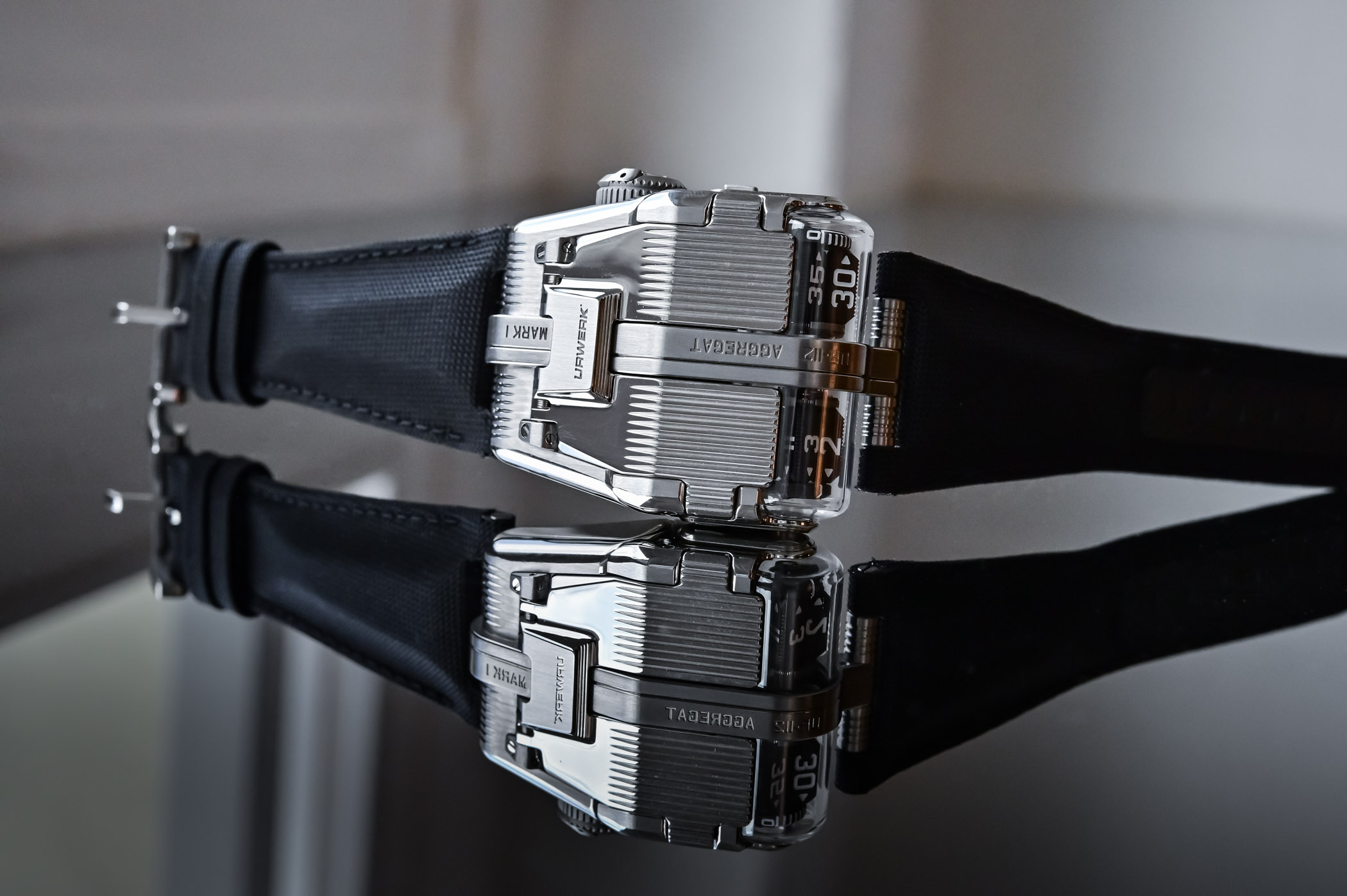
Felix Baumgartner and Martin Frei, the visionary founders of Urwerk, deserve tremendous praise for their exceptional contributions to the world of horology. Their combined talent, innovation, and artistic vision have propelled Urwerk to the forefront of avant-garde independent watchmaking. Baumgartner’s technical expertise and relentless pursuit of pushing boundaries have resulted in groundbreaking timepieces that challenge conventional norms. His mastery of intricate mechanisms and inventive designs has elevated Urwerk to new heights, captivating watch enthusiasts and collectors worldwide. Frei’s artistic sensibility and creative genius have played a pivotal role in shaping the visual identity of Urwerk. His ability to fuse art with horology has given birth to watches that are technically remarkable and visually striking. His unique design approach has redefined what a timepiece can be, transcending traditional concepts and paving the way for artistic expression in watchmaking. Baumgartner and Frei have revolutionized the industry with their bold and fearless approach to watchmaking. Their collaboration has yielded extraordinary timepieces that blend mechanical precision, artistic aesthetics, and futuristic concepts. Baumgartner and Frei’s contributions have enriched the world of watchmaking, leaving an indelible mark on the industry. Their visionary leadership and unwavering pursuit of excellence continue to inspire and shape the future of horology.
And it all “started at parties with my cousin, artist Christoph Draeger, who had parties with his artist friends in Lucerne and Zurich. We joined these parties with my brother (Thomas Baumgartner), and at these parties, we met Martin Frei” – this is how Baumgartner remembers the days before the early days of Urwerk.
Felix Baumgartner was born into a watchmaking family, so there’s no surprise he followed the tradition – he became a student and then graduated from the watchmaking school in Solothurn in 1995. His grandfather worked as a watchmaker at IWC, and his father, Geri Baumgartner, owned an atelier dedicated to antique clocks. In his father’s workshop, he saw the Campanus (or Campani) brothers’ night clock with the wandering hours display made for the Pope in 1652, which his father worked on – and this clock inspired the very first Urwerk creations.
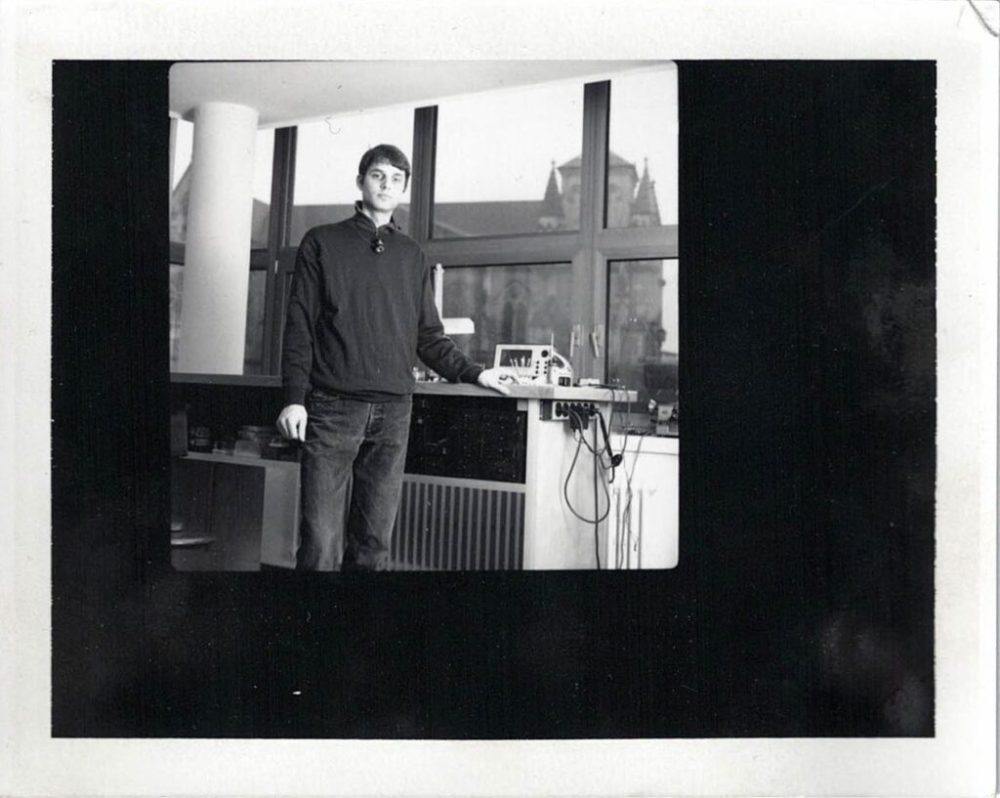
Upon graduation, Baumgartner worked with Svend Andersen, a famous independent watchmaker, at his atelier in Geneva, where Felix was restoring complicated timepieces but was also able to work on his satellite display which would later distinguish Urwerk and turn into a signature feature for Urwerk watches.

The parents of Martin Frei had occupations more distant from the watchmaking profession, but there seems to be logic in how he ended up as a co-founder of Urwerk alongside Felix Baumgartner. His father was an engineer, and his mother was an art scholar. The family must have influenced Martin to express his creativity but also taught him to appreciate science and technology – all useful. His love for art was strengthened by studies of Graphic Design at the School of Visual Arts of Zürich, and later he obtained a Bachelor of Arts degree from the Lucerne School of Art and Design. Martin’s interests were unlimited, and he was particularly passionate about all things artificially cosmic, like Sputnik satellites. And satellites, and not the stars, brought Baumgartner and Frei together.
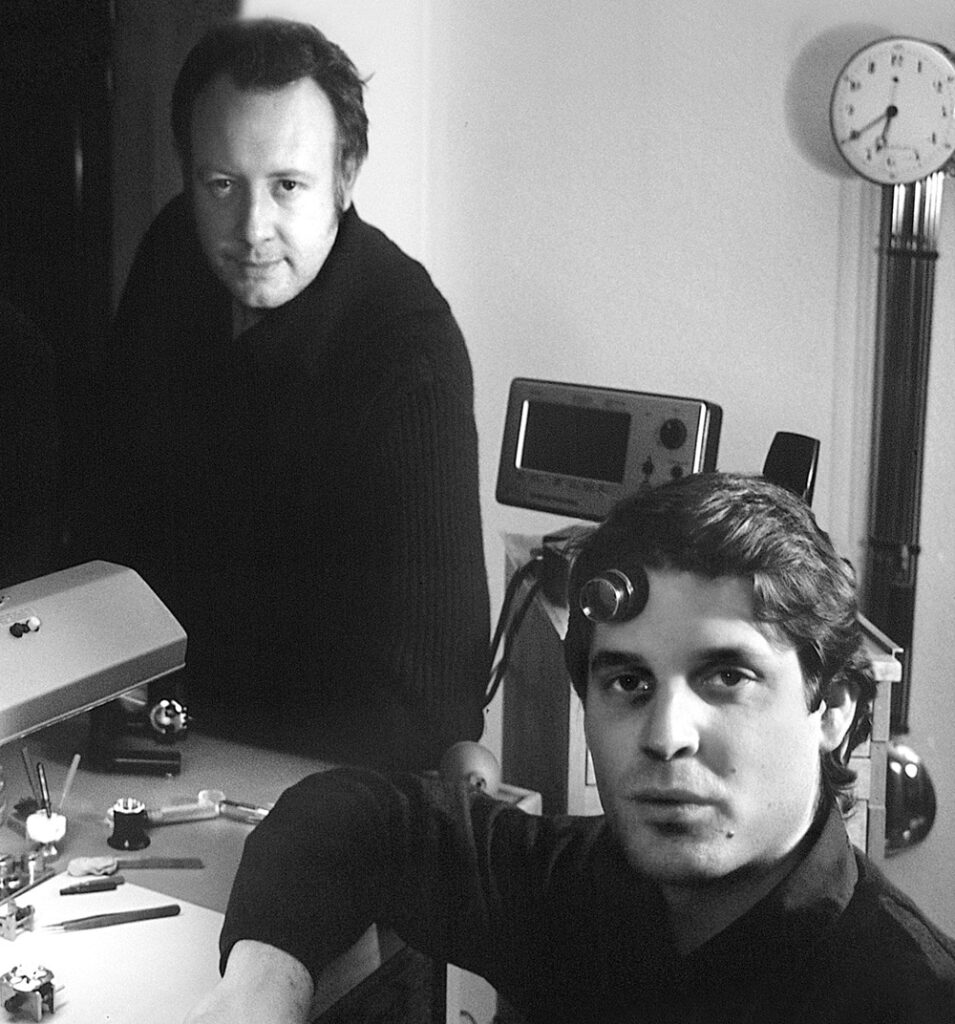
Before meeting Felix Baumgartner at artists’ parties, Martin Frei was introduced to Thomas Baumgartner, already an accomplished watchmaker at the time, by Christoph Draeger, with whom Martin shared an apartment. Also, Draeger and Frei founded United Swiss Artists (USA), an artist collective “always dedicated to inventing conceptual artworks with humour and irony.” At one point, Thomas asked his brother, Felix, to join the party and meet the visual artist Martin. “We started to talk about watches, time, and what watchmaking is today… it was interesting for us to search for the sense, and until today we are searching for the answers“, to quote Felix Baumgartner from his interview with Monochrome in 2016.
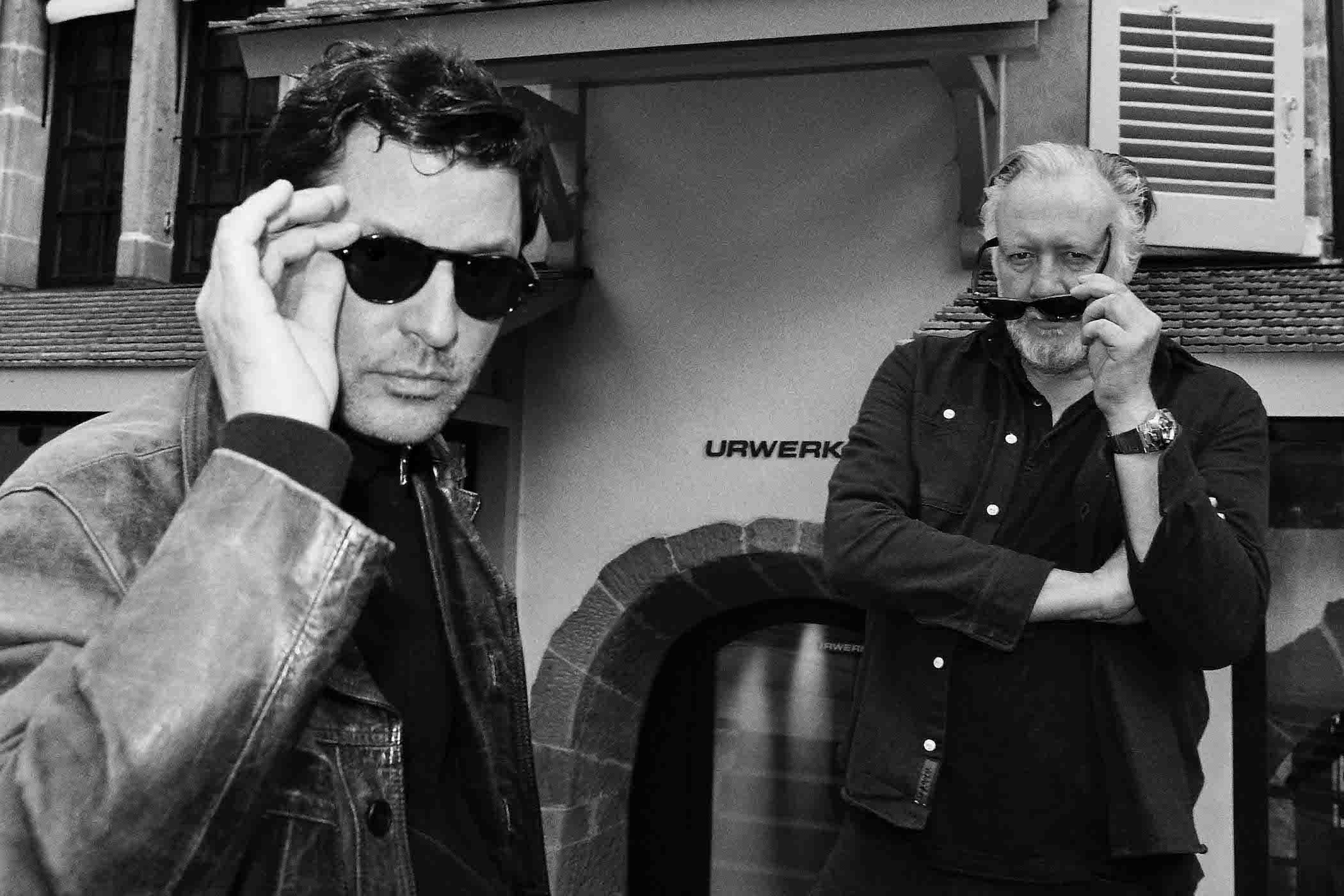
History claims the Baumgartner brothers explained their idea of creating a watch with a satellite system, inspired by the Campanus brothers’ clocks, with rotating hours also indicating the minutes, to Frei. Sometime later, Martin Frei returned with drawings. This was in 1995, and two years later, the Baumgartner brothers and Frei went into the watchmaking business (Thomas left in a few years, though). In April of 1997, at the AHCI (Académie Horlogère des Créateurs Indépendants) booth at Baselworld (Svend Andersen, co-founder of the AHCI, helped Urwerk to secure membership), the company presented its inaugural watches, the UR-101 and UR-102, a contemporary interpretation of the Campanus’s 17th century time display, in a case design inspired by the Millennium Falcon, Han Solo’s spaceship, and Soviet Sputnik, respectively.
To fully comprehend the shock waves sent by UR-101 and UR-102 to the rather conservative watch world, please remember that 1997 was way before projects like Goldpfeil 7 Masters or Harry Winston Opus series happened and brought new independent watchmakers the attention and recognition they deserved. Sure, those visiting the AHCI space at Baselworld in 1997 encouraged Baumgartner and Frei and even bought a few timepieces. Still, Urwerk struggled as a business venture and was on the edge of dissolution for another few years until the release of the most enduring UR-103 line in 2003.
Further on, we invite you to travel time and space in admiration of Urwerk’s evolution. In quickly describing the UR-series we concentrated on what made them distinctive and special, and unfortunately had to leave out plenty of information as each and one of Urwerk’s creations deserve a volume, in hopes that you would go on searching to learn more.
UR-101 & UR-102: Ahead of Time
The inaugural UR-101 had an asymmetrical 38mm yellow gold case with top lugs hidden under the case, while the bottom featured two conventional lugs; the UR-102 had a circular 38 mm stainless steel case with four lug horns on top and bottom.
Both UR-101 and UR-102 models featured a very atypical time display, inspired by the very Campanus brothers’ papal night clock with a silent escapement linked to a pendulum and not a verge escapement (for it was too noisy tick-tocking and disturbed the insomniac Pope’s rest), that impressed Felix while it was fixed in Geri Baumgartner’s atelier. It is expected to mention this old display as an inspirational feature. Still, the escapement solution and the candle in the clock illuminating the display are equally important, as they manifest Campanus’ commitment to search for new ways – as did Urwerk.
The inaugural UR-101 and 102 featured distinctive wandering hours displays. The wandering hour movement (automatic with 44 hours of power reserve, 28,800vph frequency) relied on a carrousel driving an hour module, with discs pointing to the minutes on a semi-circular track. The hours were displayed through an aperture in a disc that travelled a 120° arc, indicating the quarters and half-hours. This simple display was highly intuitive, yet it was unique then and remains so today.
Other iterations were released a couple of years later, like UR-101 in white gold or the UR-102 “Night Watch” with luminous numerals. In 2022, the updated UR-102 Reloaded was presented in a boxed set issued as a 25-piece limited edition with the Titanium and Black versions, and a Cooper Jacoby x UR-102 Reloaded one-of-a-kind creation.
UR-103: The Satellites and the Control Board
The UR-103 series is nothing short of being an integral part of horological history. In 2003, after six years of scrabbling for existence, Urwerk revealed UR-103.01 in white gold – and the 103 series would become the company’s signature model for almost ten years. Urwerk’s innovative approach to representing time and watch design is remarkable. The futuristic, alien case, measuring 50mm long, 36mm wide, and 13.5mm thick, was virtually flat along the edges, from the wide lugs at the top to a curved slope at the bottom, and it featured an oversized crown resembling a rocket engine, at the top. The display ran along the bottom edge, designed for easy reading while driving, with wandering hours somewhat similar to the UR-101, with the pointer on each satellite to indicate minutes along a 90° track.
In contrast to the original Urwerk calibre, the UR-103 was a hand-wound and operated at a frequency of 21,600vph. It employed four satellites for the hour indication, attached to an ultralight titanium cross. On the first satellite were the numbers 1, 5 and 9; on the second 2, 6 and 10; on the third 3, 7 and 11; on the fourth 4, 8 and 12. However, the “dial” of the early models was hidden from view; with the introduction of UR-103.3, the time discs could be viewed more through a U-shaped window, and later the case got a large window through which the entire Maltese cross arrangement could be seen.
Nearly as exciting and revolutionary was the caseback, with what Urwerk called a control board with a set of interactive features. It comprised the overlapping 15-minute and seconds subdials synchronized with the main dial, a retrograde power reserve indicator, and an external fine adjustment screw to regulate the movement.
As you can imagine, the UR-103 was produced in a range of styles and iterations over the years. In 2004, Urwerk introduced UR-103 Junkers, designed with the Junkers aeroplane and mind, with the appropriated engravings by Jean-Vincent Huguenin, with a slightly larger aperture for the time display. The UR-103.3 Targa (2005) featured a window big enough for all four hour discs to be seen; from then on, most UR-103 variations featured the Targa aperture. The 2006 UR-103 Blackbird came in a platinum case with a black Plasma-Enhanced CVD coating, and the same year saw the introduction of a limited to 50 pieces edition of platinum UR-103.05 and the diamond-set limited edition of UR-103.06, 10 pieces.
UR-103.08 TiAlN with the case in TiAlN-coated stainless steel marked 2007, with UR-103.09 in white gold or red gold and UR-103 Hexagon in a black platinum limited edition of 10 pieces released in 2008. 2009 Urwerk presented UR-103 Edition Speciale Art Deco with Art Deco design and UR-103T Tarantula in a fully open AlTiN-coated stainless steel case, with ARCAP cross. In its final year, 2010, UR-103 appeared as UR-103T Mexican Fireleg AlTiN steel or gold case and movement with orange markings and UR-103T Shining T, in AlTiN gold case and movement with ARCAP and titanium movement components. The UR-103 Phoenix in a white gold case hand-engraved by Jean-Vincent Huguenin, produced for the Only Watch in 2011, became the final piece in the collection.
UR-202: The Winding Regulator
The UR-202 Turbine Automatic was not the first watch in the 200-family, introduced by Urwerk in 2007 with the release of UR-201. The concept that worked so well with the UR-103 series, with an unusual case design, hours indicated by rotating elements and minutes track at the bottom of the case, was present, but it was a very different watch. The case was heftier than previous Urwerk watches, 45.6mm x 43.5mm and 15mm thick, with three flat sides on top, left and right and a curved edge at the bottom. The rocket-engine crown had its position at the top between the lugs, and the overall aggressive shape of UR-202 got it nicknamed Hammerhead, following the tradition started a year earlier with the introduction of UR-201 Black Shark for its black PE-CVD platinum attire.
A large sapphire crystal allowed a good view of the workspace. The three-sided revolving satellite element held cubic-like hands with hour numerals, similar to the four-sided design idea of the UR-103, with each of the three arms marked with four numbers. Through the middle of this orbiting and revolving hour satellites, stuck telescopic minutes hands, capable of adjusting their length to follow the minute track sectors, via high precision ‘transporters’ that control the variable length of the minutes’ hands. UR-202 provided moon phase information (power reserve on the UR-201 model) and day/night indication dial-side, above the minute track.
While UR-201 kept the control board featured in the UR-103, now it showed an oil change indicator to mark three years between maintenance and a linear 100 Year Plus scale for total hours of movement operation, with the fine-tuning screw enlarged and in the central position. However, with the UR-202, mow powered by an automatic calibre, Baumgartner and Frei presented a unique winding regulator system, replacing the control board. Two miniature turbines visible on the back of the UR-202 acted as air compressors, with a switch to select the appropriate function – normal for the free spinning of turbines, braking of the winding rotor and reducing winding efficiency by approximately 35% on demand when the watch owner is in a playful mood or stopping winding altogether, blocking the turbines and the rotor.
Over 200 years ago, clockmakers used air friction to regulate the speed of chiming clocks; the technology was later updated to regulate the chiming rate on minute repeaters. This innovation (UR-202 being the first watch to control the winding with air pressure) is remarkable, demonstrating how deeply Urwerk creations are rooted in traditional watchmaking. Add the user-operated Urwerk fine-tuning screw is, in fact, an invention from the pocket-watch era., not to mention the Campanus brother’s papal clock display. But all these powerfully manifest how wonderfully Urwerk employs modern-age technology available to watchmakers, with tolerances on some components reaching 1/1000 mm.
The UR-202 was less prolific than the UR-103 series. Apart from the Hammerhead, there was a White Shark limited edition of 12 produced in 2010 as part of the Rare Species project with Paris and Singapore retailers, and more notably, the UR-202S, nicknamed Full Metal Jacket, to highlight the first-ever Urwerk bracelet, made in cooperation with Maspoli, with two versions matching the case material. Still, the UR-202S holds significance for another reason, though. The S in the model name is for stripes that embellish the dial, and they were created using the first 5-axis CNC machine acquired by the watchmakers. A considerable investment made manufacturing most of the needed components in-house possible but also provided Urwerk “with priceless flexibility and quality control”, explained Felix Baumgartner at the time.
UR-CC1: Linear, Part I
Refrain from letting the simplicity of the old car-like dashboard indications fool you. The UR-CC1 King Cobra (2009) was inspired by the Patek Philippe ref. 3414 prototype, made by Louis Cottier and designed by jeweller Gilbert Albert in the 1950s, but until Urwerk, no other watchmaker could present a production wristwatch with true retrograde linear displays.
The watch, the idea for which was born in the company’s early days, featured two horizontal indications displayed by two cylinders: one for the jumping hours, and one for the retrograde minutes. The top of the case revealed the seconds indicator showing it two ways, with a rotating disk displaying the seconds digitally and linearly. Research, development, production and testing to ensure that the rotation and instant fly-back of the large hour and minute cylinders is achieved without compromising precision timekeeping took over three years.
The watch with the automatic winding regulated by a “fly brake turbine” pneumatic shock absorber was 45.7mm tall by 43.5mm wide and 15mm thick. Urwerk produced 25 pieces of the King Cobra in brushed grey gold and 25 other pieces in black gold, both with titanium case backs, with the Black Cobra in grey gold treated with AlTiN (Aluminium Titane Nitride), base in PE-CVD treated titanium and White Gold editions added later.
UR-203: Welcome to The Show
The UR-203 (2010) was a special black PE-CVD platinum edition in the 200-series, with just 20 pieces produced by Urwerk, and remarkable for it has exhibited its micro-mechanics. Baumgartner and Frei had to redesign the model to allow this mesmerising view. The satellite module had to be revisited, and “The horological challenge with this complication was to develop a complex mechanism with the minimum of components to ensure its reliability and longevity,” said Felix Baumgartner. Ultimately, the UR-203 satellite module with the carousel, hour satellites, telescopic minute hands and dial were only 3.57 grams, 65% less than the UR-202 module.
The watch indication included the hours by satellites and minutes by telescopic hands, oil change alerting and the 150-year horological odometer to report the total number of years the movement had been in operation. Also, the UR-203 featured the regulated automatic winding system, first introduced in the UR-202, with a switch to control the air pressure generated by the turbines to determine the winding rate.
UR-110: Satellites in Battle Formation
In 2011, the Grand Prix d’Horlogerie de Genève Jury awarded the Design Watch Prize to the UR-110, introduced by Urwerk earlier the same year. “The beauty of the UR-110 is in its apparent simplicity. We imagined time as a ‘silent journey. There are things happening on the dial that are not obvious at first glance. Everything looks normal; however, they are everything but.” these are the words of Martin Frei. Normal certainly gained new meaning when Urwerk co-founder spoke. The new watch did have the orbiting satellite movement with wandering hours indicators, each satellite armed with an arrow-shaped “torpedo” to indicate the time passing the 60-minute track – on the right side of the sizeable spaceship-looking case, 47mm x 51mm x 16mm.
The concept was similar to the UR-201, only within the UR-110, the central piece with arms rotated clockwise, the hour satellites turned counter-clockwise, with torpedo pointers always in battle-like parallel formation. The complex structure under the sapphire crystal exhibited astonishing performance, with the “central carousel providing stability and equilibrium to the whole complication, the system of planetary gears assured parallel rotation of the three hour satellites orbiting the dial, and the three counter-rotating hour modules were each mounted on a planetary gear, rotating counter-clockwise to offset the direction of rotation of the central carousel,“ the brand rushed to explain the intricacies of the movement at the time of launch.
The UR-110 featured small seconds, the oil change alerting and the day/night indicator, on the dial base, with hovering satellites in fly-by. The new UR-9.01 movement operated at 28,800vph, drew energy from a single barrel with just 39 hours of power reserve and was wound uni-directionally, with rotor movement regulated by double turbines.
UR-110 saw many versions, with abbreviated designations providing hints about materials used to craft the case and the bezel. There was UR-110 AlTiN, limited edition ZrN, RG, TTH, ST, Pt, PTH, and the UR-110 Eastwood (2015), with ebony bezel and a tweed strap, with fabric selected by tailor to celebrities, Timothy Everest. The last of UR-110 series, the Bakelite unique piece, was produced in 2021 and sold at auction benefiting the Swiss Red Cross.
UR-1001: The Uber-Watch
The Urwerk UR-1001 (2011), also known as the Zeit Device, was an extraordinary and complex timepiece that showcased Urwerk’s exceptional engineering prowess and innovative design approach, which combined a sense of industrial aesthetics with futuristic elements.
UR-1001, with its 106mm x 62mm x 23mm AlTiN treated steel case with titanium elements, was a heavy pocket watch weighing over 400 grams, and it came with hand-made, heat-blackened steel links featuring bespoke Urwerk clasp with carbineer closure. As it is always with Urwerk, everything has a reason. “With the Zeit Device, we have allowed ourselves a carte blanche and created a larger playground for our imaginations . . . and then filled it with all of our complications and indications,” said Felix Baumgartner. And so, the UR-1001 could provide each of the limited number of owners with the following information. The hours were shown via the revolving satellite hour complication and retrograde minutes via the retrograde minute hand fixed to a sprung ring around the circumference of the satellite complication. This ring was pushed along a guide rail by the hour satellite, with star cams to release the minute hand when it reached the 60-minute mark, jumping back to zero to meet the next satellite hour. Months and dates were indicated by a familiar-looking satellite complication, an in-house developed revolving satellite calendar, with the month automatically adjusting the last date on the calendar complication according to whether it has 30 or 31 days, by an intervening finger of the Maltese cross.
The three Maltese crosses were mounted on the date wheel with 93 teeth, each corresponding to a satellite of four months at the opposite end of the date wheel. Below the calendar satellites, there was a running seconds three-handed indication on a 120° dial, displaying 3 x 20 seconds. Also, dial-side, the UR-1001 featured day/night and power reserve indicator sub-dials. The back side (once the cover was opened) revealed 5-year oil change alerting, a running-time indicator for 100 years and an additional linear running-time indicator for 1,000 years. An aperture allowed some view of the UR-10.01 movement.
In 2011, UR-1001 Zeit Device was announced to become available in AlTiN treated steel case with titanium elements as a limited edition of 8 pieces. In 2015, Urwerk added the UR-1001 Titan version, with the case crafted in titanium, to be worn on a wrist on a black leather strap designed by Urwerk.
UR-210: Pedometer for The Wrist
Urwerk produced the UR-210 model from 2012 to 2020, and the watch, being already the fifth family in the UR-Satellite collection, inherited the defining features from previous Urwerk creations and added incredibly amazing new ones. The UR-210 UFO-like case became more prominent and more significant than the UR-110 or UR-200 series, measuring 43.8mm x 53.6mm, 17.8mm thick. The centrally mounted construction holding wandering hours indicators pointing to a minute scale that returned to the bottom of the case position was present, only looked different, massive and even menacing. The reason was the superfast retrograde system with the oversized, hi-tech minute hand on top of the central satellite-holding element. Upon reaching the end of the minute scale, this retrograde minute hand could return to its docking position with the next satellite in less than 1/10 of a second, with a loud click, as if to ensure the owner realized the new hour had arrived.
Another new and equally important feature was the so-called activity indicator, the winding efficiency indicator. The difference between the watch’s energy released and the energy created in the last two hours was calculated and reported. The needle in the upper left part of the dial showed green and red areas, with the hand pointing to the green signalling that the mainspring was being sufficiently charged and the red zone advising you to get up and move your wrist. “I like the idea of a fusional interaction between an owner and their watch. The UR-210 displays the time, provides a visual spectacle of its operation, and helps its wearer learn a little more about themselves: it’s a pedometer for the wrist,” explained Martin Frei.
The interaction between the owner and his watch was and still is the subject Baumgartner and Frei like to pursue. Come to think of it, the power reserve of just 39 hours, so familiar to Urwerk calibres, and the power reserve indication, as the oil change alert (not featured with the UR-210), are all ways to ensure the watch gets proper attention. Like the automatic winding efficiency switch on the back of the case to engage twin air turbine regulators, which also had the convenient purpose of reducing excessive wear of the components.
In keeping the tradition of offering a variety of aesthetically distinctive materials used to craft the case, bracelet or strap, the UR-210 appeared in AlTiN, titanium and rose gold, platinum and steel, but also engraved, like the UR-210 Amadeus and UR-210 Dubai by Florian Güllert. There were all-black editions, the UR-210 CP featured a Clous de Paris bezel, and the UR-210 Final became the final reference in the family.
EMC: To Boldly Go Where No One Has Gone Before
The quest for precision and the desire to further learn how an owner interacts with his watch led Martin Frei and Felix Baumgartner to a new sort of creation, the EMC – Electro Mechanical Control. The EMC was announced and presented in 2013, and the following year the watch was awarded both the Innovation Watch Prize and the Mechanical Exception Watch Prize at the Grand Prix d’Horlogerie de Genève.
The Urwerk EMC was a mechanical watch with some electronics inside to measure chronometric performance and report it to the owner. The optical sensor, mounted on the balance wheel, registered the oscillation rate. This sensor was connected to an electronic oscillator that served as a reference, and the circuit board calculated the difference between the going rate and the reference rate. A precision indicator on the dial side with +/-20 seconds per day range informed the owner of Urwerk EMC whether a tune-up was needed. The practical, user-friendly part – if the watch’s accuracy is off, the owner does not need to take his Urwerk EMC to a watchmaker. A fine adjustment was performed by turning the designated screw on the back of the watch. The EMC’s need for electricity to juice up electronics was answered via a capacitor and a micro-generator with a giant winding handle to power it up.
The EMC started the UR-Chronometry collection, and the watch became the first Urwerk to offer conventional hands to indicate hours and minutes. The EMC had four displays on the dial side, with the precision indicator being the largest one, and also included the seconds subdial, hours and minutes subdial, and the power reserve indicator. The movement with manual winding featured vertically mounted double mainspring barrels, delivering 80 hours of power reserve.
The first edition EMC came in a titanium and steel case, measuring 43mm x 51mm, 15.8 mm thick, and in the next two years, the watch was released in titanium and black coated steel, EMC Black, and in titanium with engraved steel case, EMC Pistol. In 2016, Urwerk introduced a second generation of EMC, the redesigned and improved EMC Time Hunter.
The hours and minutes dial took centre stage, enlarged, and the running seconds got to be displayed on a disc in the upper right, with an 80-hour power reserve indicator located opposite, on the lower left. The precision indicator now featured one hand to display both timekeeping precision (now + or – 15 seconds per day) and – a new feature – amplitude on demand. Since most wristwatch movements oscillate between 220° and 280° for maximum efficiency, balance amplitude indicates whether a movement is working correctly or needs service. “The new EMC allows you to obtain a reliable and accurate piece of data on your timepiece at the touch of a button – information that until now has been the preserve of professional watchmakers,” explained Baumgartner. “Using this information, you can fine-tune one of the most exciting, most jubilant mechanisms invented – the mechanical watch – all by yourself.”
The EMC Time Hunter was launched in January 2016 as two limited-edition sets of just 15 pieces in titanium and steel, one coated in green ceramic. A skeletonized X-Ray model followed in September was also limited to 15 pieces. In 2020, Urwer added the EMC Stormtrooper in a ceramic-lacquered grade 5 titanium and stainless steel case, evoking the armour of Darth Vader’s soldiers and the EMC Desert Sage to the UR-Chronometry collection.
UR-105: Armoured Knights
Despite the designation, the company launched the shield-shaped UR-105, already a sixth platform in the UR-Satellite collection, in 2014, three years after the UR-110. The case shape (with the six elongated bolt heads that attach the bezel to the case) provided the model with its nickname, Knight, and though it looked like a smaller watch when compared to previous Urwerk timepieces, it was 39.5mm x 53 mm and 16.65 mm thick. With this watch, Urwerk brought back the four discs with wandering hours construction, with a central four-armed rotor moving the discs along a minute scale located at the bottom of the dial, with the manually wound movement.
The UR-105M elaborate case had two apertures on the right side to view the power reserve indicator and the running seconds. On the back, as the twin turbines were not needed for a manually-wound calibre, a more legible 42-hour power reserve indicator found its place, along with the five-year oil change indicator and a timing fine-adjustment screw to adjust the rate to match the owner’s needs, with, for the first time, a fine-tuning adjustment scale indicating how many seconds faster or slower the rate adjustment screw has been turned.
The UR-105 M watches enjoy their early retirement: Urwerk released two titanium versions in 2014, UR-105 M Iron Knight with a clean steel bezel and the Dark Night with a black AlTiN-treated steel bezel. The manually-wound Knights succumbed to the Turbine Automatic order in 2015.
The UR-105TA series had similar aesthetics, only powered by UR-5.02 automatic winding calibre, with the winding rate control switch on the back. The rate was regulated by twin air turbines, like those introduced with UR-202, visible on the back of the case, with a central three-position switch. UR-105 TA lacked the power reserve indicator and running seconds display on the side, as there was no oil change alerting and fine-tuning control.
Usual with Urwerk, the UR-105 TA model was produced in several guises, each appropriately nicknamed: Black Orange, Black Lemon, T-Rex Bronze, Clockwork Orange, and Raging Gold. To mark Urwerk’s 20th anniversary and revive the memories from Baumgartner and Frei’s time in New York in 1997, the company unveiled a special UR-105 CT Streamliner edition in titanium and mirror-polished steel or black PVD coated steel, powered by the UR-5.03 movement. It was followed by the UR-105 CT Kryptonite in 2018 and R-105 CT Maverick in 2019, and then the UR-105 TTH, a limited tantalum edition of 12 pieces, which became the last of the Knights in 2021.
UR-106: Ladies’ First
With the UR-106, Baumgartner and Frei expressed their ideas of feminine mechanical beauty, and it is a family of timepieces aimed at women that falls in the UR-Satellite collection since 2015. The new model had smaller proportions, only 35mm x 49.4mm, with a thickness of 14.45mm and was styled accordingly. The case design and layout of the UR-106 was familiar, with the minute track at the bottom, facing the owner, and the crown at the top between the lugs. In line with the romantic approach, the watch used a new calibre UR-6.01 automatic movement (28,800vph, 48 hours power reserve), with a moon phase indicator at the bottom above the 30-minute mark. The satellite hours were revised, but no additional functions were present, with all settings and adjustments performed via the three-position winding crown.
Several UR-106 models were produced; the most notable is the Flower Power, in a steel case set with diamonds, with additional animation on the dial – a central large diamond-set flower with three smaller ones around, filling the space between the hour satellites. Other interpretations included the Black Lotus, in a black coated case set with black diamonds, and the Black Pink, similar but with fluorescent pink lume elements.
AMC: Absolutely Magnificent Creation
The AMC (Atomic Mechanical Control) was a creation of Baumgartner and Frei, where Urwerk’s inevitable connection to the watchmaking past and the avant-garde thinking of the duo became especially evident. Their innovative and, we dare say, historically significant invention won the Audacity Prize at the Grand Prix d’Horlogerie de Genève in 2019.
The development of the Urwerk AMC was inspired and modelled after Breguet’s “Sympathique” clocks with a built-in system that allowed a pocket watch to be automatically set and wound when put in the special compartment of the table clock. The AMC base (master clock) could wind, adjust and regulate the wristwatch, and all operations were mechanical and performed by pins and triggers. The contemporary Urwerk version offered to set the wristwatch with atomic precision – a deviation of one second in 317 years.
In total, four AMC atomic clocks and paired wristwatches (designed very much like the EMC on the outside, but with entirely different inner workings) were made, and three were delivered to clients, with one example still in possession of Urwerk, which the company intends to keep.
UR-T8: Transformers
In 2017, Urwerk celebrated 20 years in business, so it was no surprise that an anniversary timepiece was released to mark the occasion. The new UR-T8 was a big transformer watch, 60.23mm x 48.35mm x 20.02mm, with a case and a cradle. The case could be unlocked, turned over and returned to its place with a few simple manipulations. As a result, the precious watch was hidden from view and protected by a titanium shield with a textured patterned surface or returned to its primary function of telling time and intriguing the public.
The UR-T8 featured the definitive wandering hours complication, with the three-armed carousel in its biggest and most elaborate configuration. Also, the automatic UR 8.01 movement was built with the pneumatic control of the winding system, with the spinning vane connected to the rotor absorbing sudden and violent activity of the rotor while ensuring efficient winding. At the time of the release, Martin Frei explained this anniversary timepiece: “Our UR-T8, of course, recalls the Reverso watches; we have deconstructed the concept to create a genuine Urwerk model. The UR-T8 features all the characteristics that we have made our own: the huge crown, the organically shaped sapphire-crystal glass, the textured case that invites your touch, a strong personality and a recognisable visual signature.“
The initial series of 60 watches were introduced in natural titanium or with a black PVD coating, with seven more extraordinary pieces revealed in the following years. In 2019, the UR-T8 Colibri and its T8 Colibri art knife – each a unique piece, decorated with a mosaic inlay made with hundreds of individual pieces of black-lip mother of pearl, cut into diamond shapes, hand-sorted and arranged to best reflect the light – made in collaboration with the famous Italian master Emmanuel Esposito, was revealed. Also, the same year, Urwerk announced yet another partnership, with an engraver Johnny Dowell a.k.a “King Nerd”, to produce five T-8 Skull watches with the bronze shield engraved with the skull motif. Last but not least, in 2020, the year of Covid-19, for the benefit of the Monaco Red Cross, Urwerk presented a one-of-a-kind UR-T8 Raptor, created especially for the Art in Time shop in Monaco, a boutique for independent watchmakers established at the initiative of Karl Friedrich Scheufele. Johnny “King Nerd” Dowell’s talent was once again called to create this extraordinarily decorated model with two realistic raptor heads engraved.
UR-111: Linear, Part II
The UR-111 (2018) once again demonstrated Urwerk’s desire to continue pushing the boundaries of what we think mechanical watches ought to be. Their beautifully odd creation, the UR-111C, featured two conical displays at the front – the jumping hour on the left and the running digital minutes on the right – and a unique linear minute indicator in between, similar to the one we saw in UR-CC1 King Cobra, with a retrograde function. As if that weren’t enough, there was a digital seconds indicator at the top that used optical fibres to project numbers onto the surface of the sapphire crystal.
Also, the UR-111 introduced a new way of interacting with the watch. There’s no conventional crown. Instead, there are a couple of “devices” for winding and setting. A long fluted cylindrical roller was integrated into the top of the case above and parallel to the winding stem. For winding, you had to roll the cylinder with your thumb. To set the time, you had to pull the lever on the right side of the case and then turn the roller in either direction. The UR-111, powered by a manually-wound movement, was a fantastic exercise in complex micromechanics, genuinely unique, and a typical Urwerk creation despite the lack of trademark satellites.
Initially, Urwerk offered 25 UR-111C watches in polished steel and 25 with a gunmetal finish; later, UR-111C Black and TT iterations were added, and the fully engraved and unique UR-111C Pistol.
UR-100: Philosophical Dimensions
In 2019, Urwerk launched the UR-100 SpaceTime, featuring the iconic orbital hour satellites with minute pointers in a case shape that reminded of the first Urwerk creations, the UR-101 and UR-102. And just like the inaugural Urwerk models were inspired by the clock Felix’s father restored, the SpaceTime drew inspiration from the pendulum clock gifted to him by Geri Baumgartner. The clock, made by Gustave Sandoz for the 1893 World’s Fair in Chicago, did not show time; it showed the distance of the Earth’s rotation at the equator. UR-100 SpaceTime displayed the distance travelled on Earth and the distance travelled by Earth, indicated by the red-arrow-tipped minute pointers on the hour satellites upon passing the 60-minute mark. The indicator on the upper left shows the distance in kilometres that we have travelled based on the average speed of the rotation of the Earth on its axis at the equator, covering a distance of 555 km every 20 minutes. On the upper right, there’s an indication featuring the distance the Earth has travelled in its orbit around the sun, approximately 35,740 km every 20 minutes.
These indications have little practical significance but are of enormous philosophical importance to Urwerk co-founders. “For me, watches have a philosophical dimension. They are a physical and abstract reproduction of our situation on Earth, with the dial representing the equator, simultaneously in constant motion while seemingly stationary for us,” said Martin Frei, chief designer. Felix Baumgartner, the master watchmaker, agreed: “We live in a universe governed by three dimensions — time, rotation, and orbit — that we attempt to measure and master, but what escapes us is this notion of spacetime.”
Urwerk presented two editions at the introduction, the UR-100 Iron (titanium and steel) and the UR-100 Black (titanium and steel with black DLC), both limited to 25 pieces. UR-100 Gold and GunMetal (2020), Electrum (2021) editions followed, and the series tripled in the number of variations with the introduction of UR-100V references, powered by the automatic UR-12.02 movement (modified Vaucher base) with the rotor controlled by a Windfänger airscrew.
UR-220: Carbon-composite Case
The UR-220, launched in 2020, is a successor to the UR-210 model with the satellite-cube hour display, introduced in 2012. The UR-220 looks very much like the 210, with the case dimensions being the same at 43.8mm x 53.6mm, but the new watch is slimmer by 3mm with a thickness of 14.8mm. The UR-220 uses manually wound movement, and the lack of automatic winding mechanism made a slimmer profile possible. The changes to appearance were made very gentle, almost unrecognizable, most notable was the UR-220’s two power reserve indicators in the upper part of the dial, each covering half of the 48 hours provided by a single barrel, and the split mechanism is complicated, built with over 80 components.
Urwerk provided the new watch with a new set of fonts for the numerals, but the difference is not that obvious even when the UR-210 and 220 are laid next to each other. The UR-220 also received the oil change indicator, activated by the pin to start counting 39 months of running time, at expiration the watch needs to be serviced by a watchmaker.
The new model featured a carbon-composite case, a first for Urwerk, made from 81 sheets of carbon, a step away from using metals with coatings. All in all, the UR-220 was a much welcomed and nicely updated version of the watch that was a decade old, with the unmatched satellite-cube wandering hours and retrograde minute hand.
However, Urwerk promises to produce only five pieces of UR-220 per year, and so far, released the UR-220 All Black, SL Azimov, RG Gold and C81 versions, so the “cubes” remain hardly unobtainable.
UR-112: Freedom and Follies
Released in 2021, the UR-112 became another fine addition to the Urwerk’s Special Projects collection, a “laboratory offering horological freedom and follies encouraged.” The model was called Aggregat, and the name was very apt. While the function of precision timekeeping continued to be the important one and at the heart of this creation of Baumgartner and Frei, its implementation was technically complex and required “near-maniac assembly precision.“
“We nicknamed this watch the Aggregat because the UR-112 brings different elements together. From a single source of energy, we power all displays and mechanisms of this UR-112. This force is distributed sparingly, some even “recycled” so that from the digital second at the top of the dial to the dragging minutes and the jumping hours at the opposite extreme, each display receives precisely its required dose of energy with none wasted,” explained Felix Baumgartner.
The UR-112 Aggregat could be seen as a follow-up development of the UR-111C, as the hours and minutes are displayed on the lower front in a pair of sapphire glass cylinders, with Aggregat being more complex as the hours and minutes are indicated by rotating prisms. The hours are on the left and are shown by four prisms bearing hour numerals on the sides and circling a central shaft, making one rotation every four hours, with each prism rotating around its axis in 12, with the hour display “jumping” at the top of the hour. On the right, the minutes’ indicator is rolling continuously (no jumping), and the minutes are indicated by four prisms with five-minute increments, with a scale to the right of the minute prisms for a more precise reading. Interestingly, the hours prisms are driven by the minutes.
You had to unlock the hinged protective cover by pressing the pushers on the case’s sides to see the small seconds display and the power reserve information. The digital seconds were indicated by a disc under a magnifying glass, with five seconds increments. To the left, Urwerk placed the only analogue display on the watch for the 48-hour power reserve indicator.
UR-112 Aggregat was released in black and GunMetal PVD-coated titanium case measuring 42mm x 51mm x 16mm; the watch was powered by UR-13.01 automatic calibre. The UR-112 Aggregat Odyssée and Back to Black editions followed.
UR-120: Splitting Cubes
At the end of 2022, Baumgartner and Frei once again proved that each Urwerk creation is a testament to their unwavering passion, dedication, and commitment to horological innovation. The UR-120 has picked up the vibe of the UR-110. Still, the recent invention kept the recognisable Urwerk look and feel but created an even more dynamic display with the diverging and joining satellite hour-cube indicators action in a case with improved ergonomics and smooth surfaces.
Urwerk’s signature wandering hours look familiar; the satellite carousel moves along the minute sector at the right-hand side of the case. The satellite in position on the minute scale tells the hour and the minute. What is new, and Urwerk should be praised, among other things, for continuing to innovate its avant-garde displays, is that each satellite comprises two cubes that split, rotate, and co§nverge in sequence to display the hours. When the satellite separates open, it reveals rectangular blocks that form a V-shape as if recreating the Vulcan “Live long and prosper” greeting (hand up, palm forward, fingers parted in the middle). Since the most famous Vulcan was Spock, the UR-120 is now known as Spock.
Once separated, both blocks spin on their axis and merge to display the new hour, so the satellite carousel spins on the central axis, each satellite counter-spins, and each block spins on its axis – a mechanical spectacle. The gilded lyre-shaped spring facilitates the splitting and merging of each cube.
The UR-120 steel and titanium case was 44mm long, 47mm wide and 15.8mm thick, made up of two interlocking parts, equivalent to a caseback and a bezel, connected with lateral screws. Also, the case featured articulated lugs. The UR-20.01 movement powers the UR-120; the satellite construction is mounted on a reliable base movement with a propeller-shaped Windfänger on the rotor to moderate the winding rate. As of today, no other UR-120 editions were announced. Live Long and Prosper!
Final Thoughts
Felix Baumgartner and Martin Frei have forged a partnership that perfectly combines technical excellence, boundary-pushing innovation, and artistic expression. Their collaboration has resulted in timepieces defying convention, challenging perceptions, and inspiring awe. The visionary watches born from their shared vision have become icons. Baumgartner and Frei are pioneers in watchmaking, daring to explore uncharted territories and consistently delivering horological masterpieces that push the limits of what is possible. Their extraordinary talent, relentless pursuit of excellence, and unwavering commitment to their craft make them trailblazers in the industry and deserving of the highest praise. We sincerely hope that we have convinced you of precisely that.
For more details, please consult our dedicated Urwerk page here or visit www.urwerk.com.

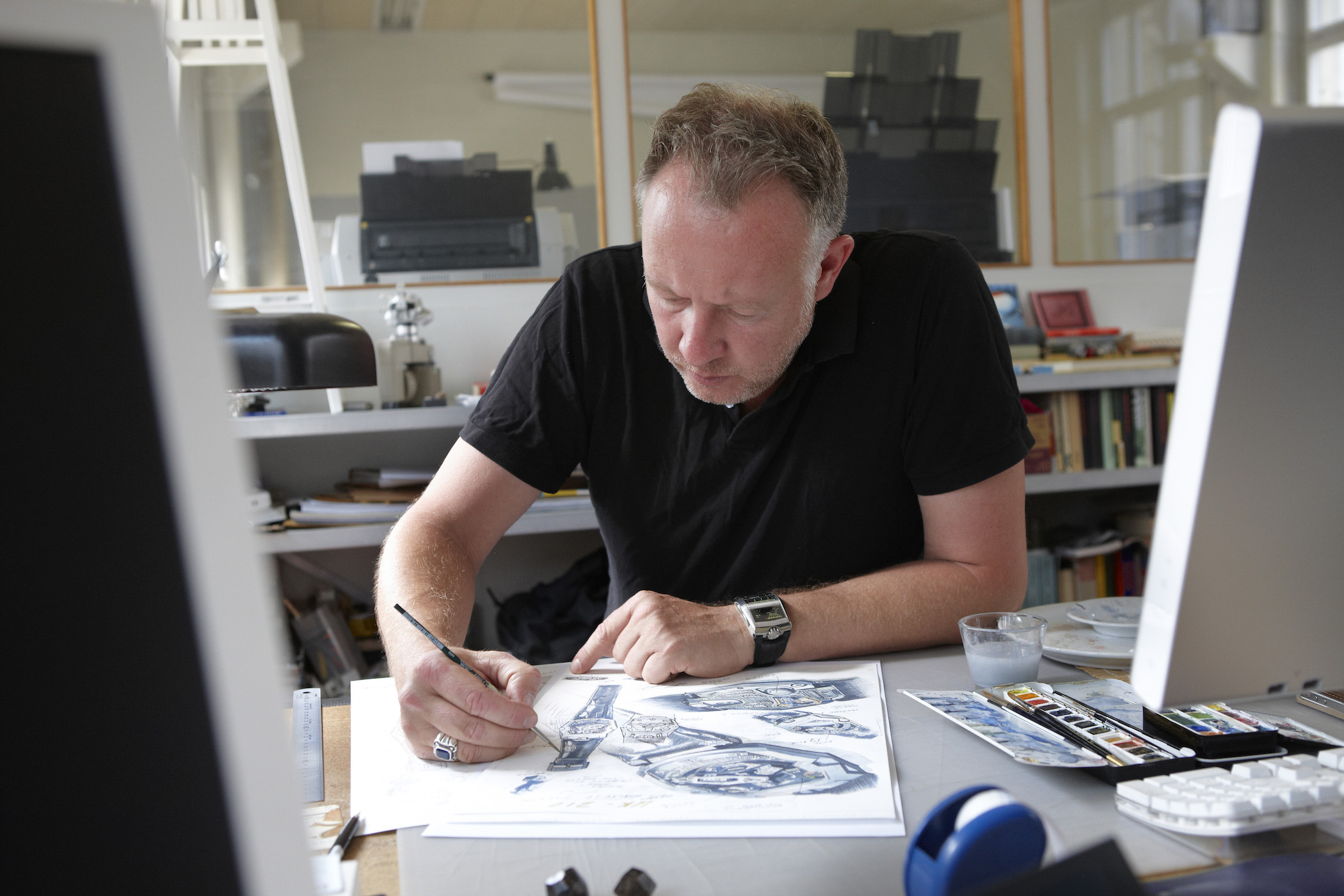


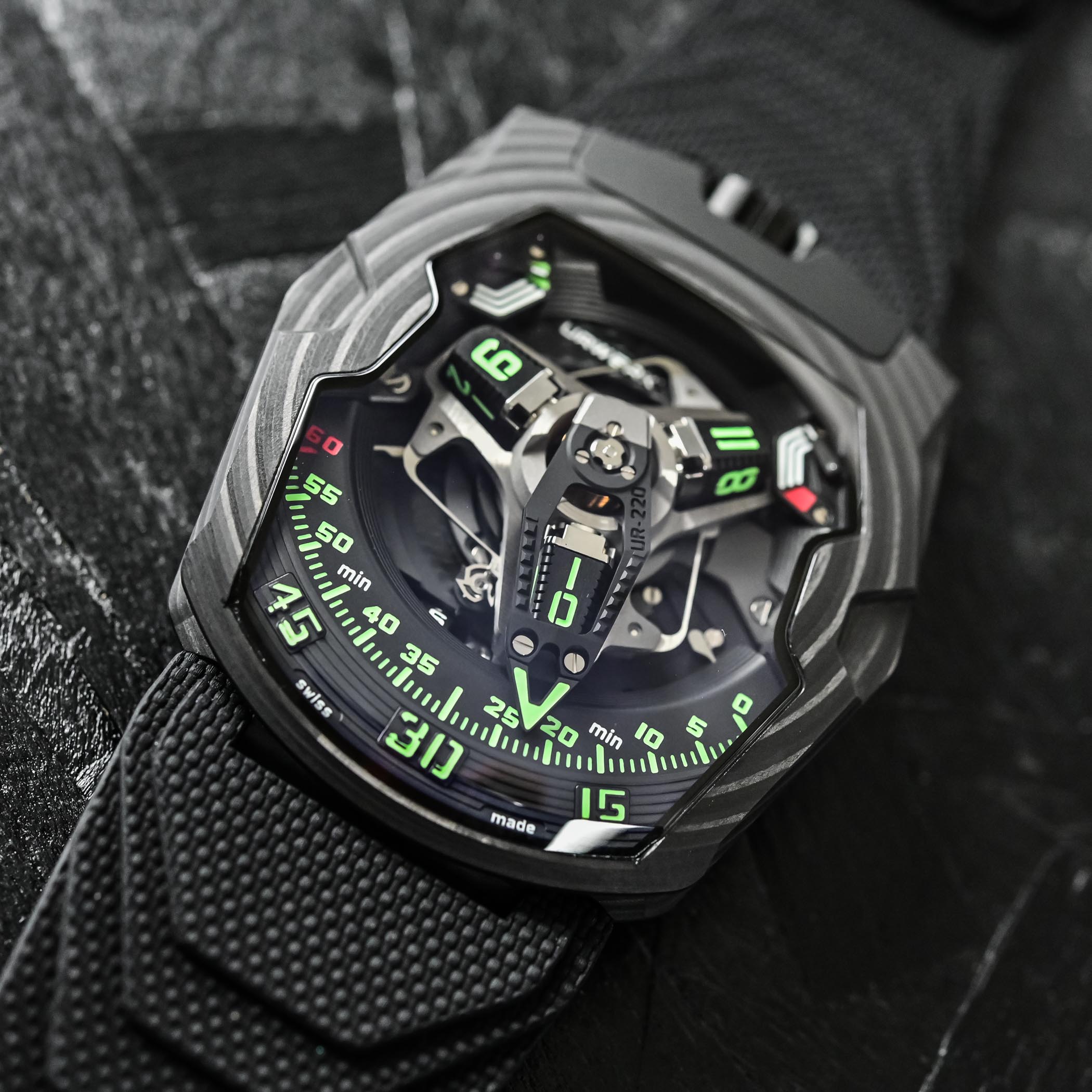
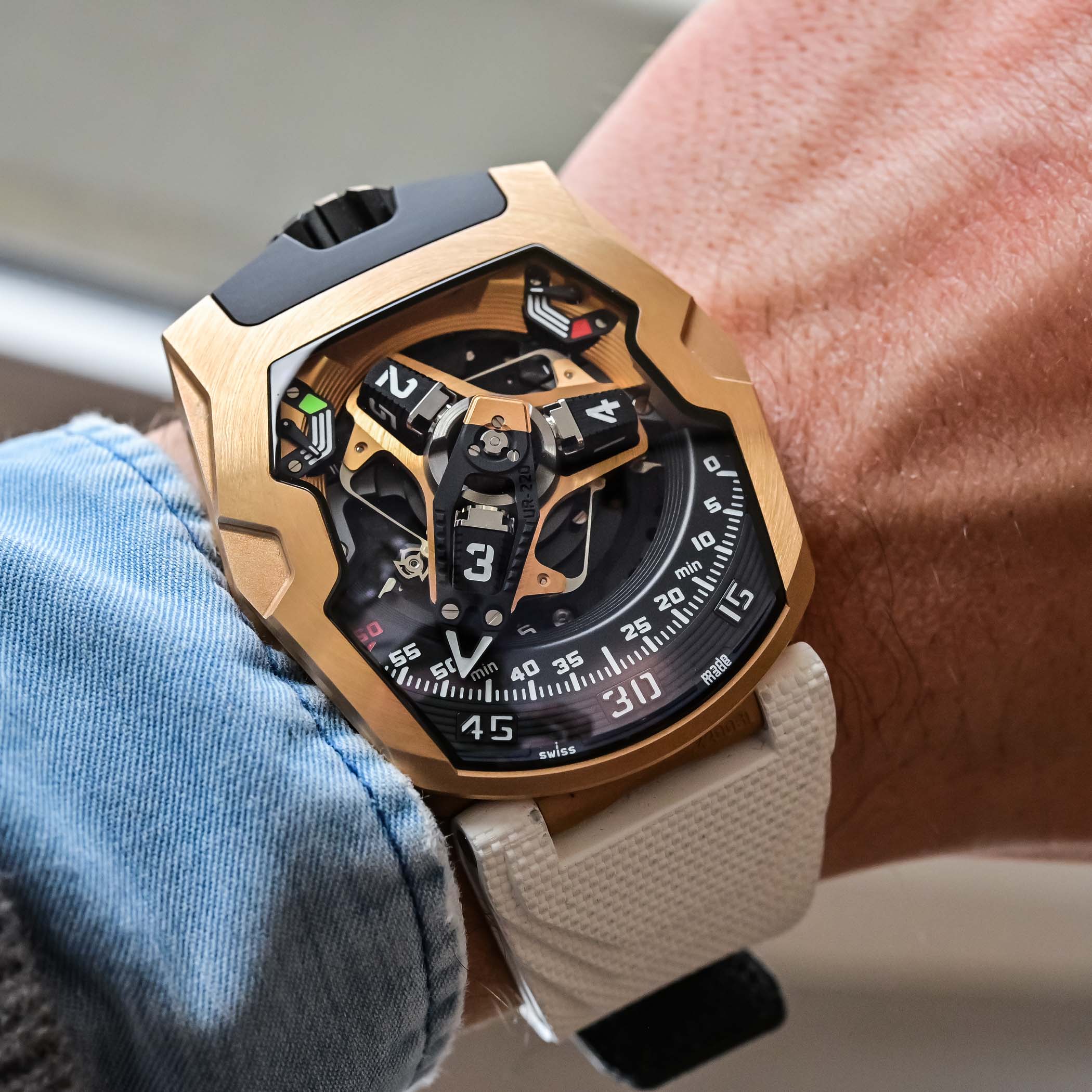

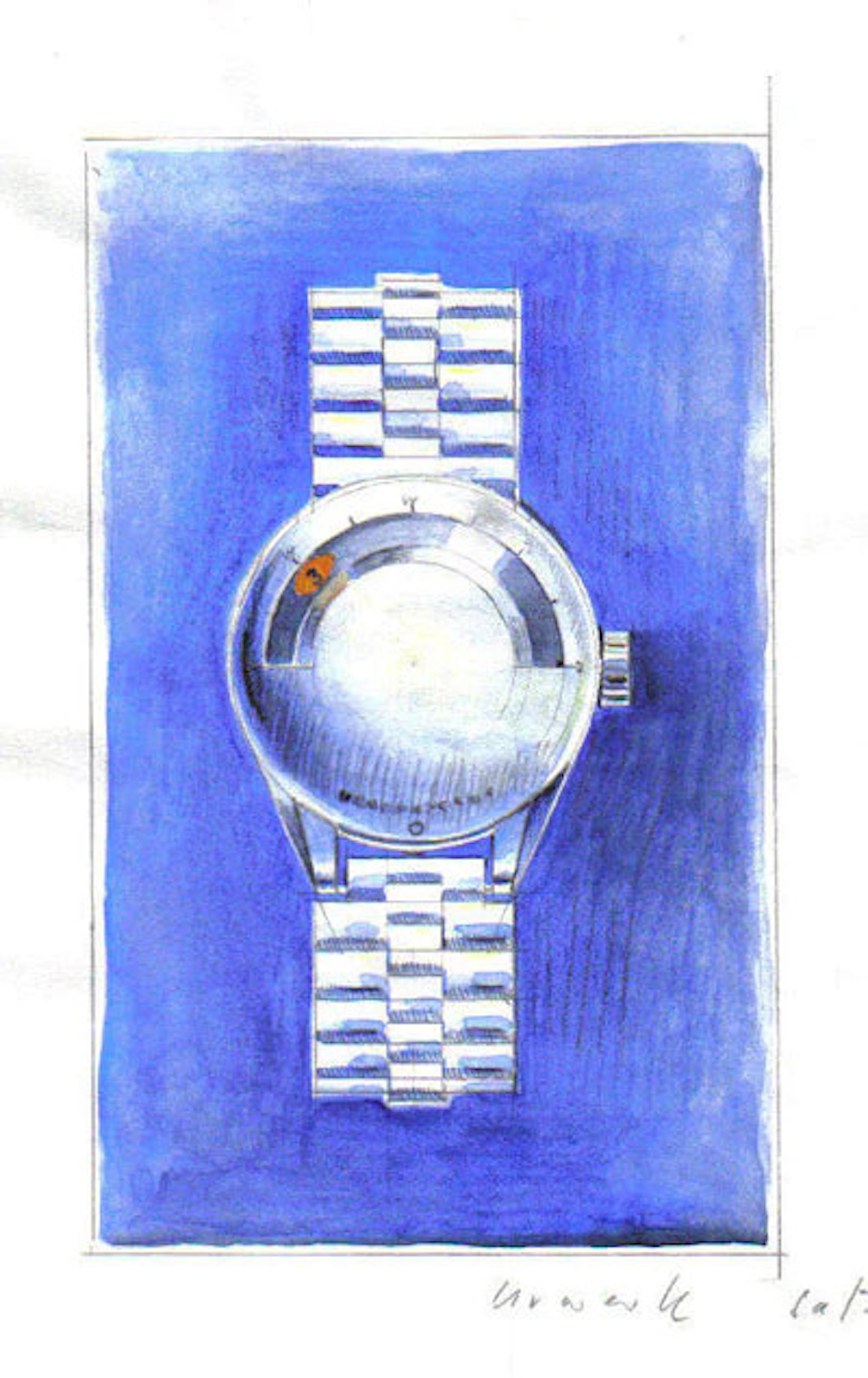

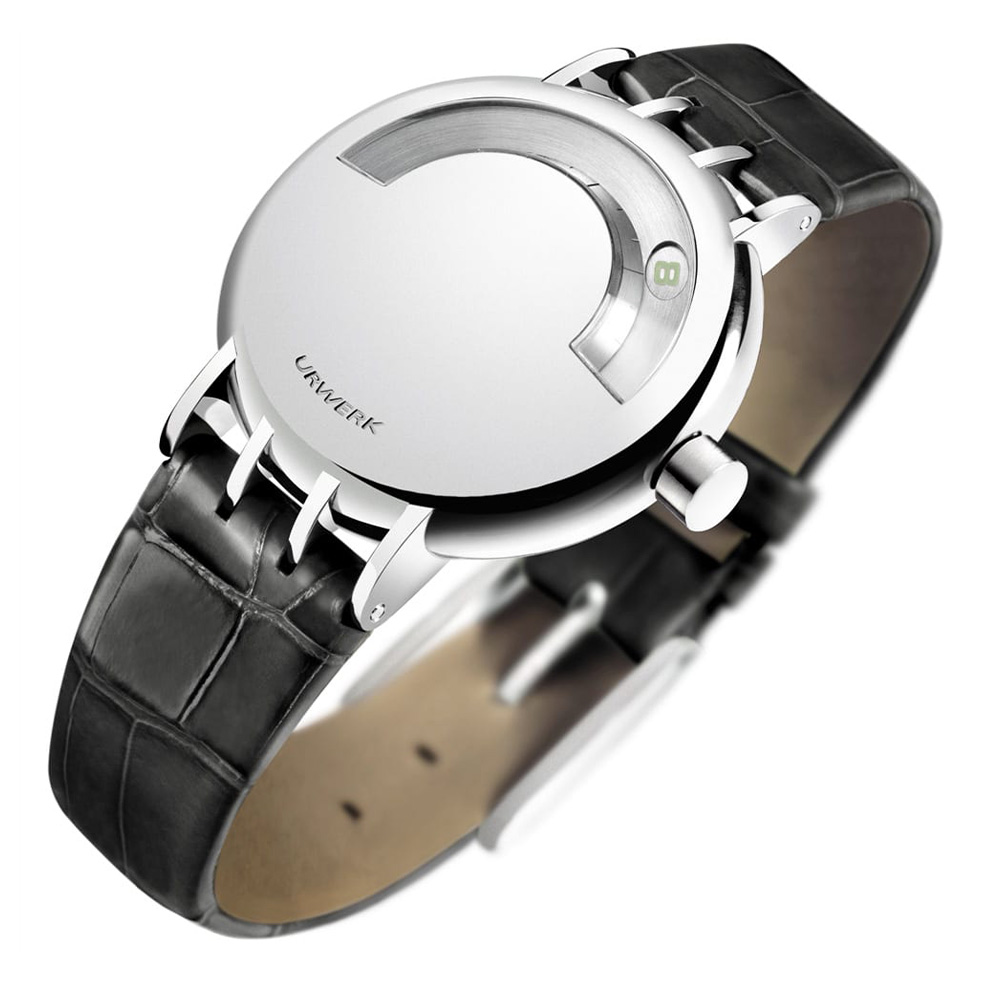
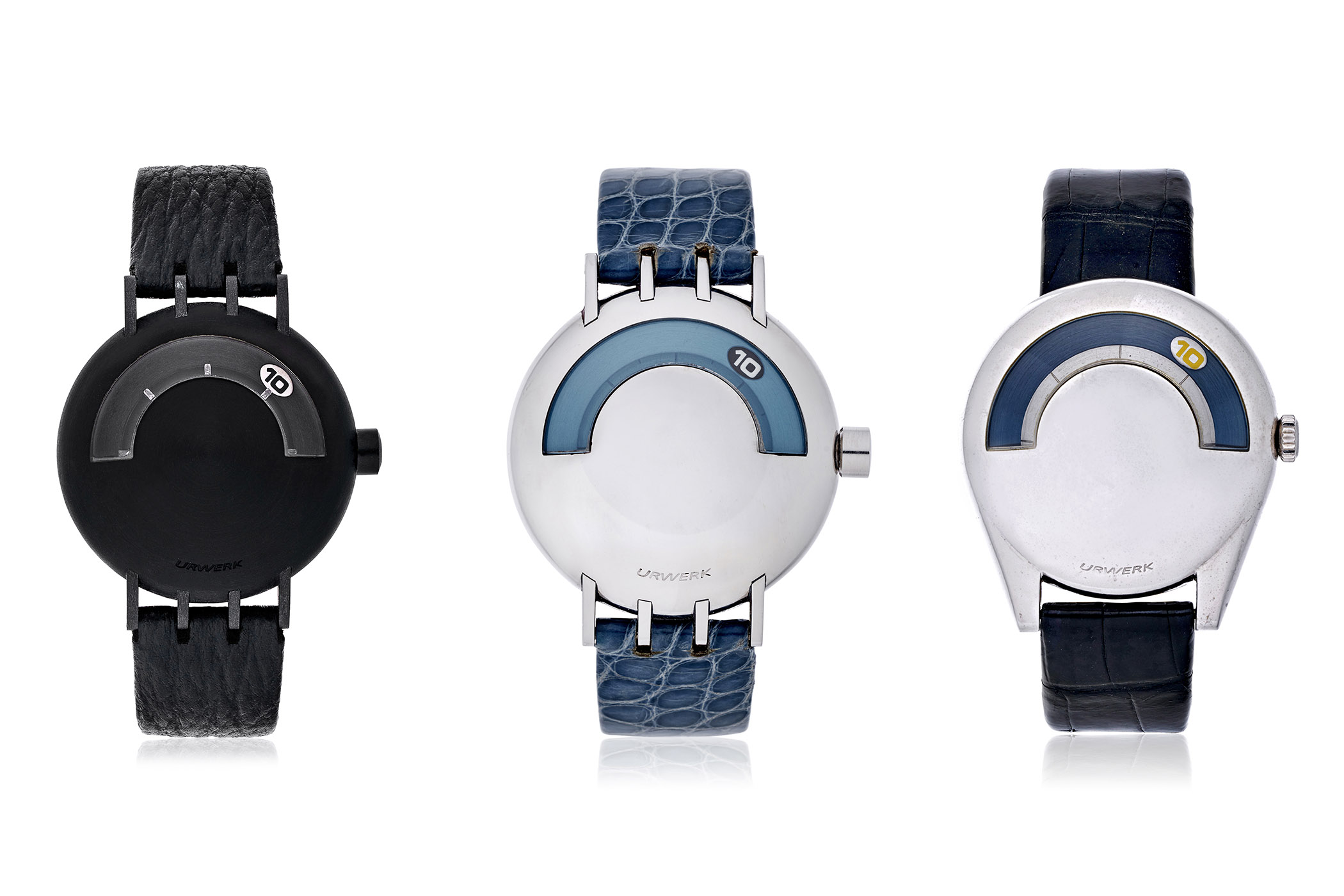
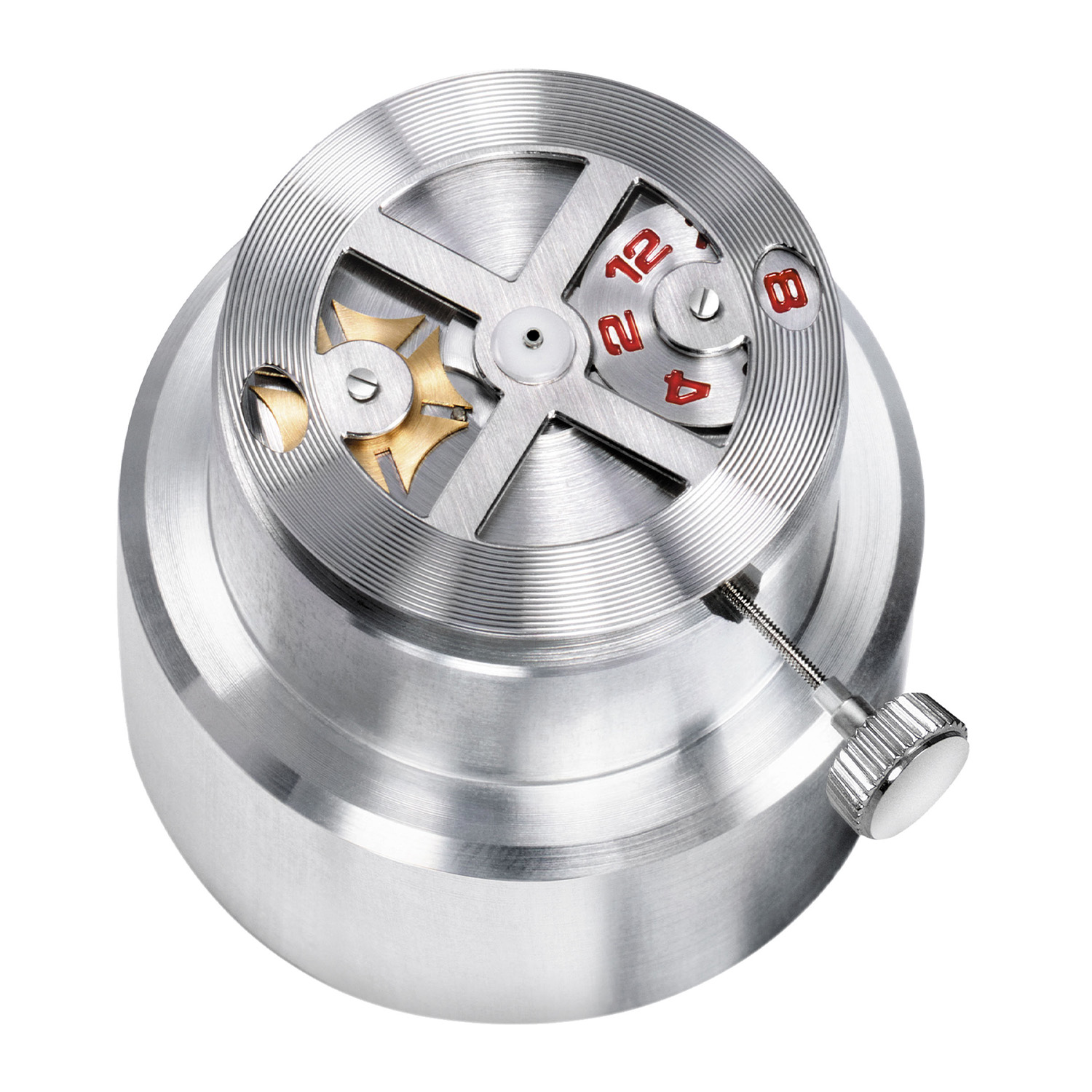
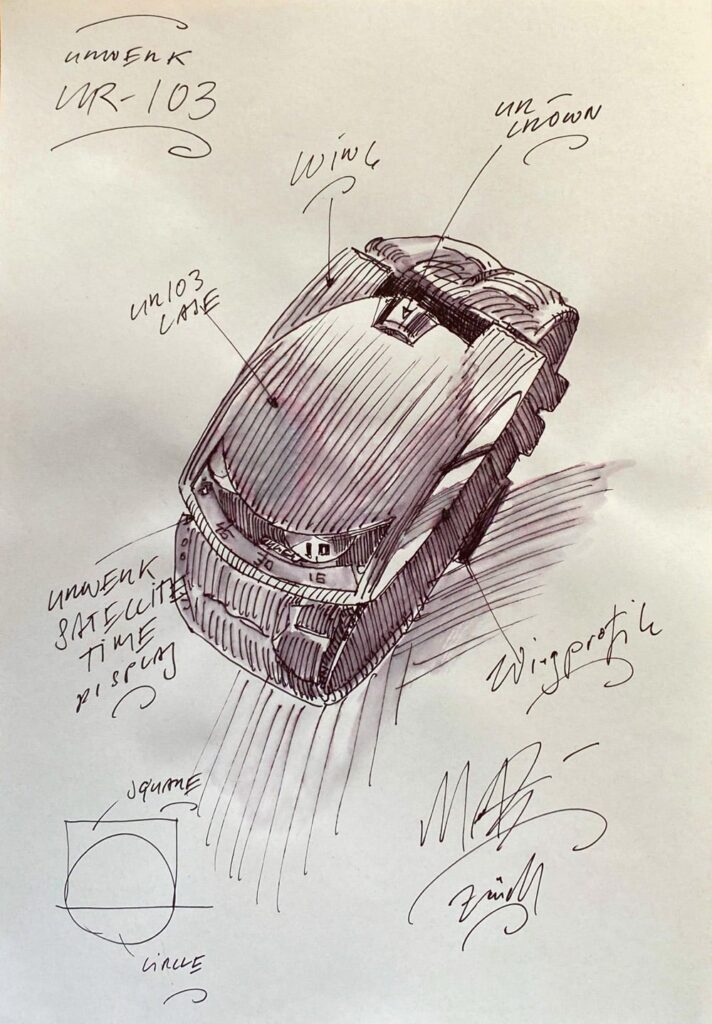
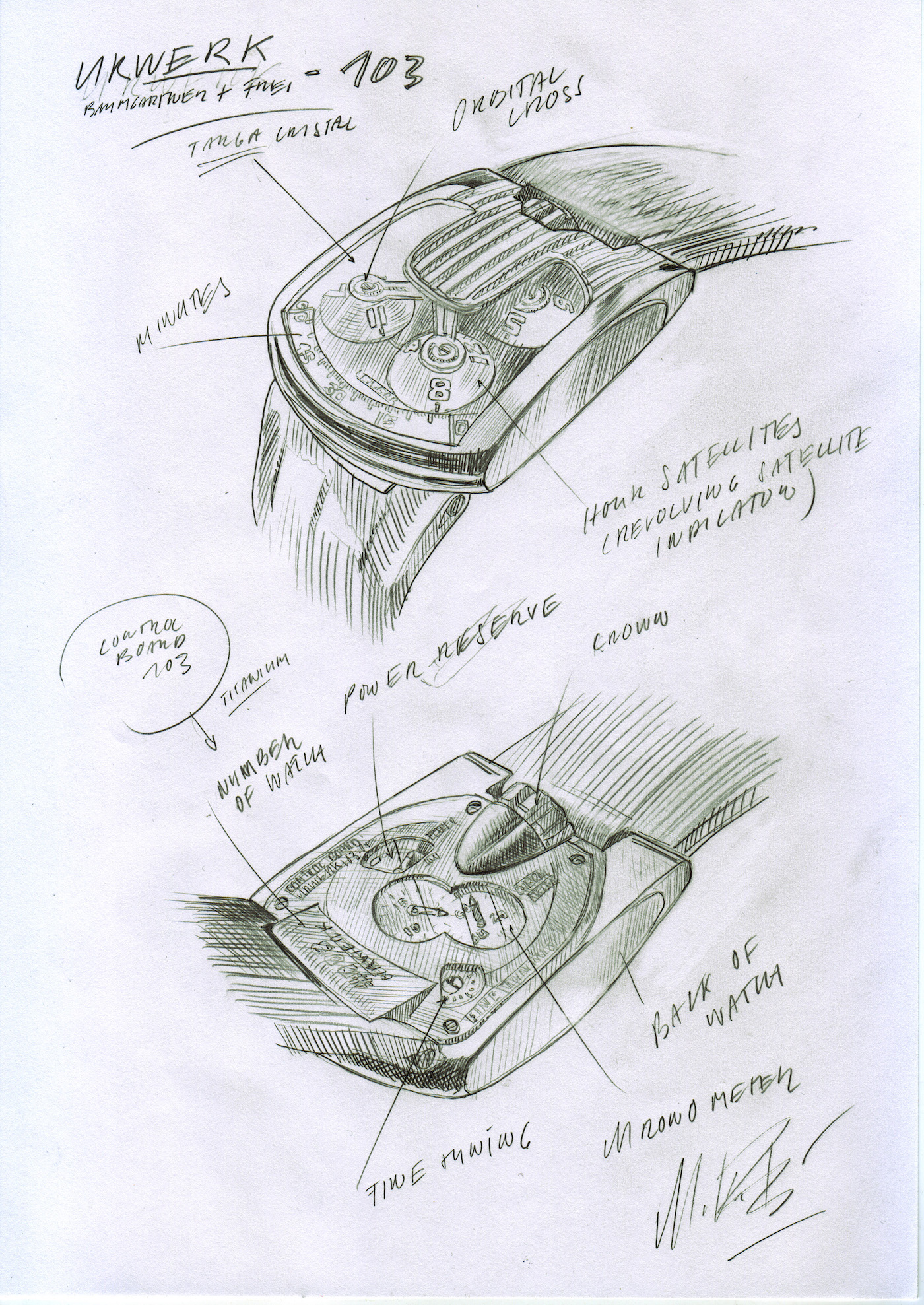
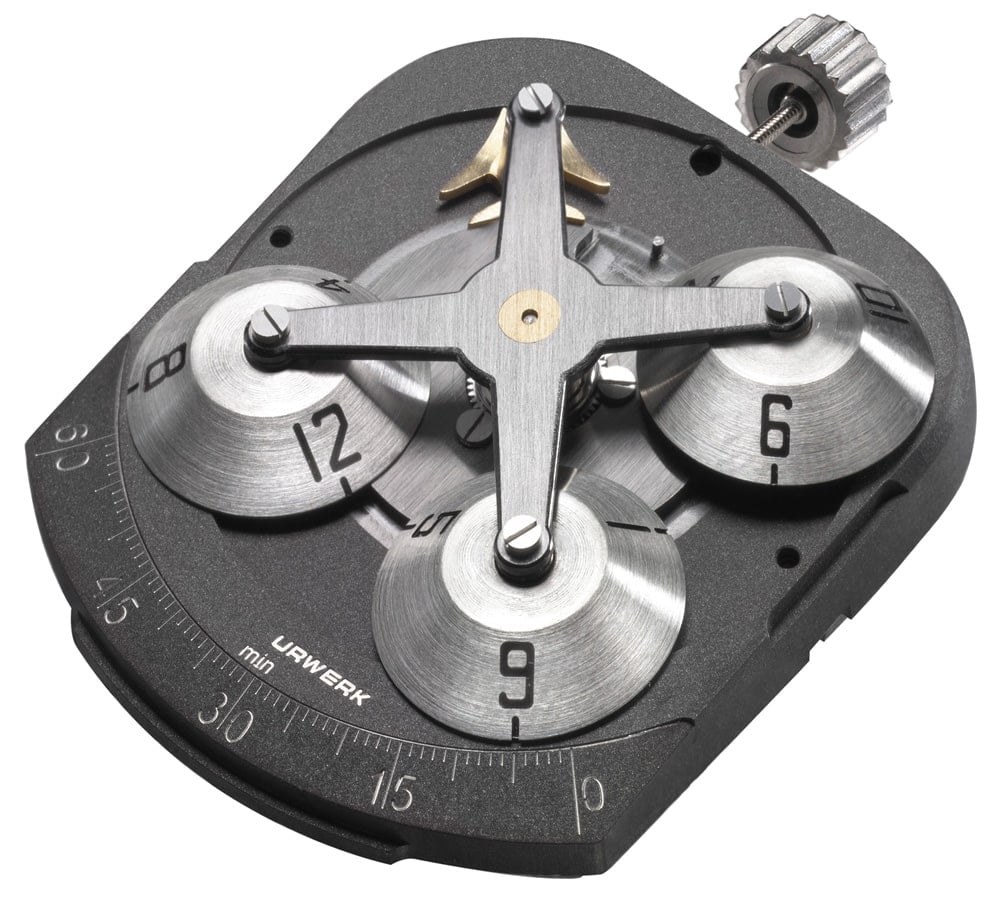
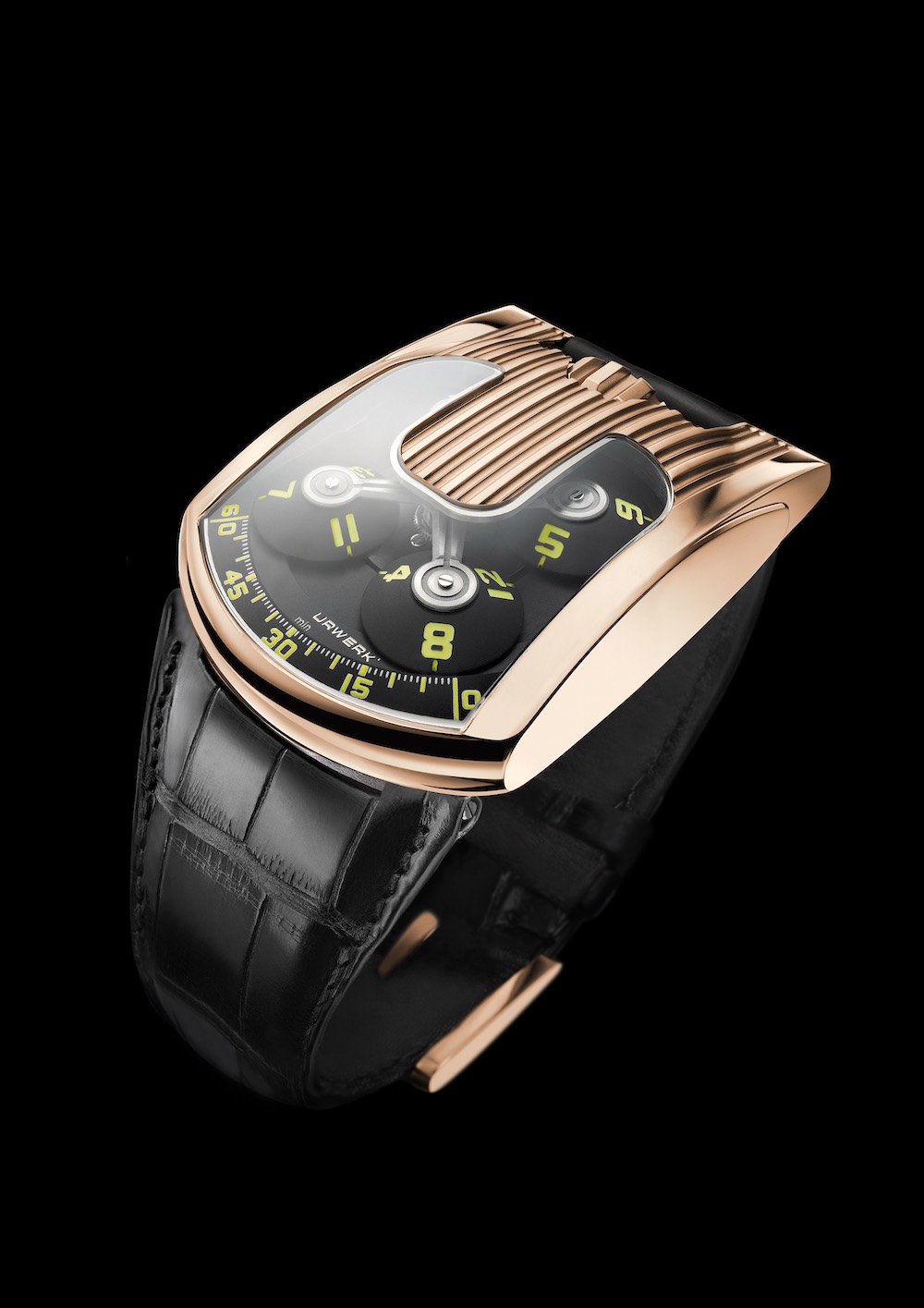
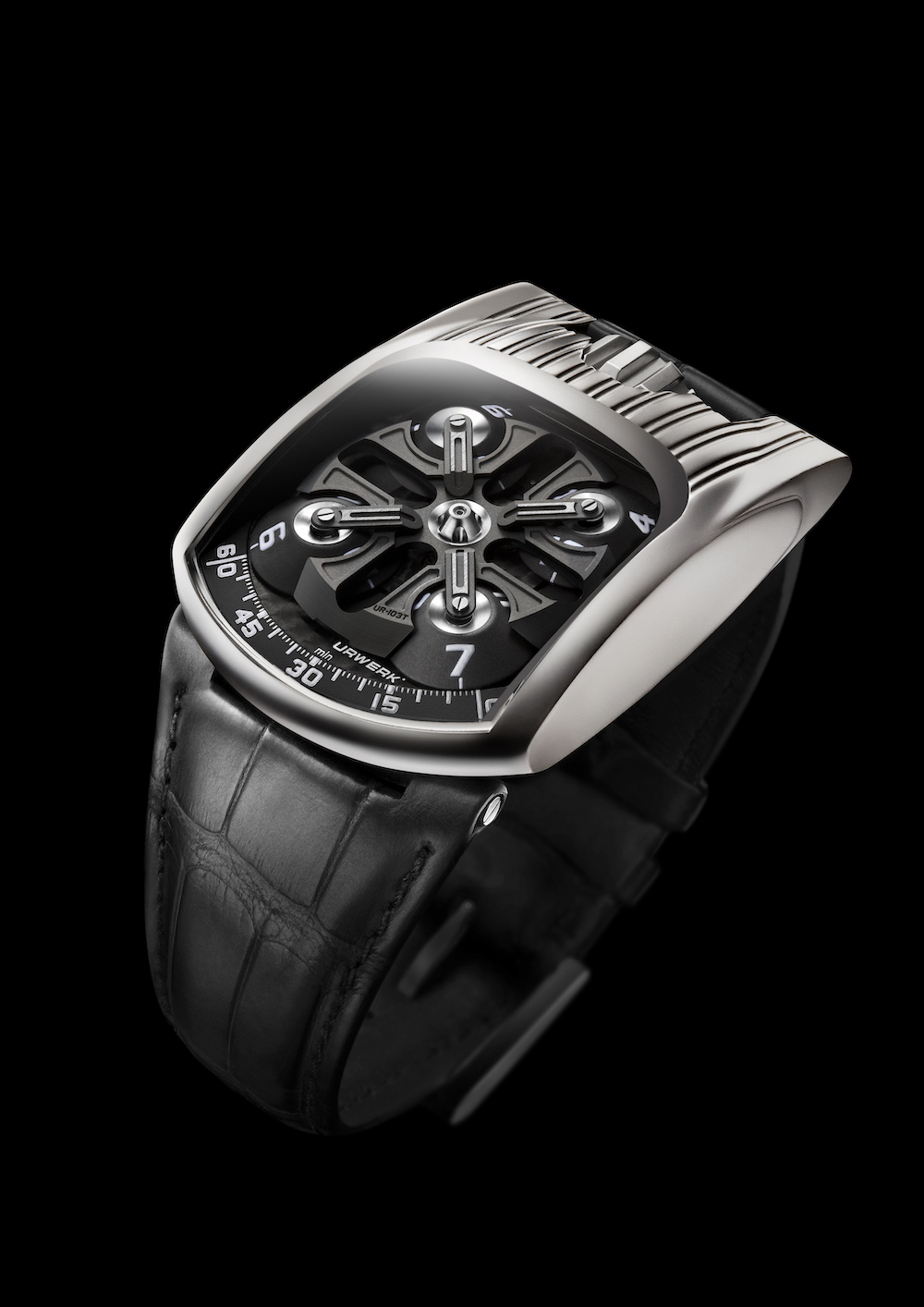
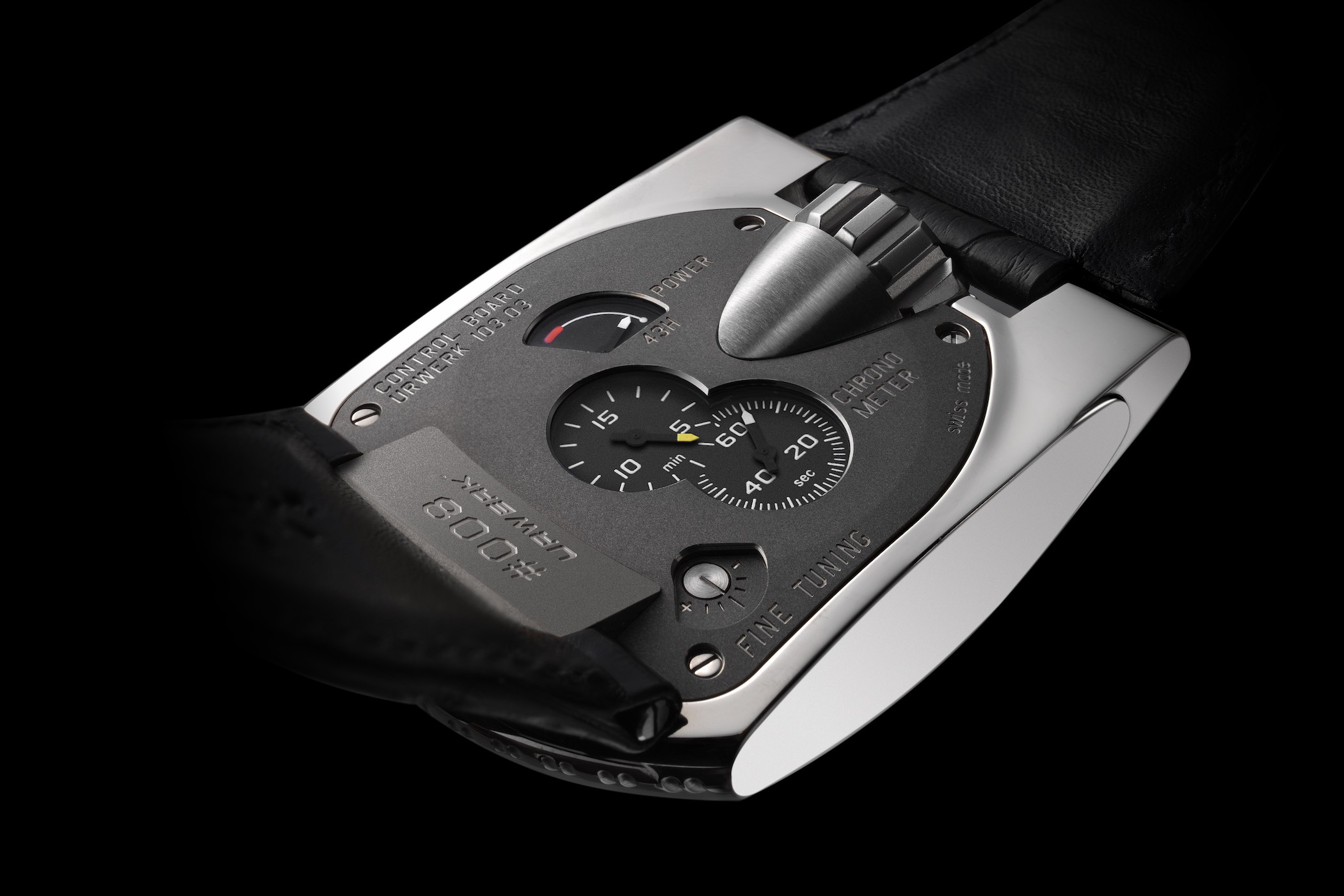
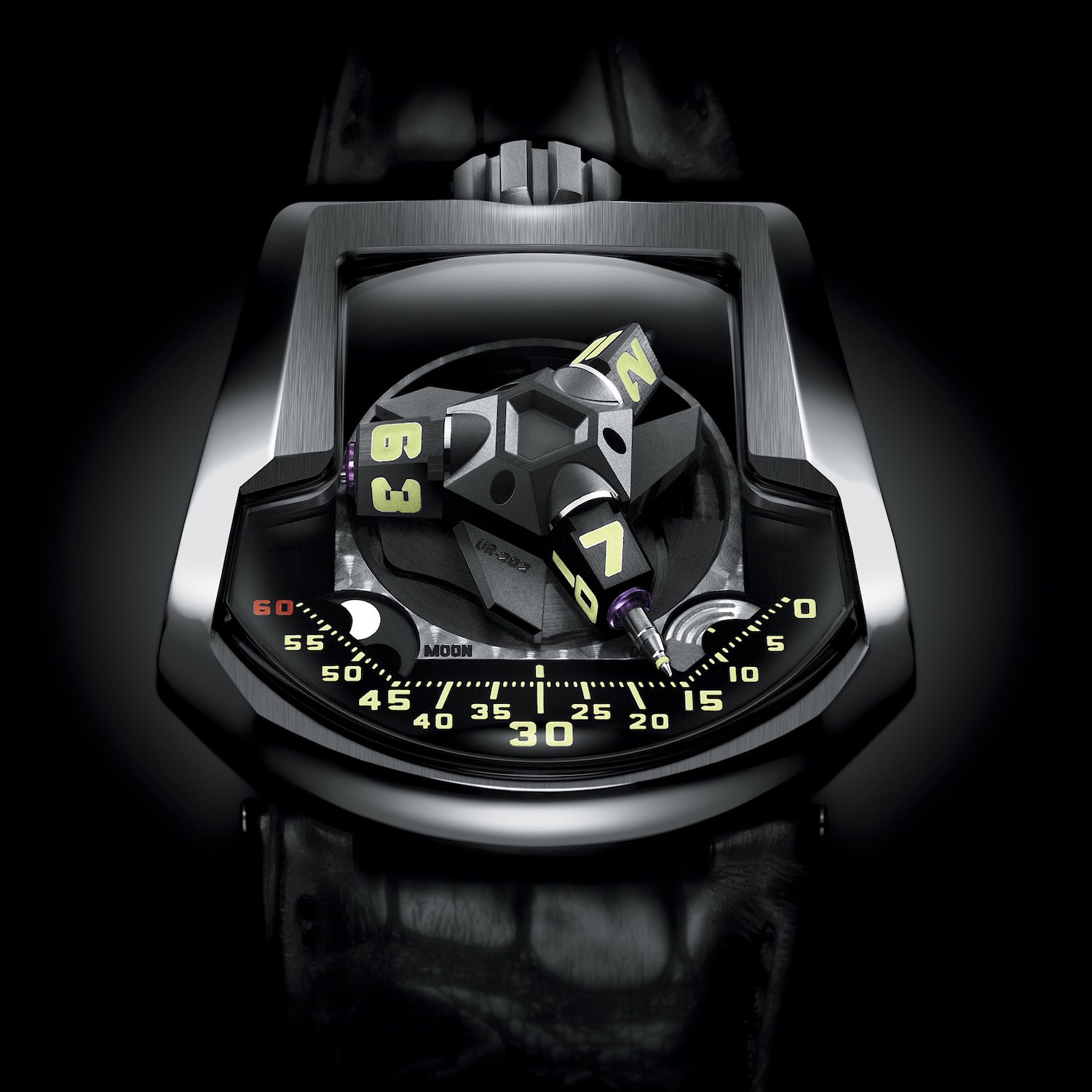
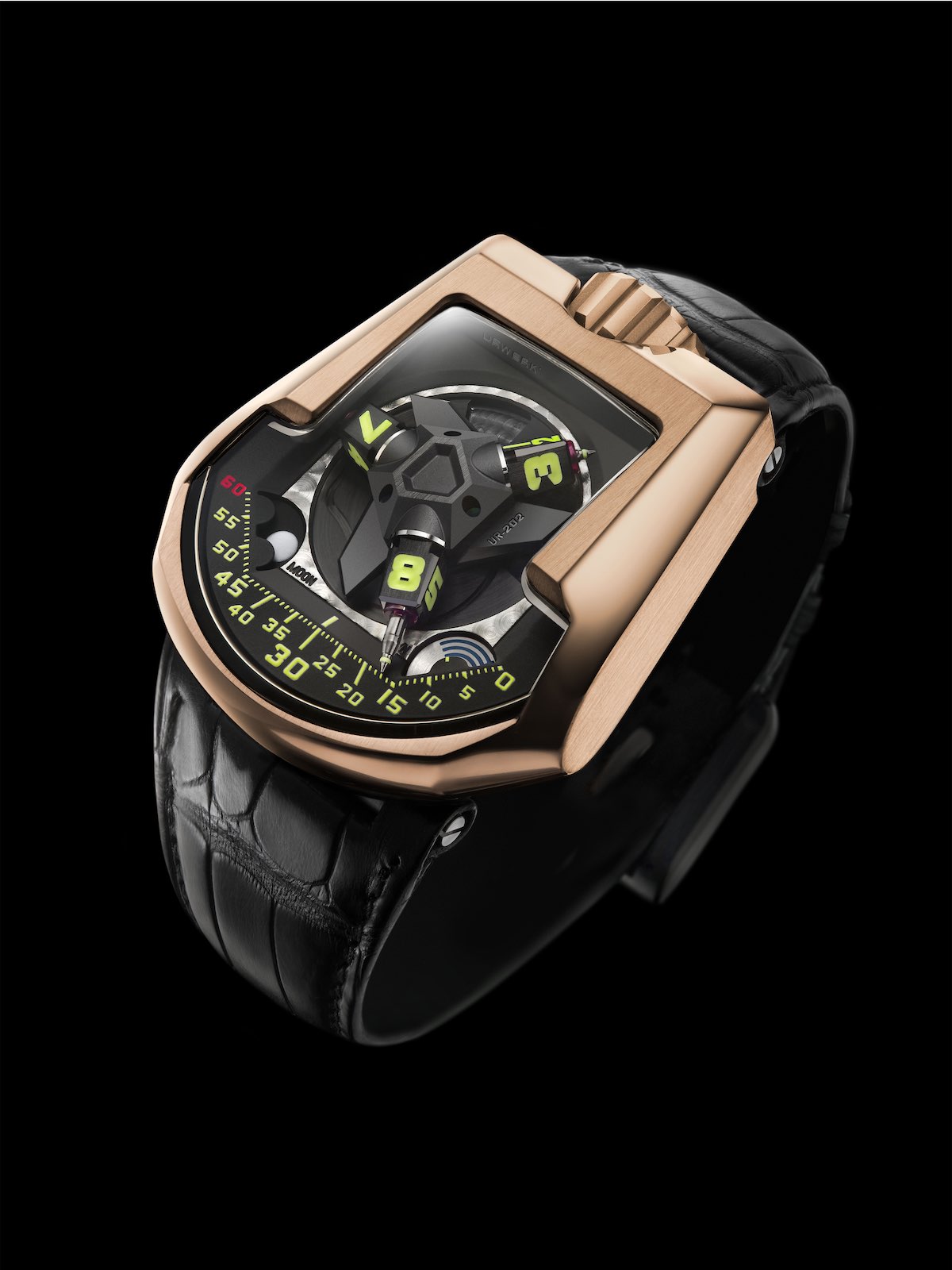
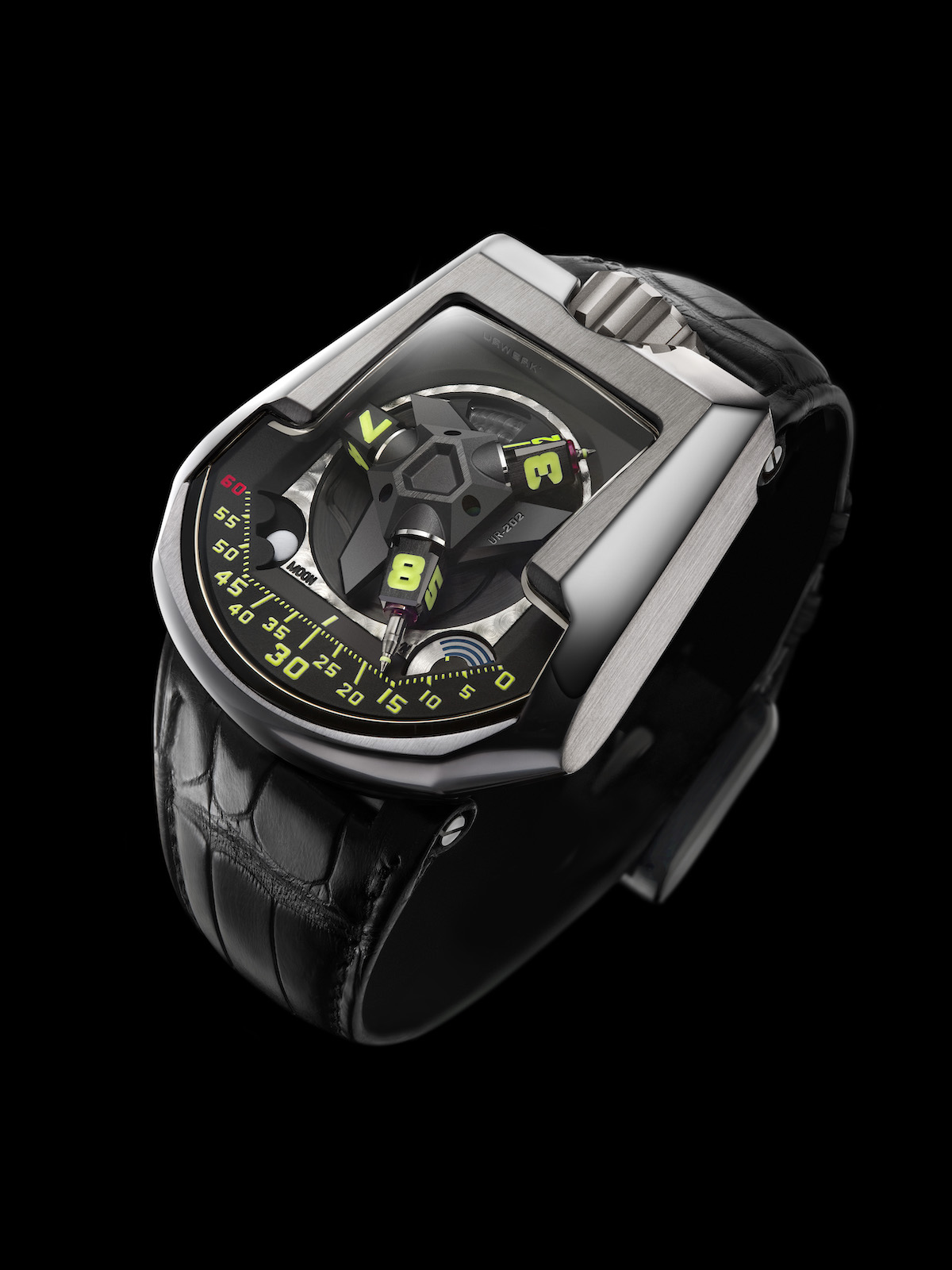
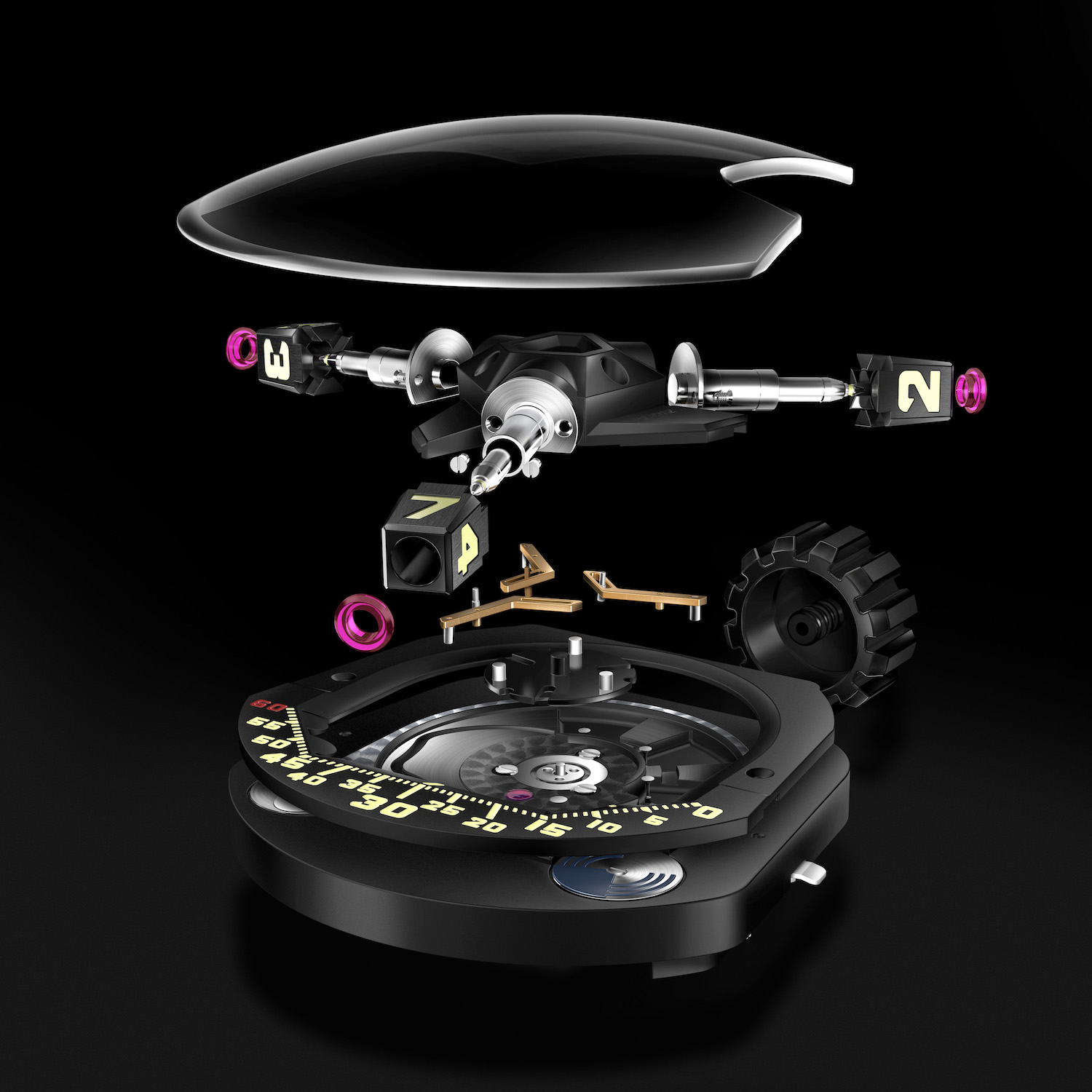
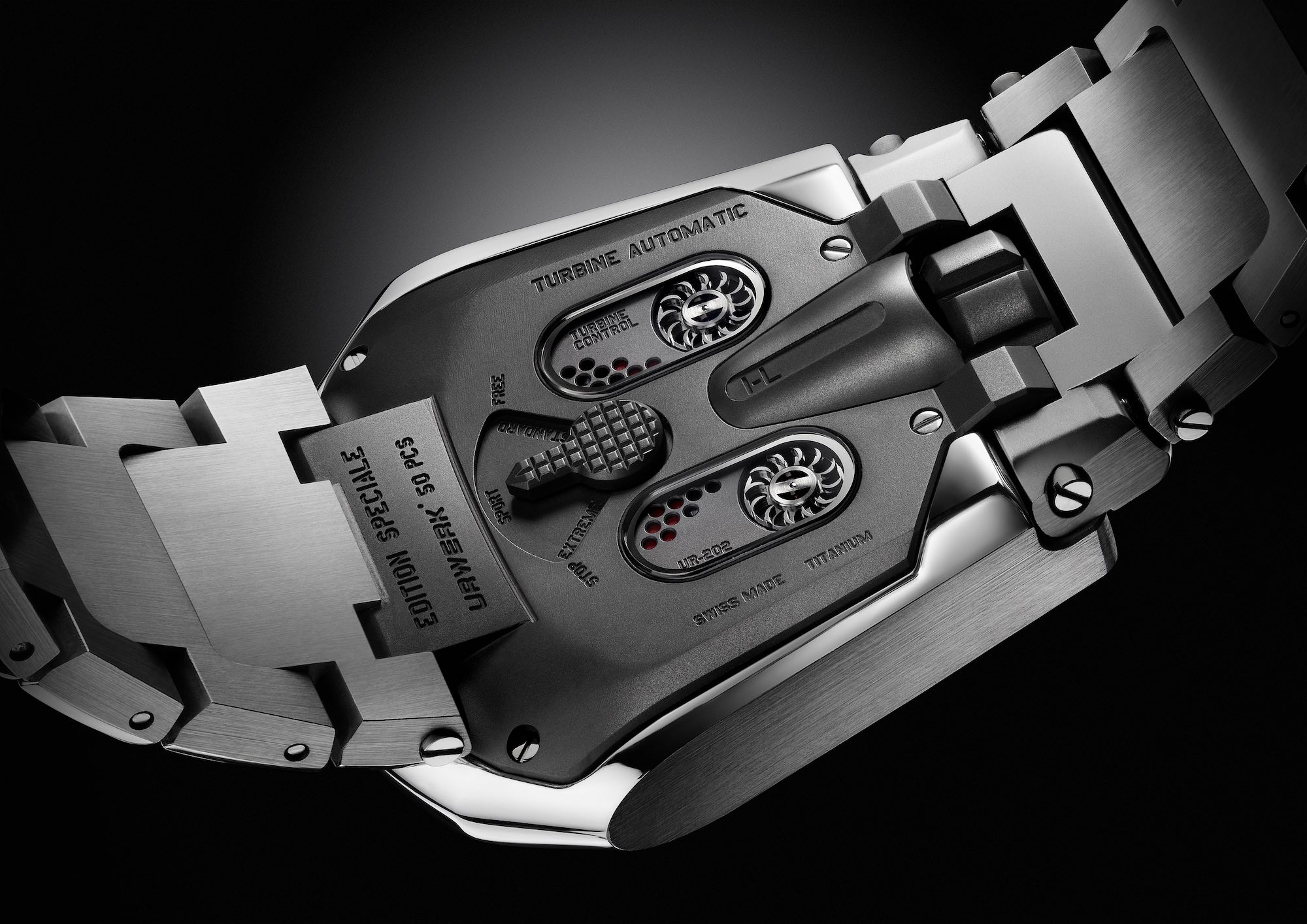
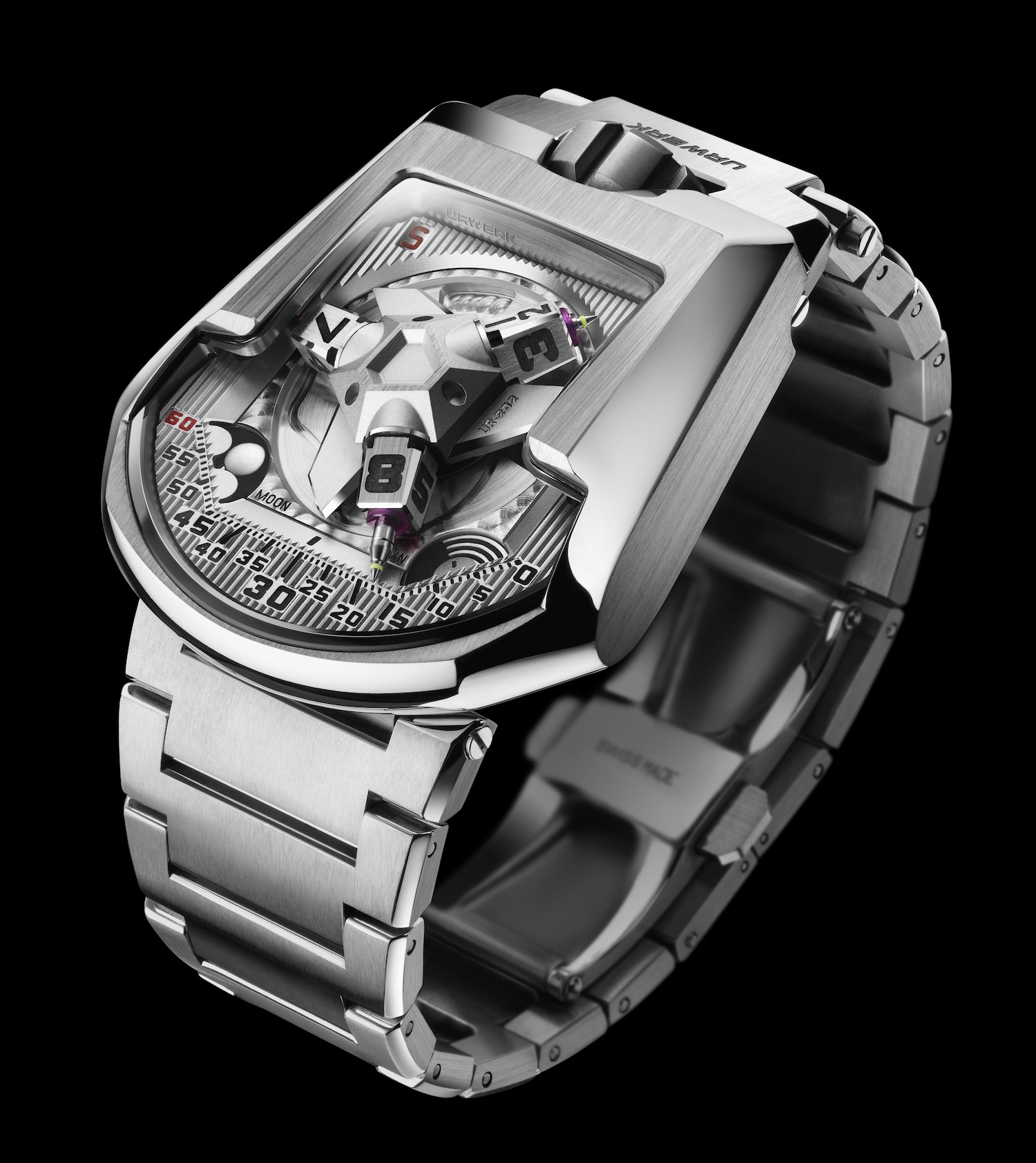
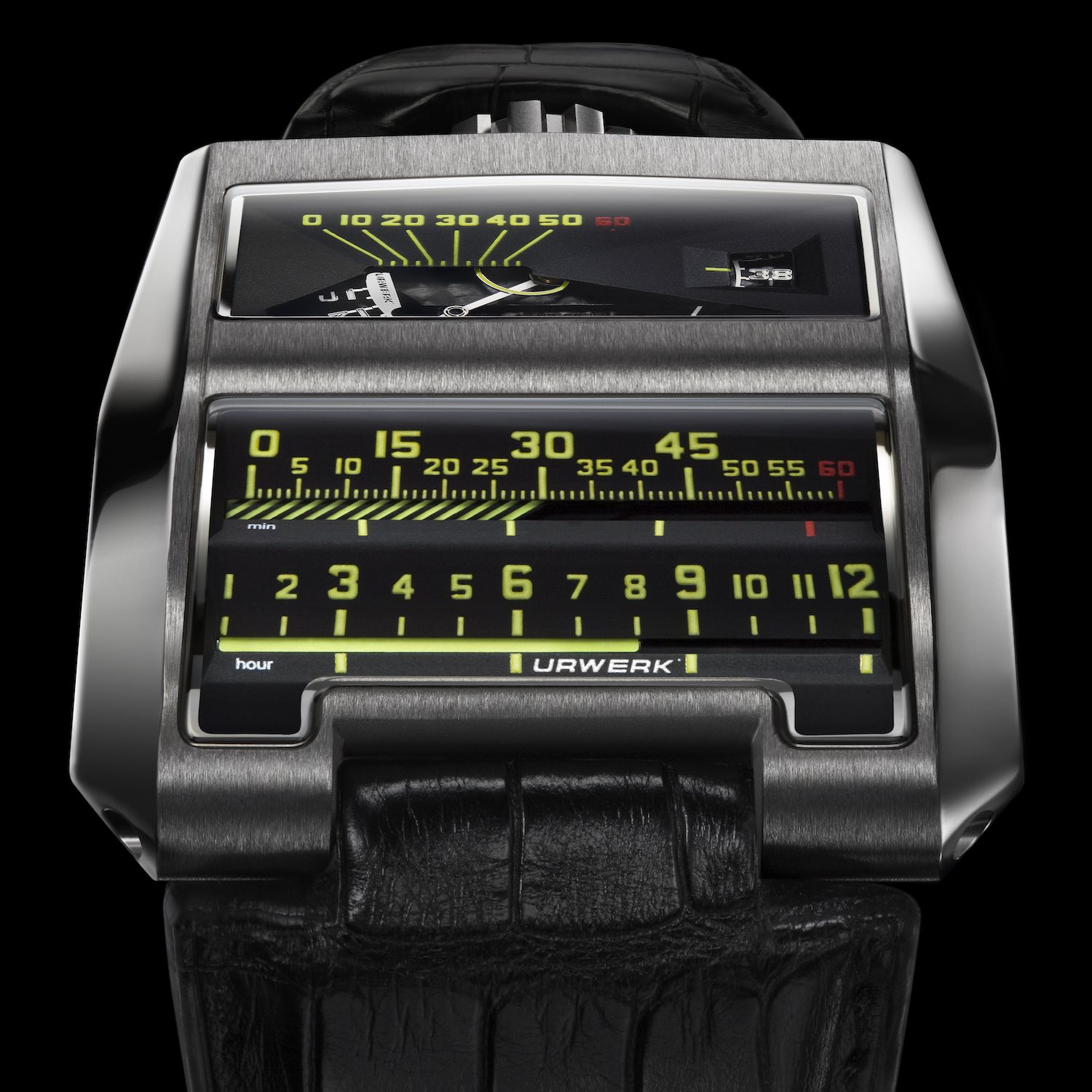

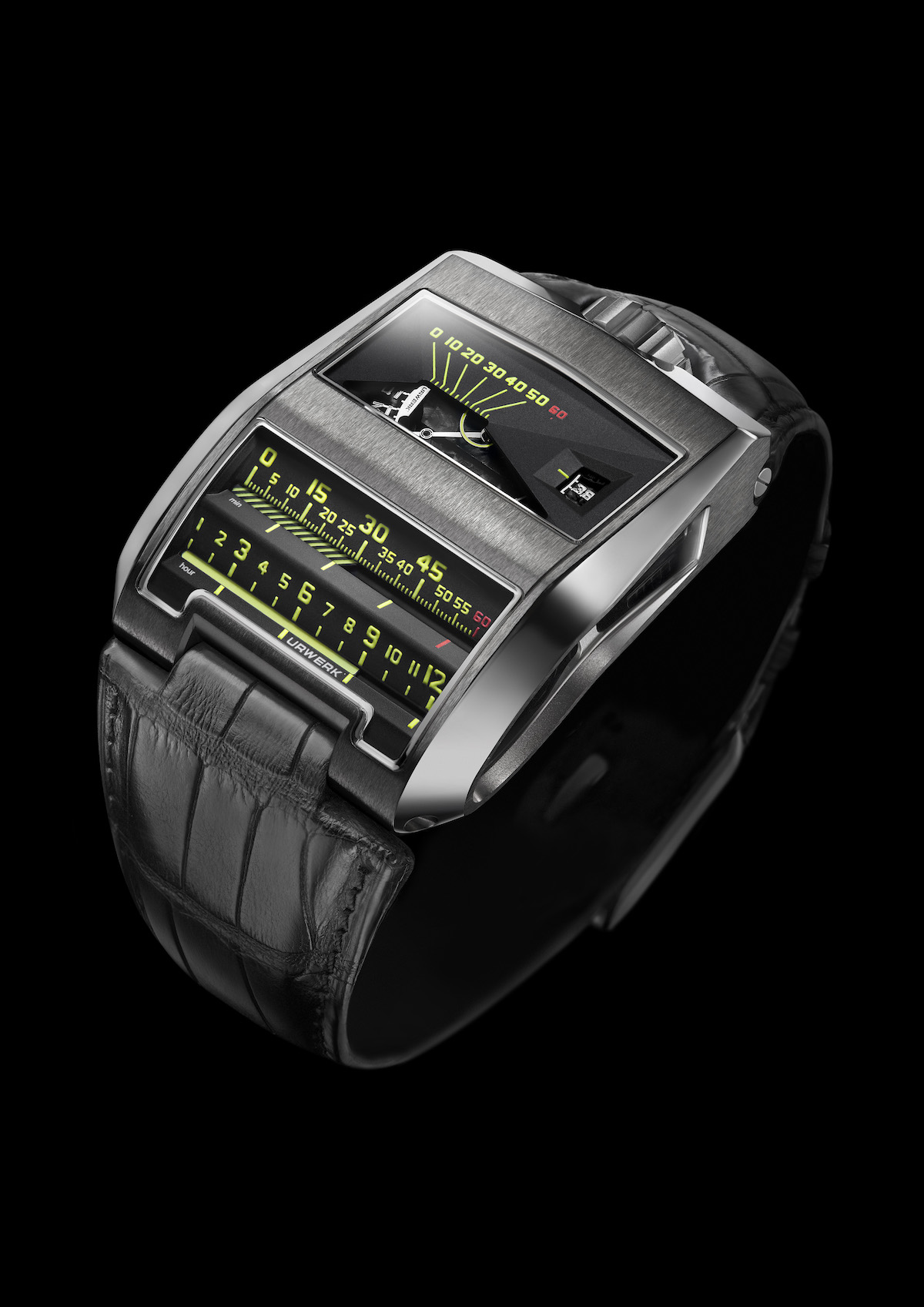
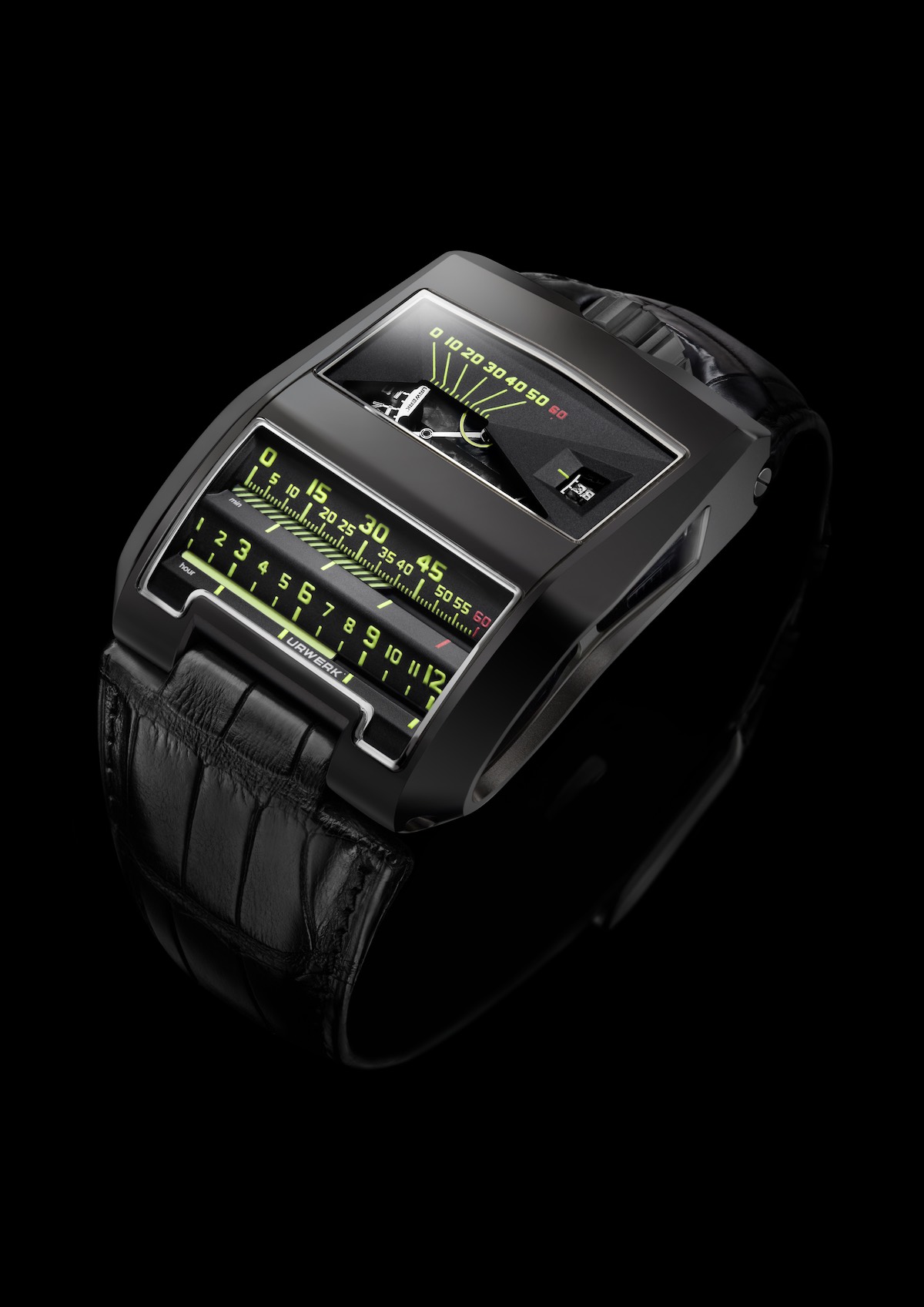
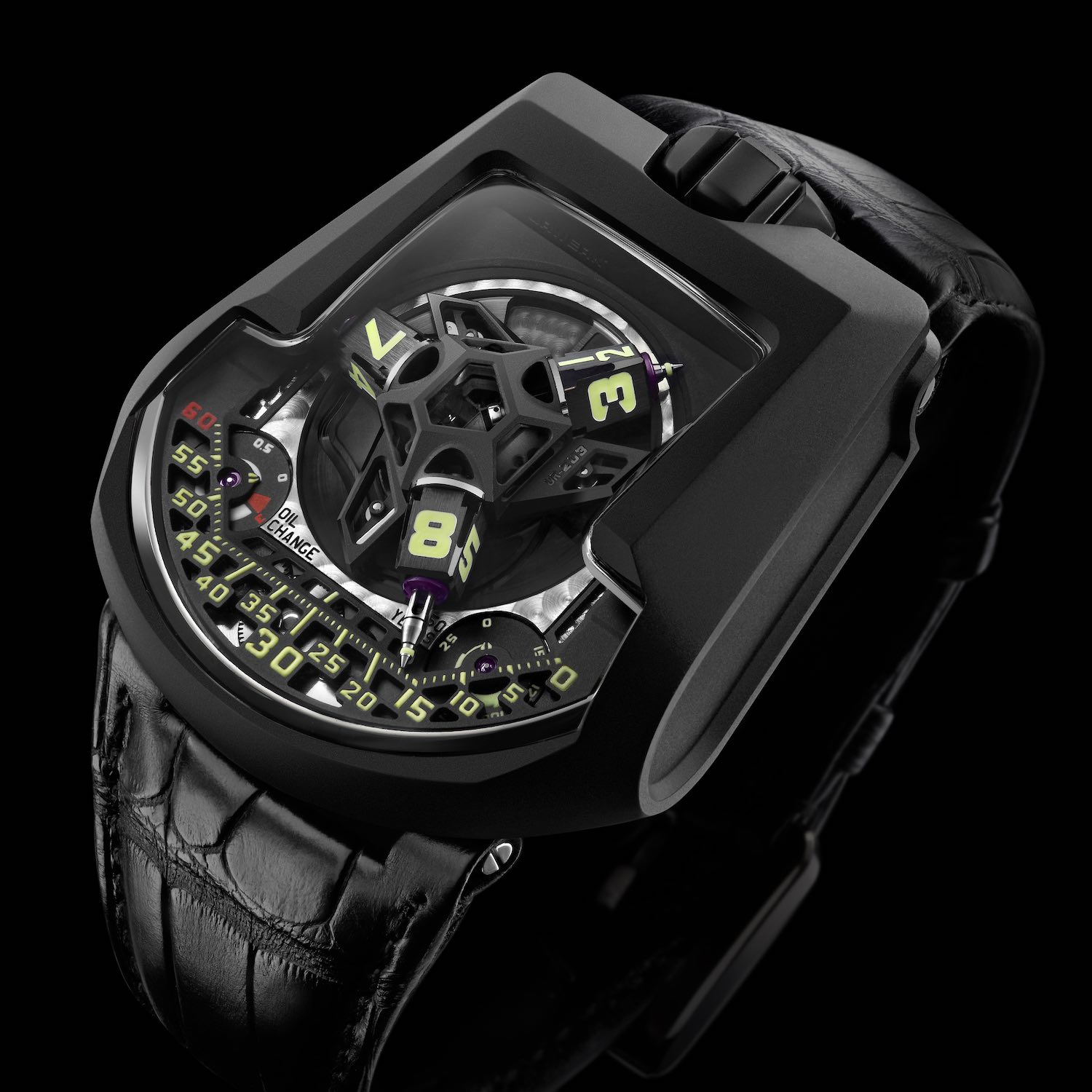

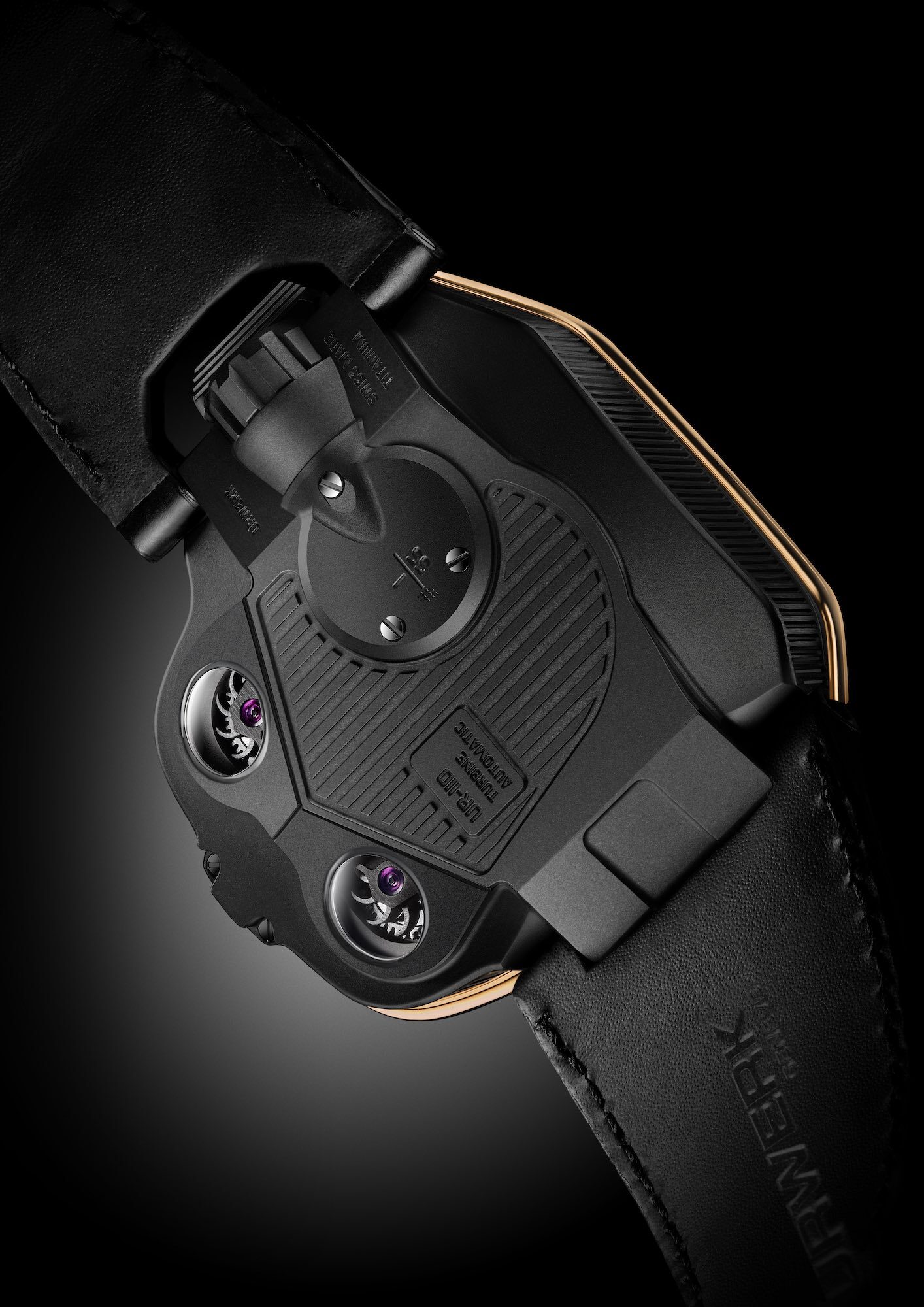
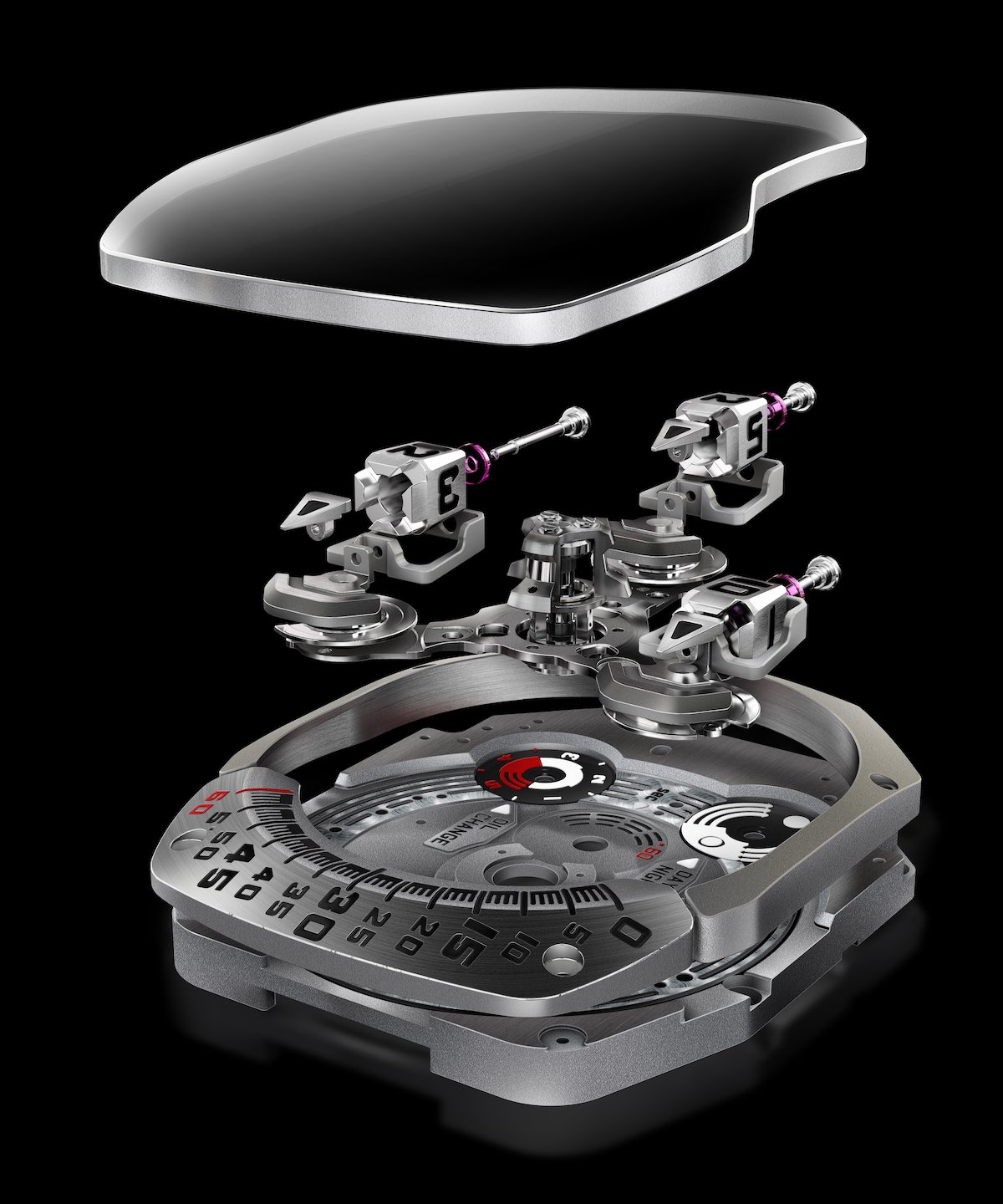
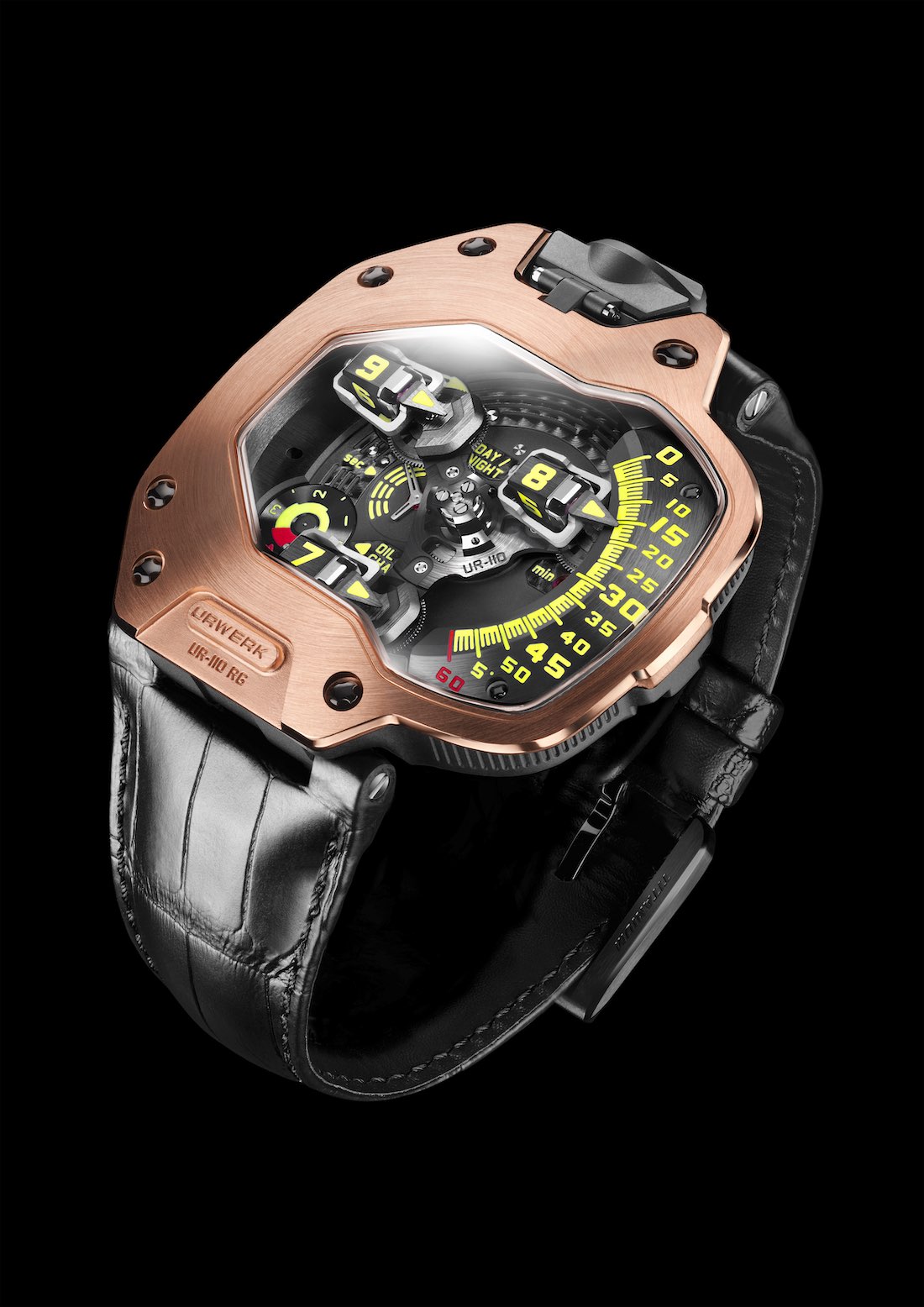
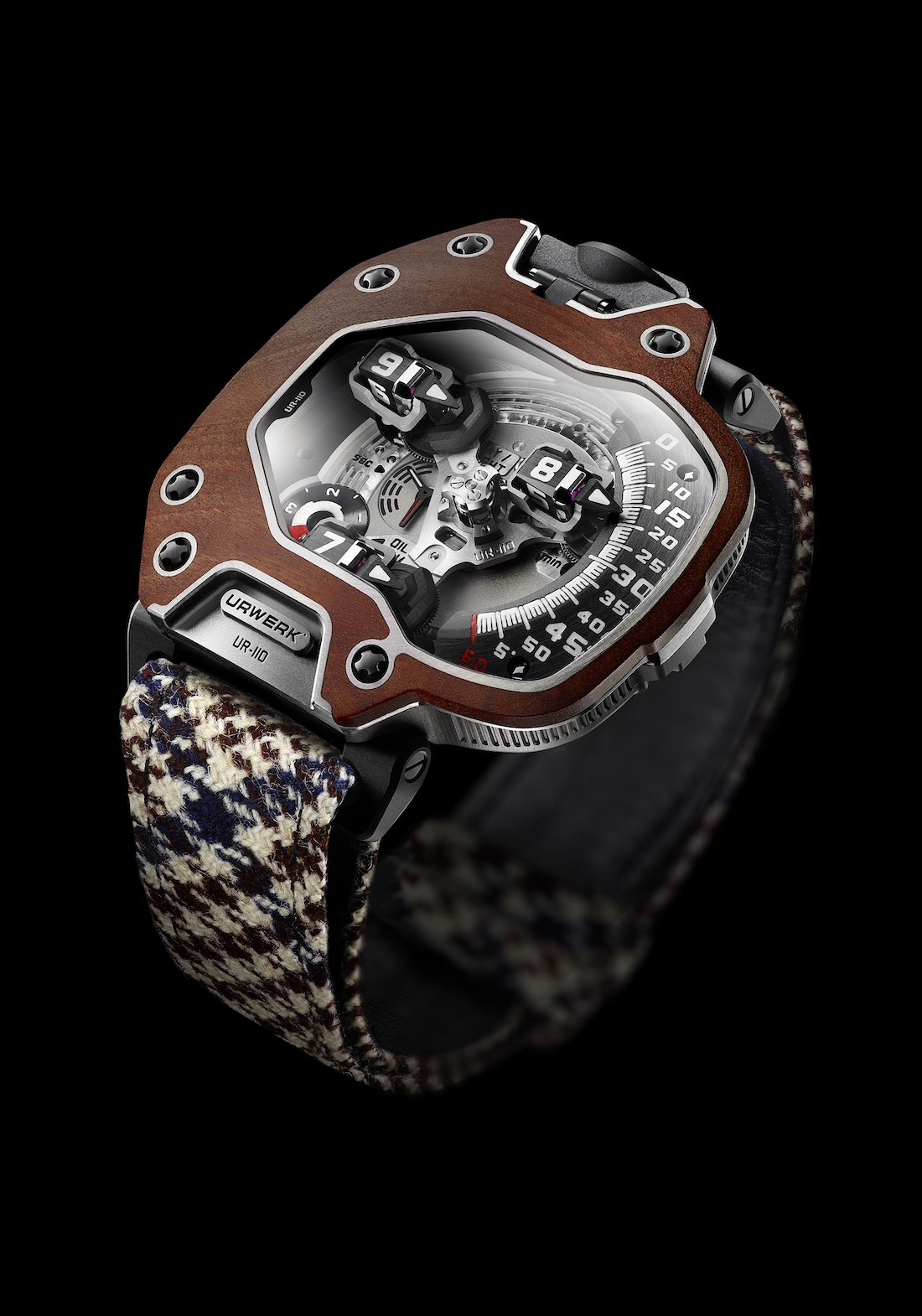
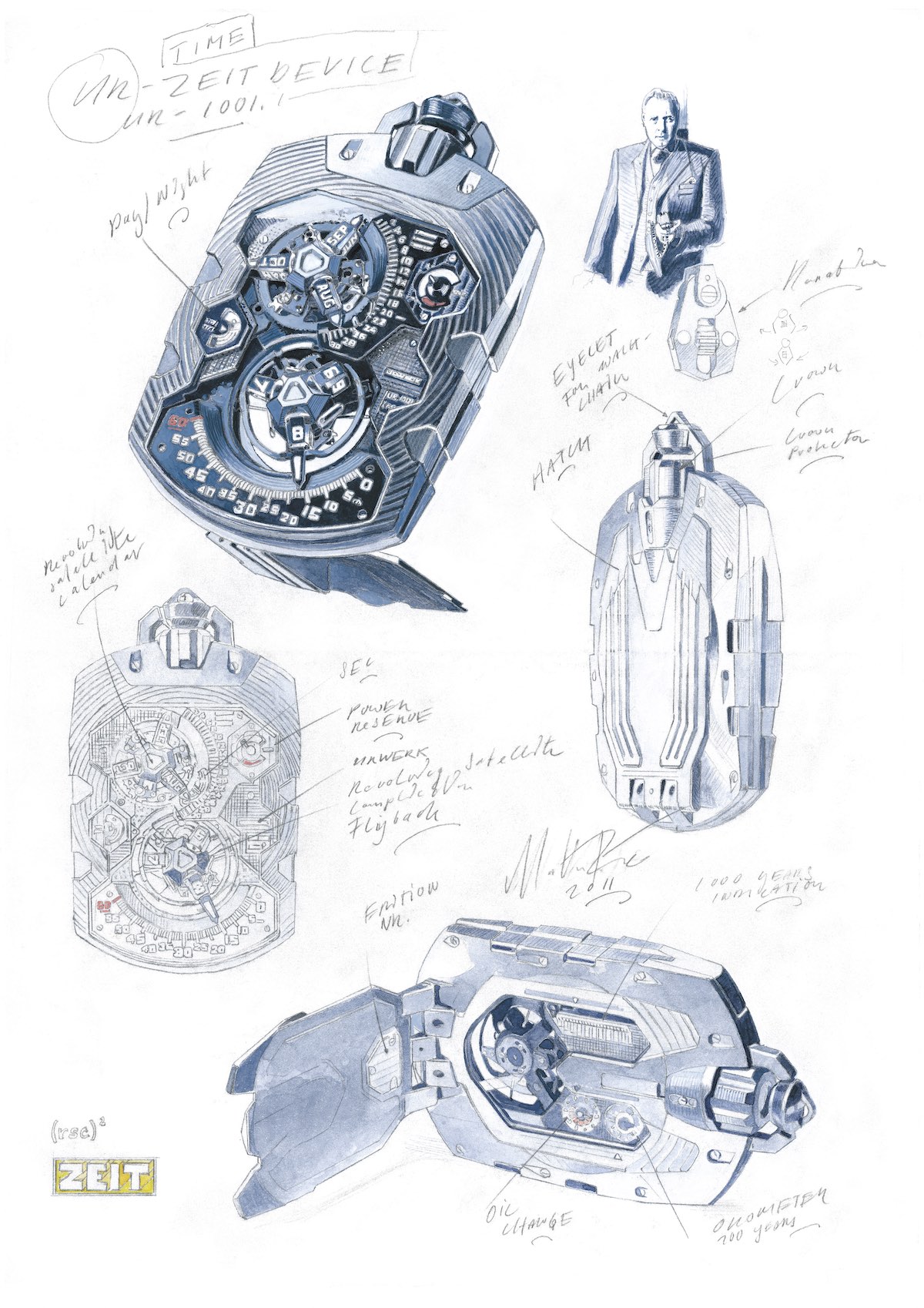
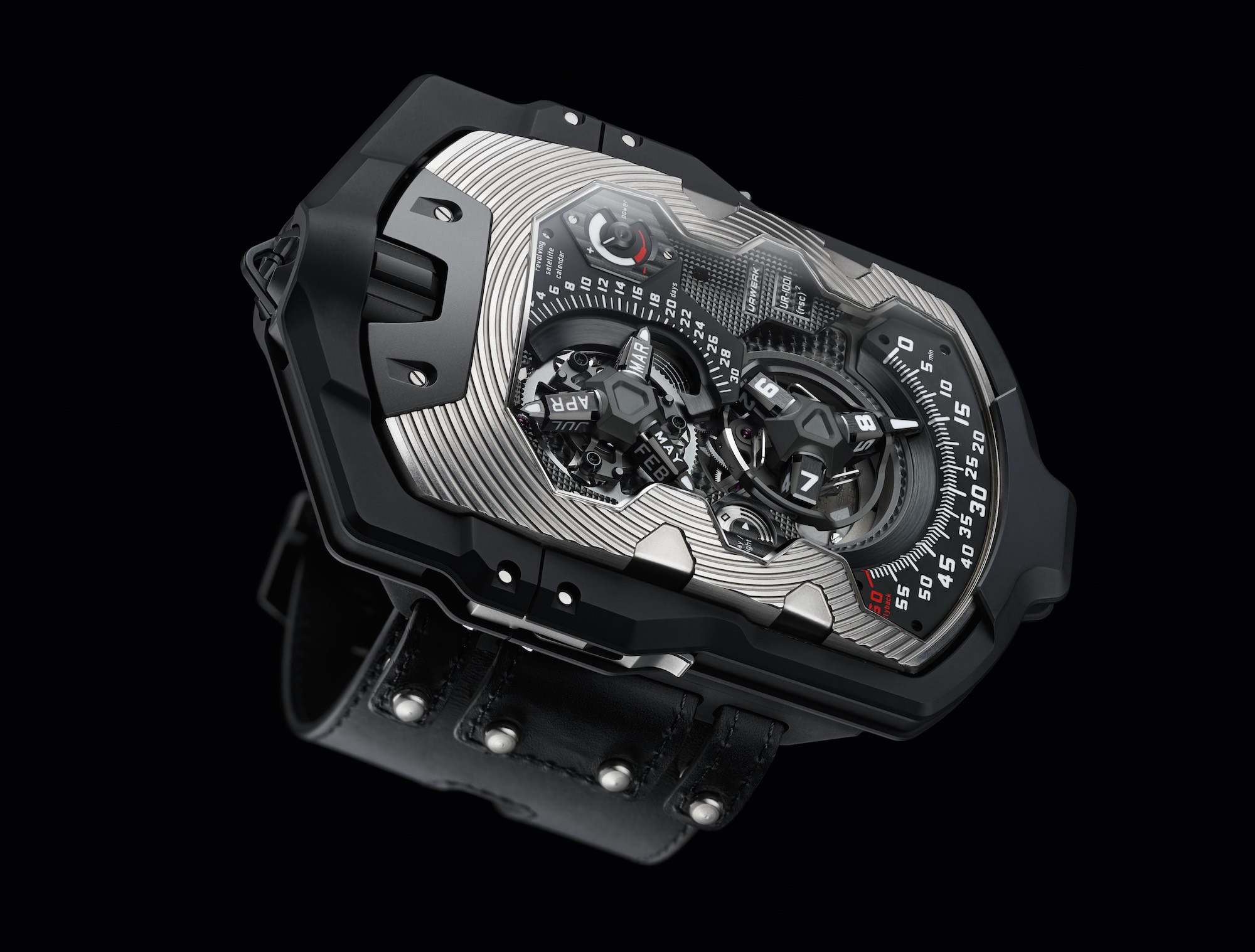
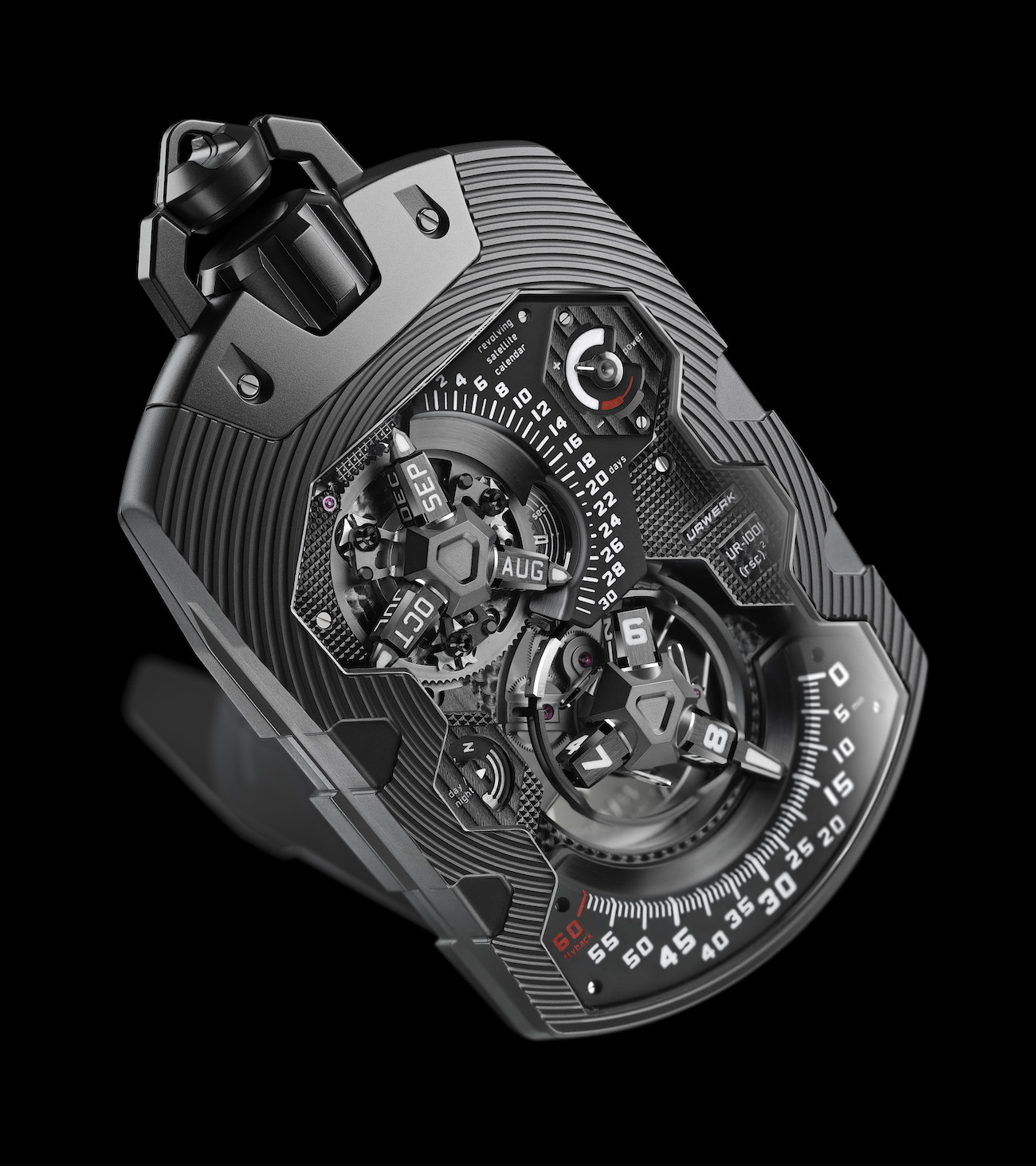
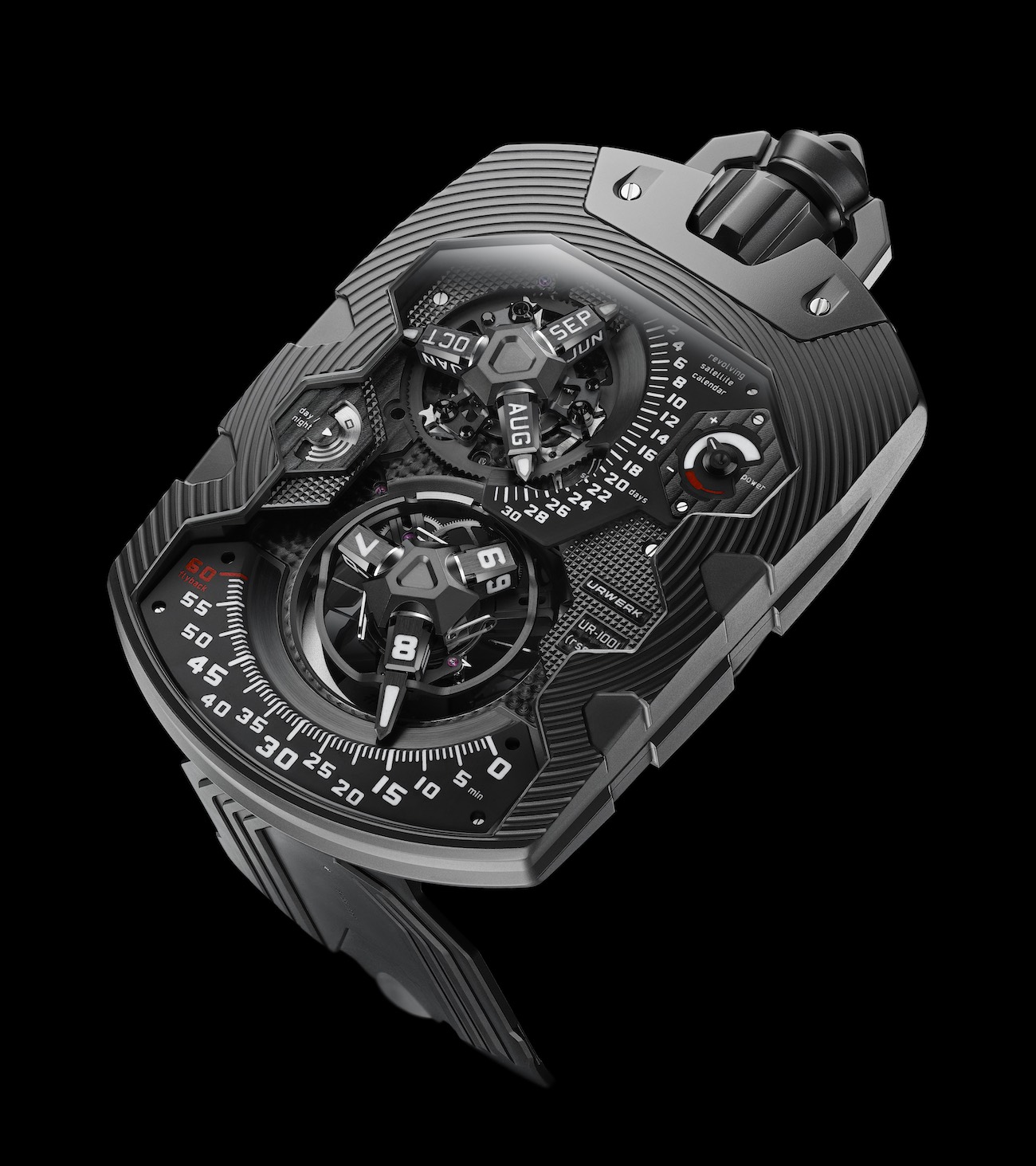
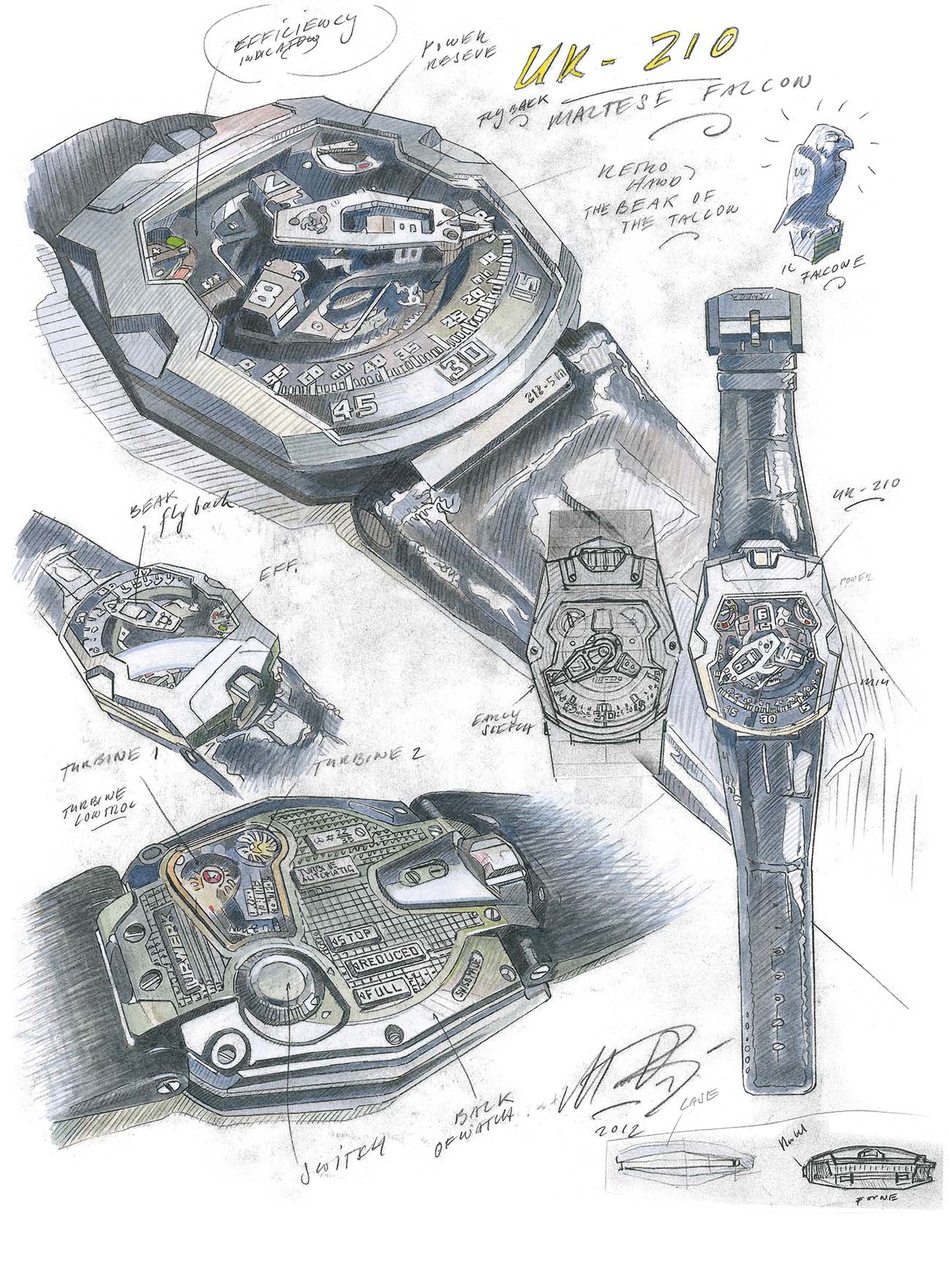
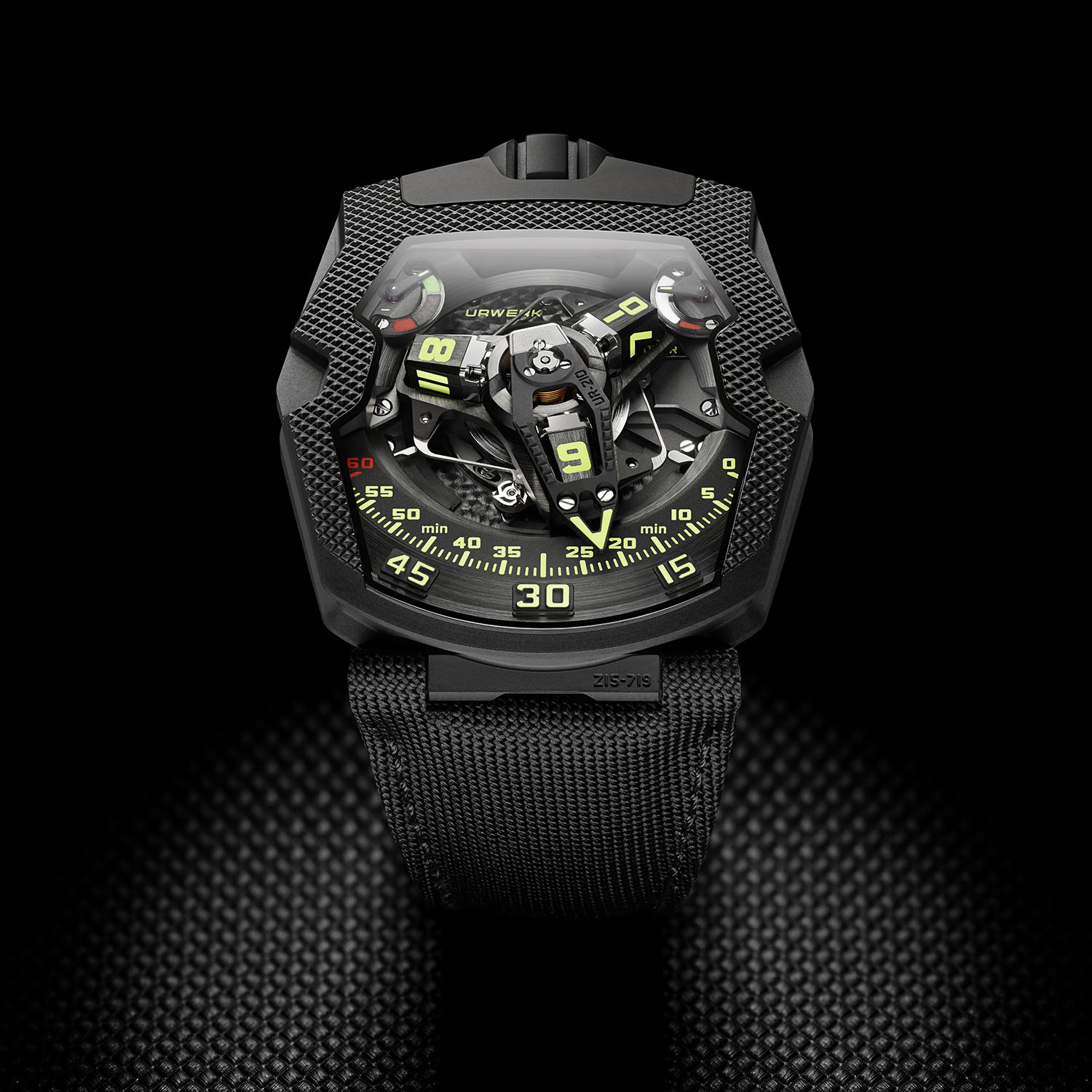

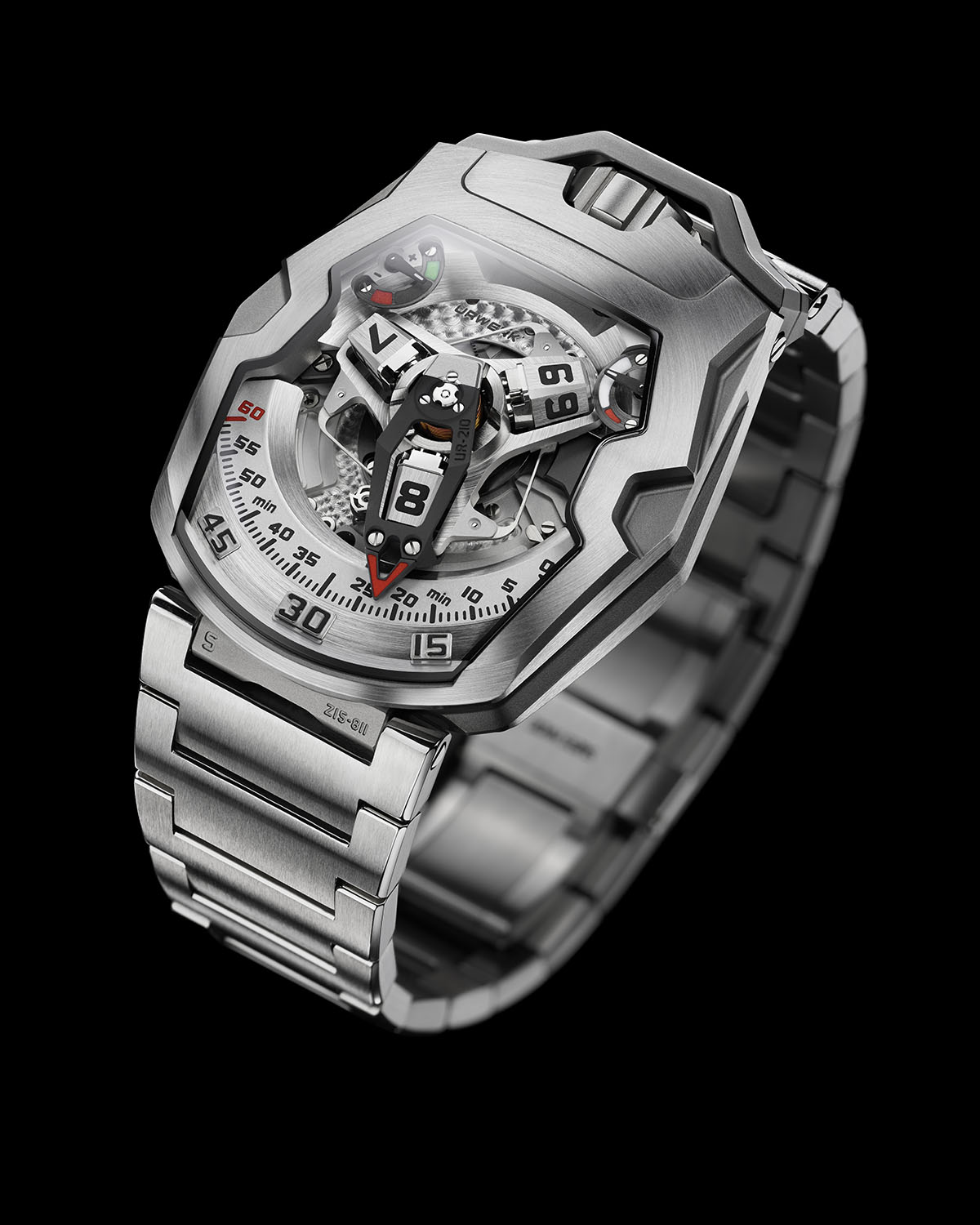
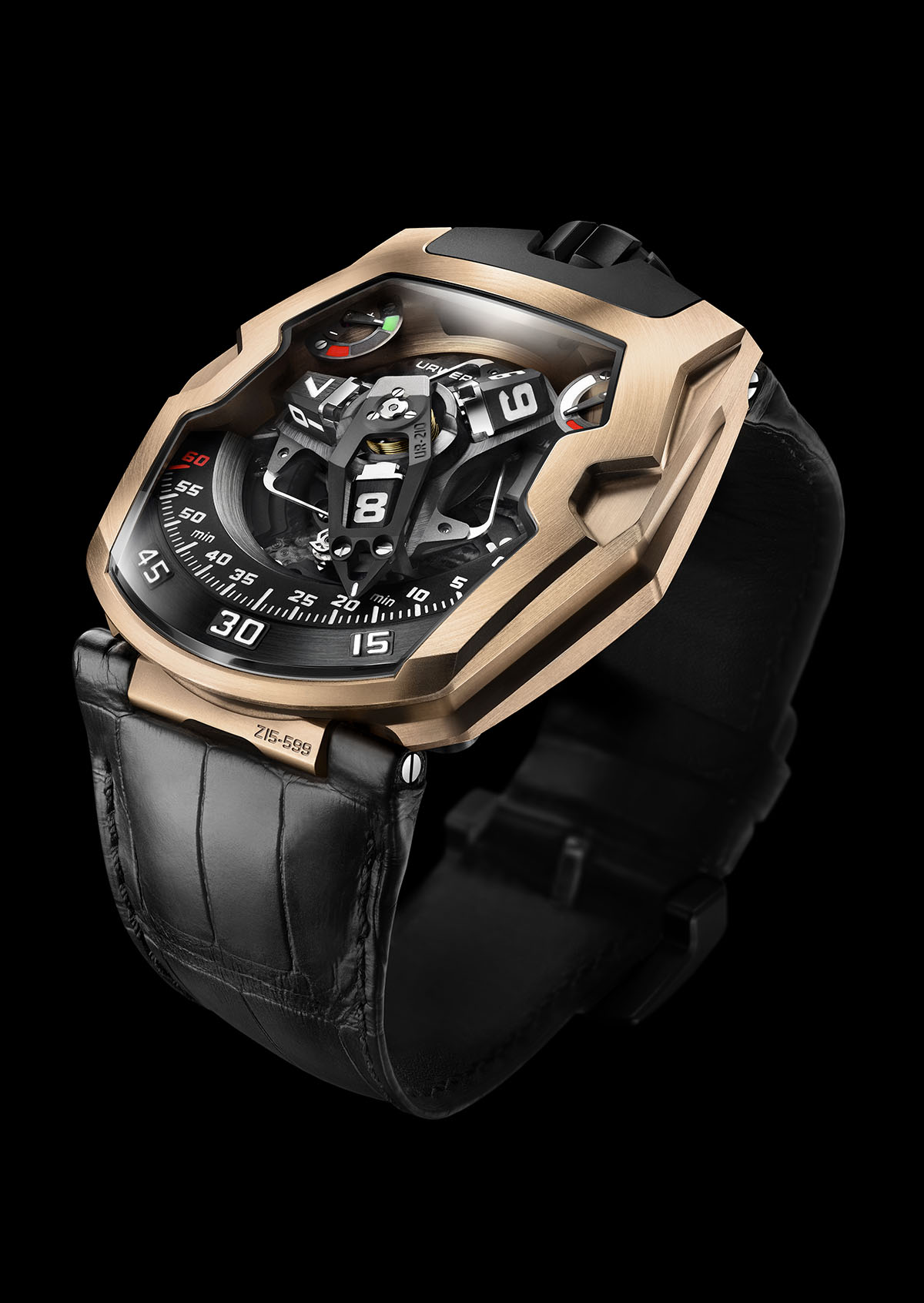
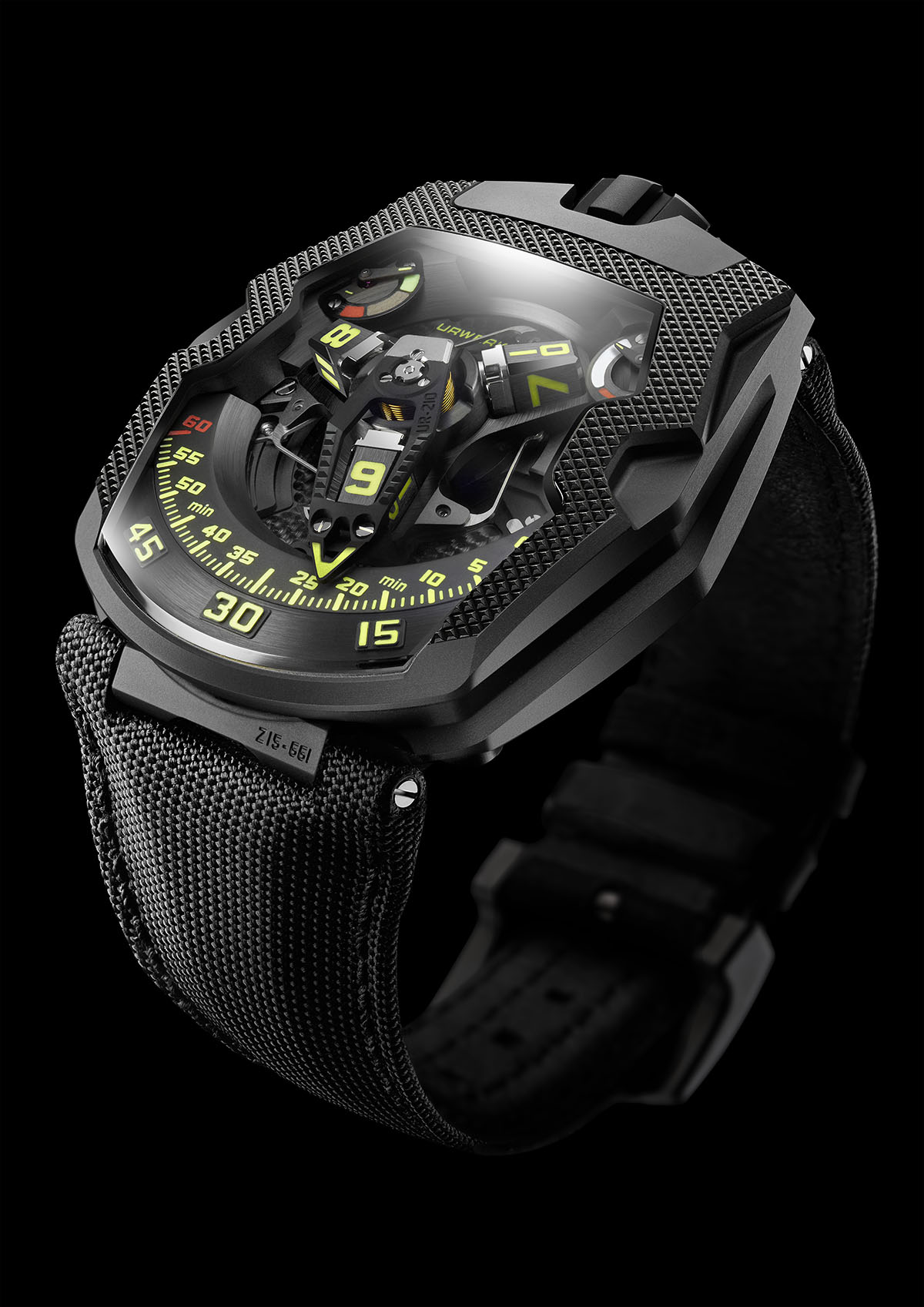
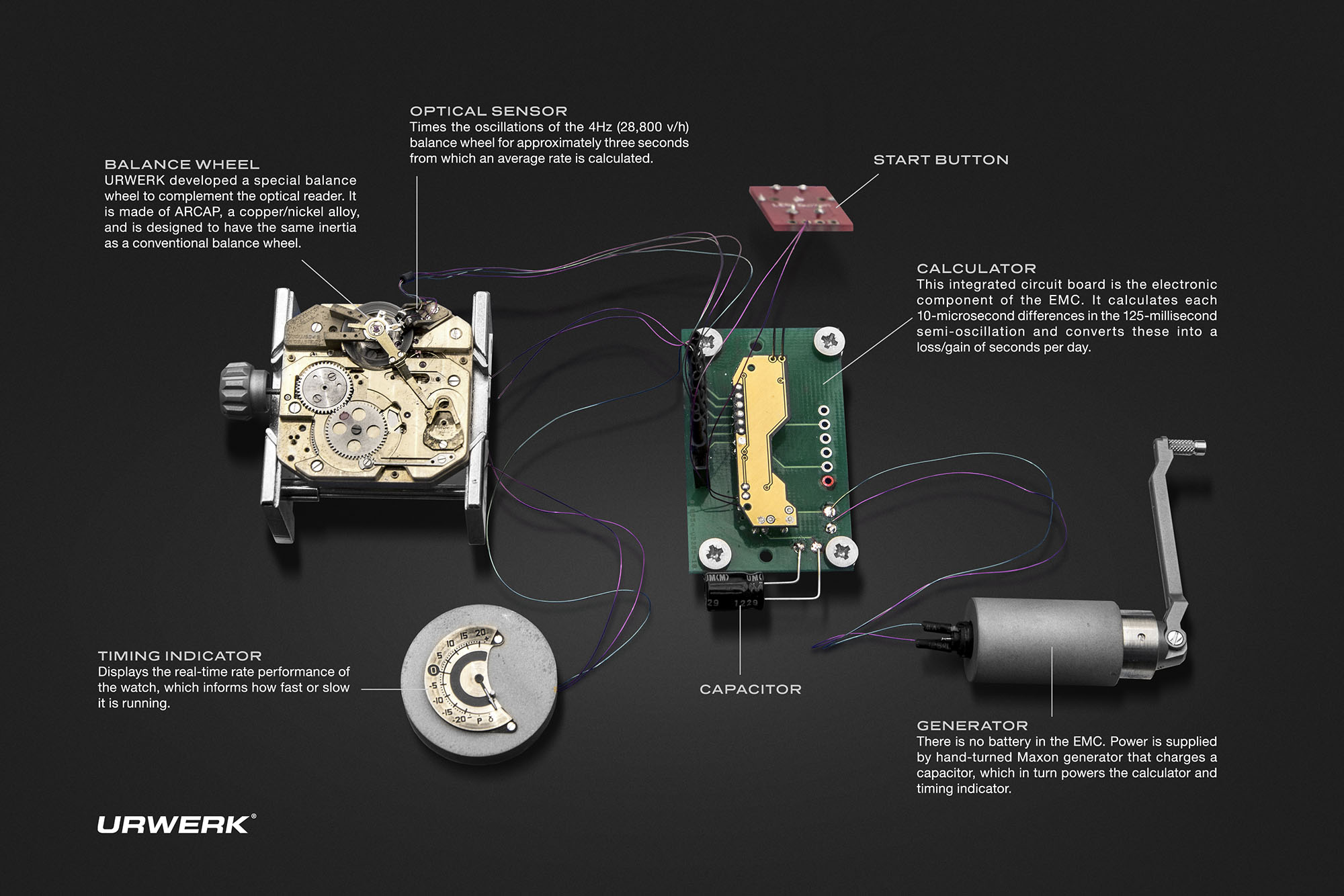
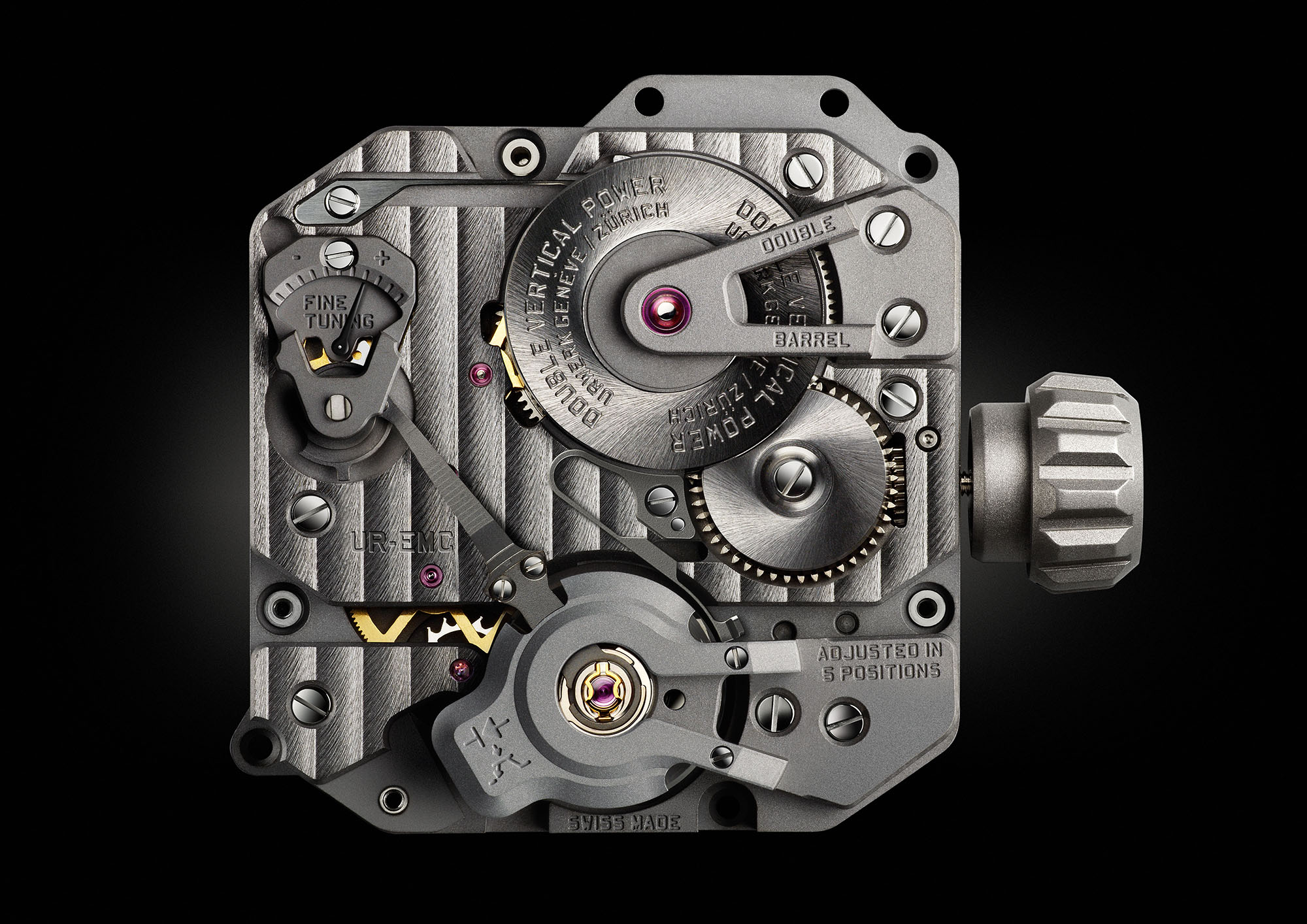
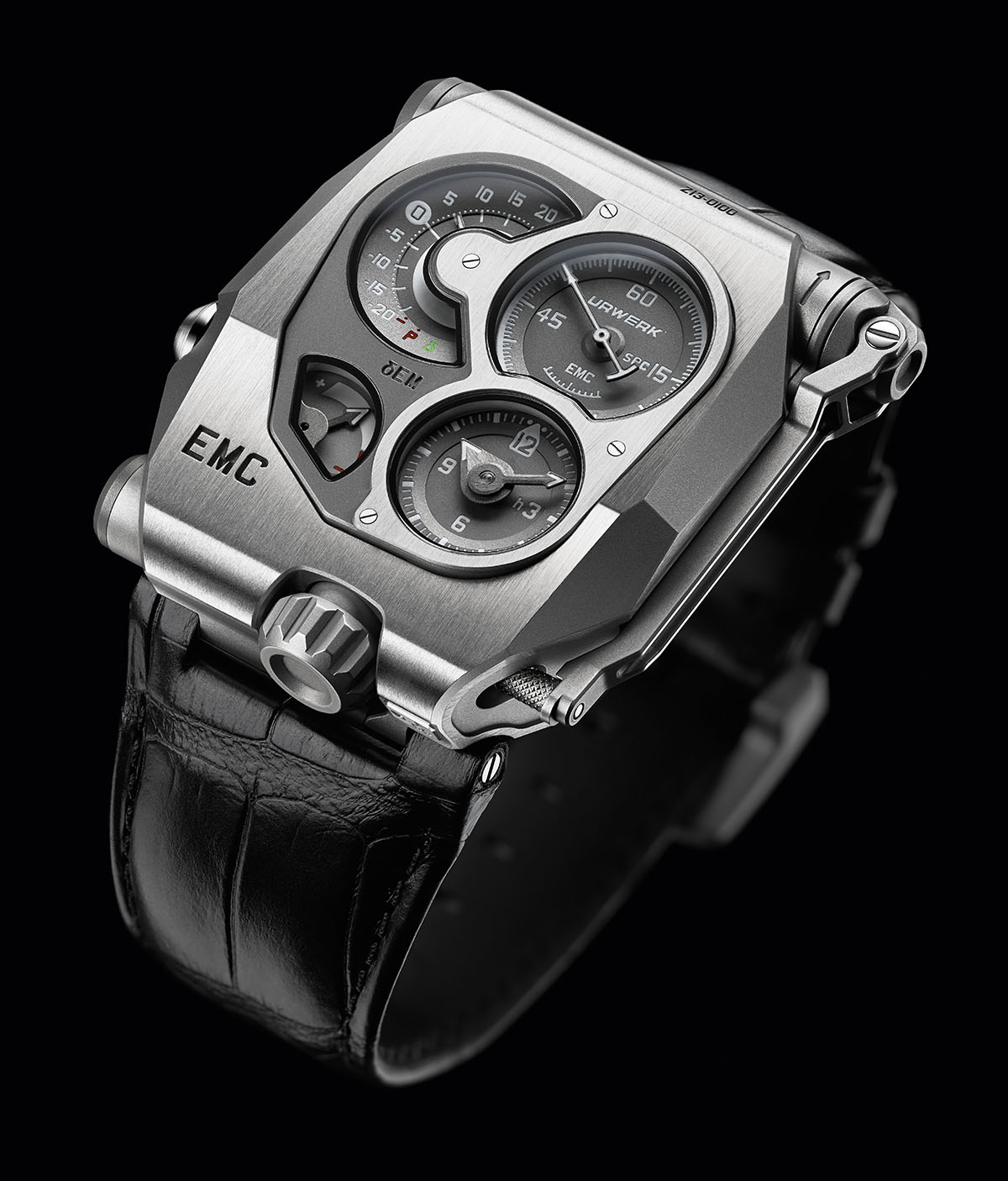
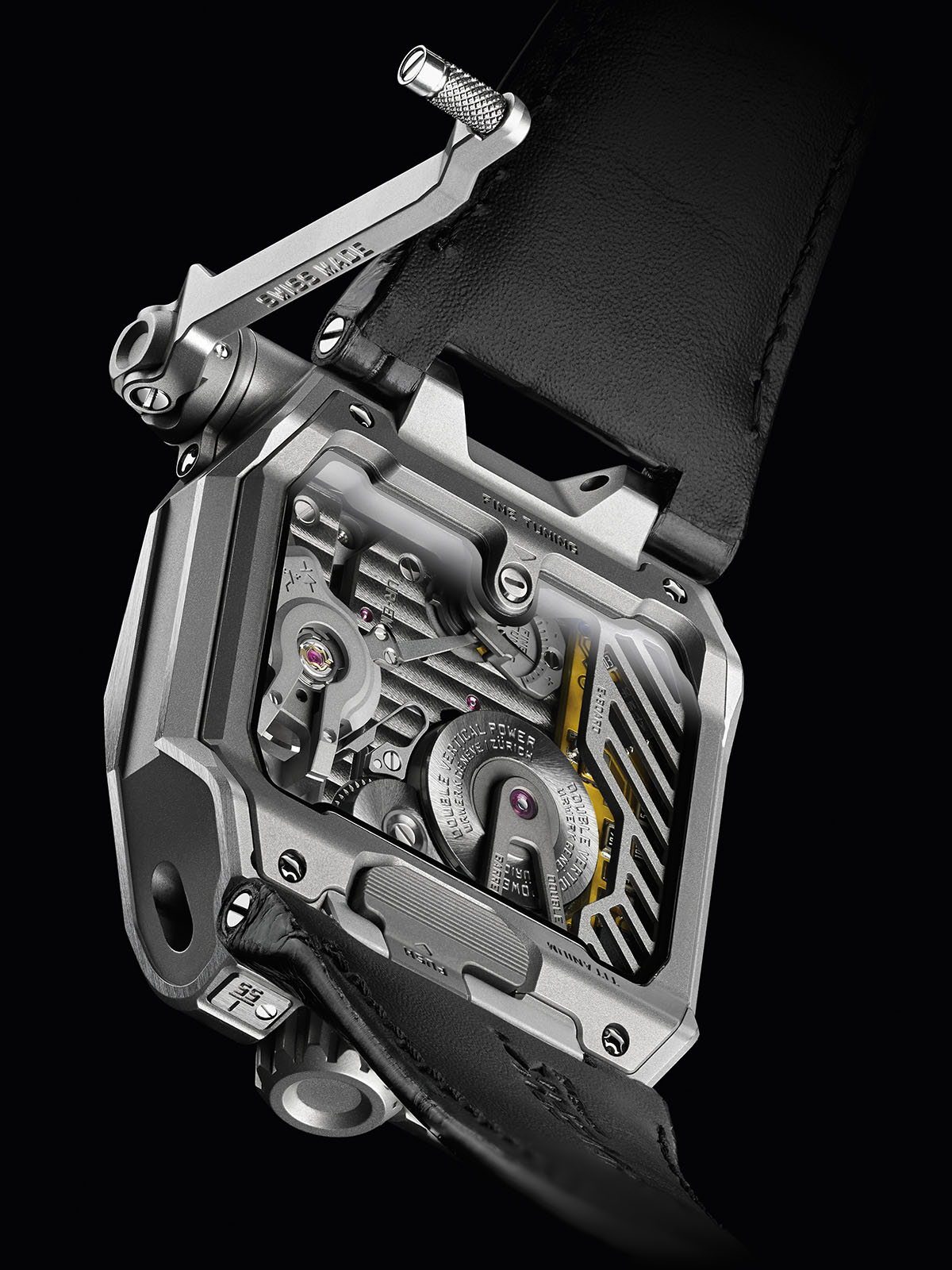
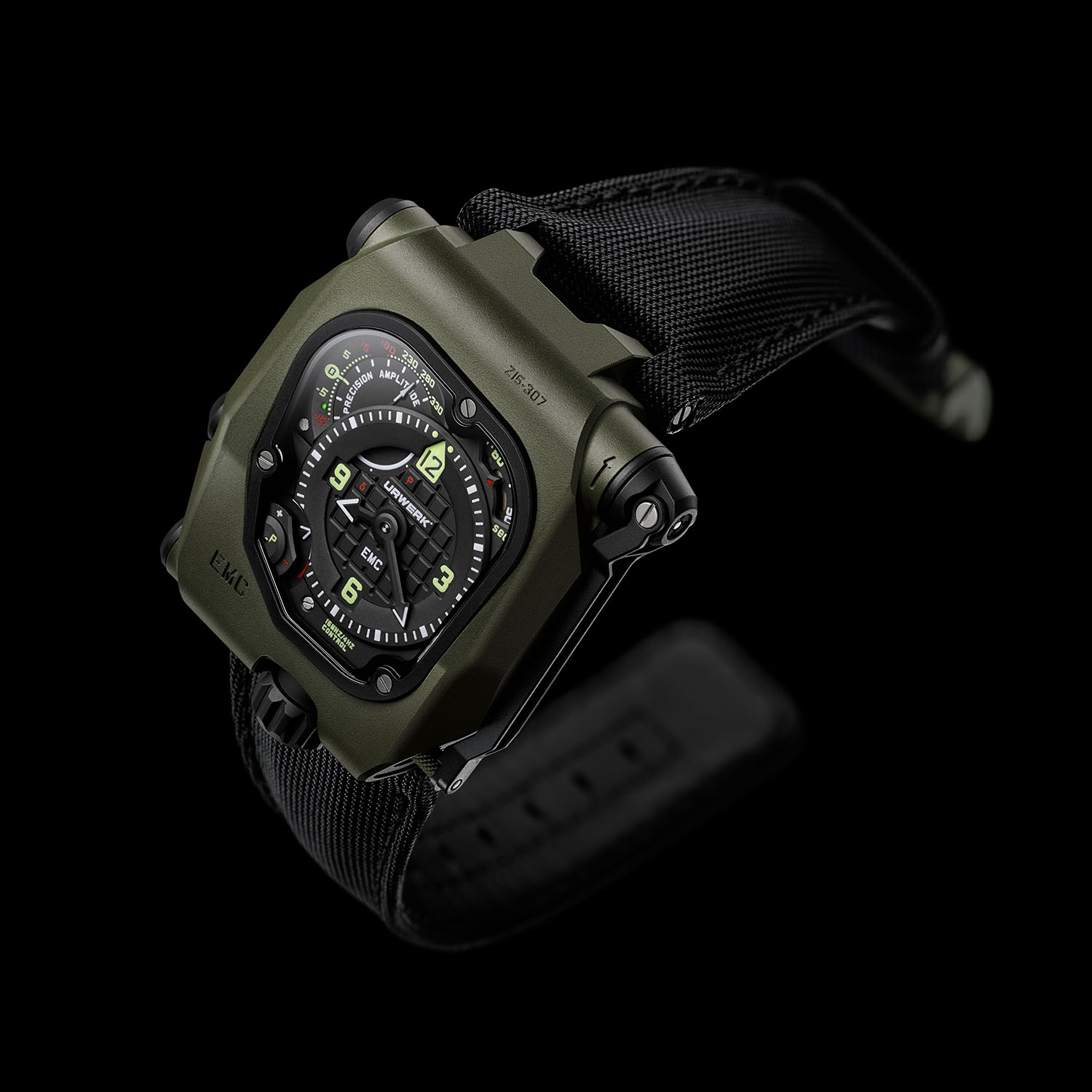
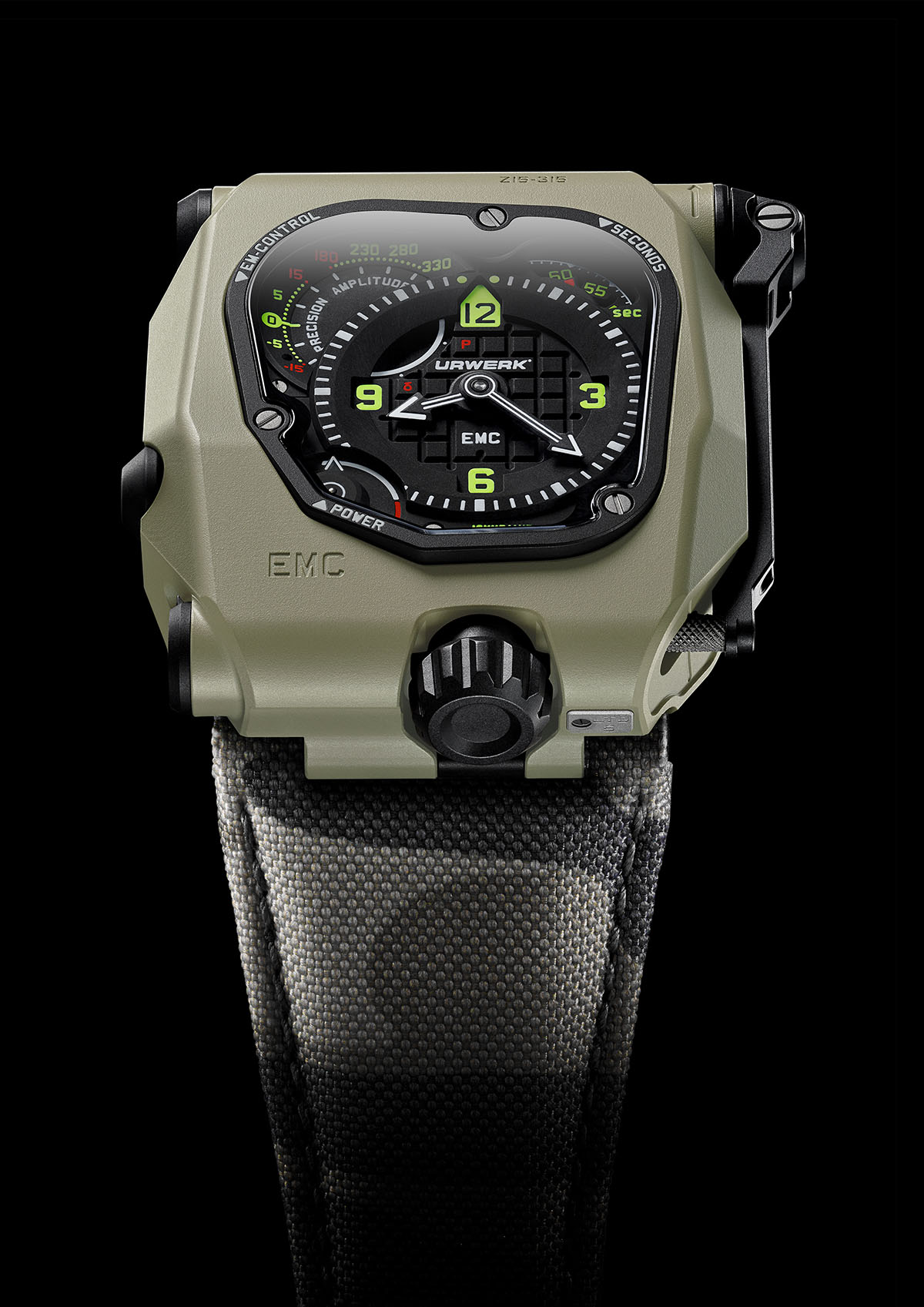
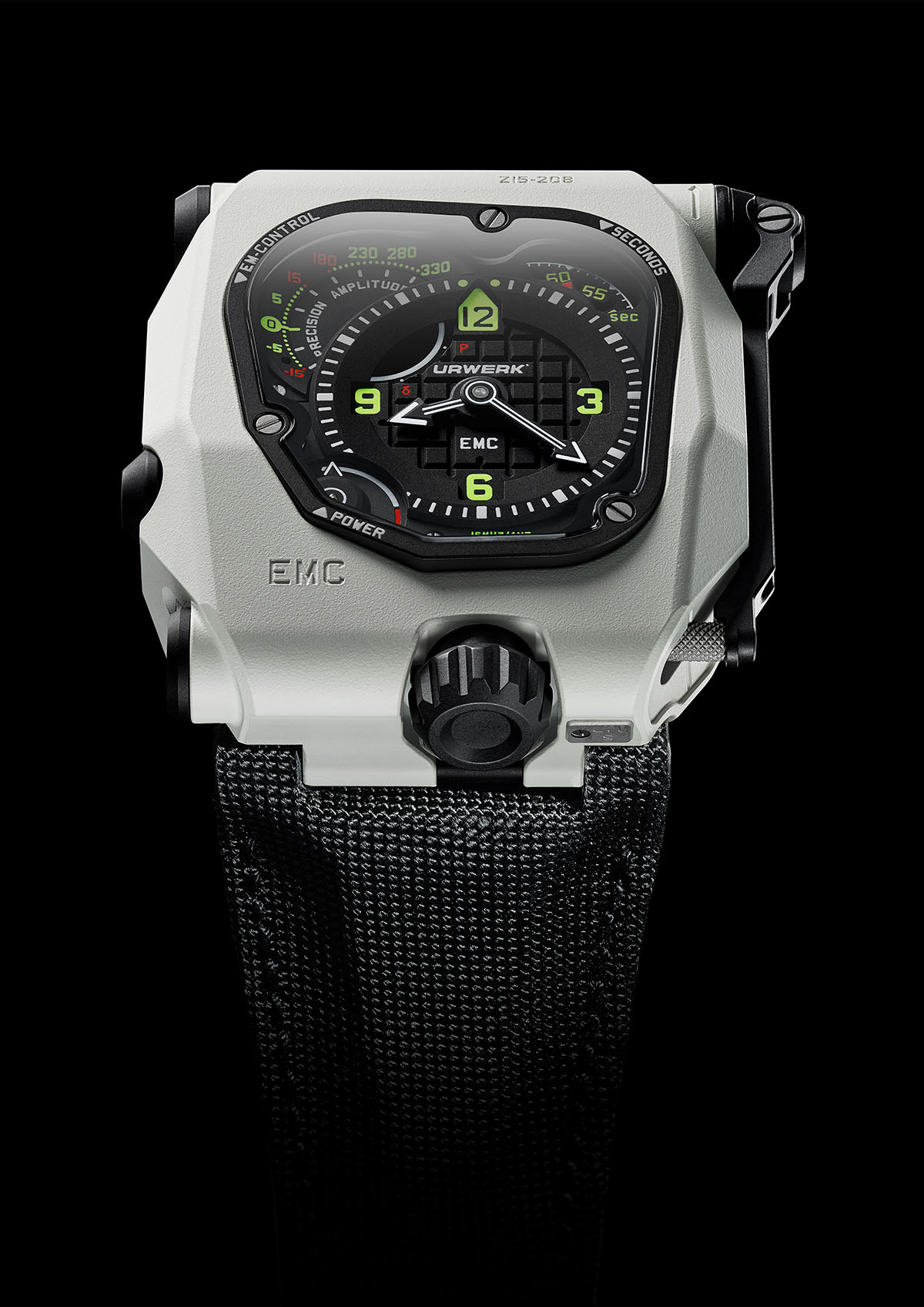

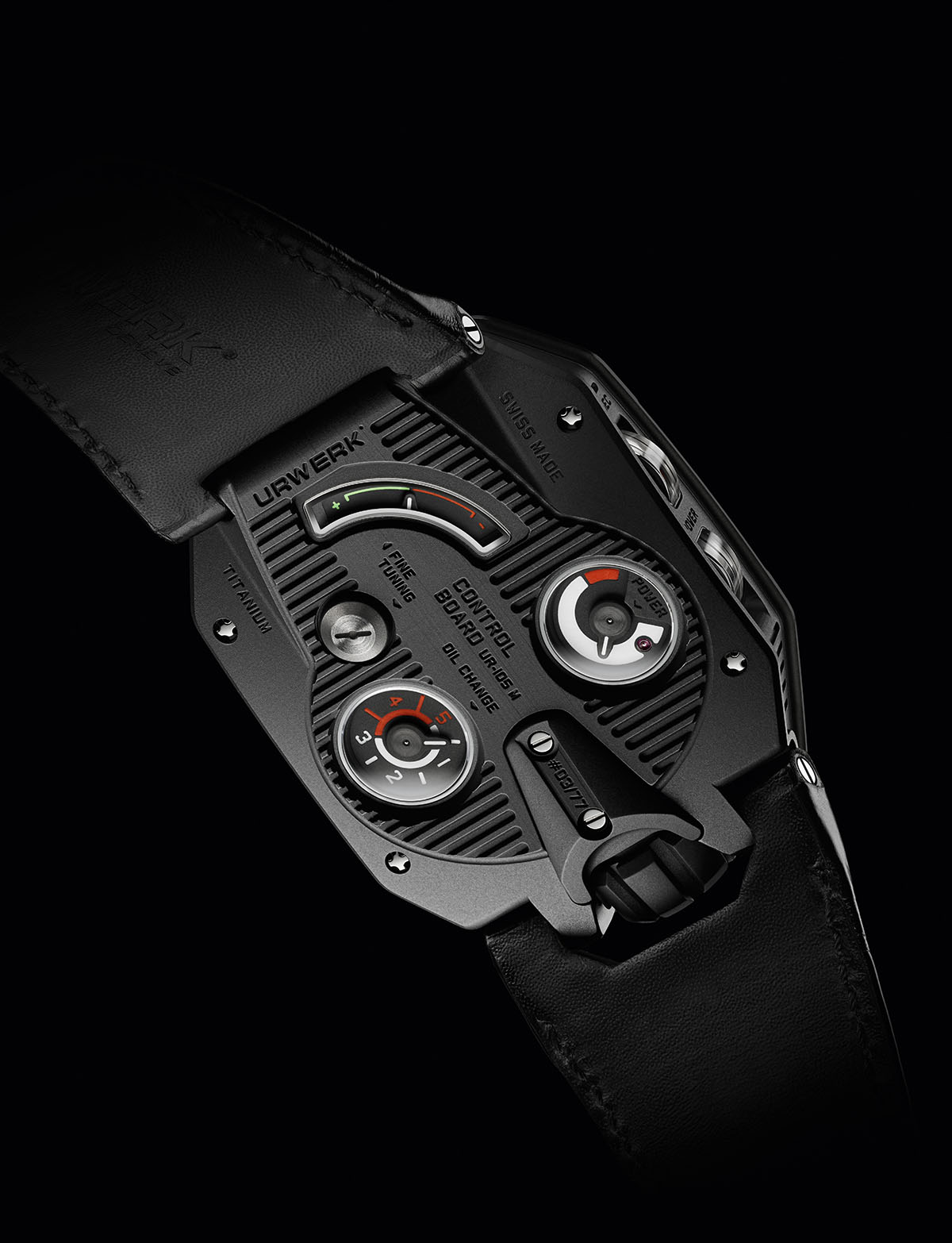
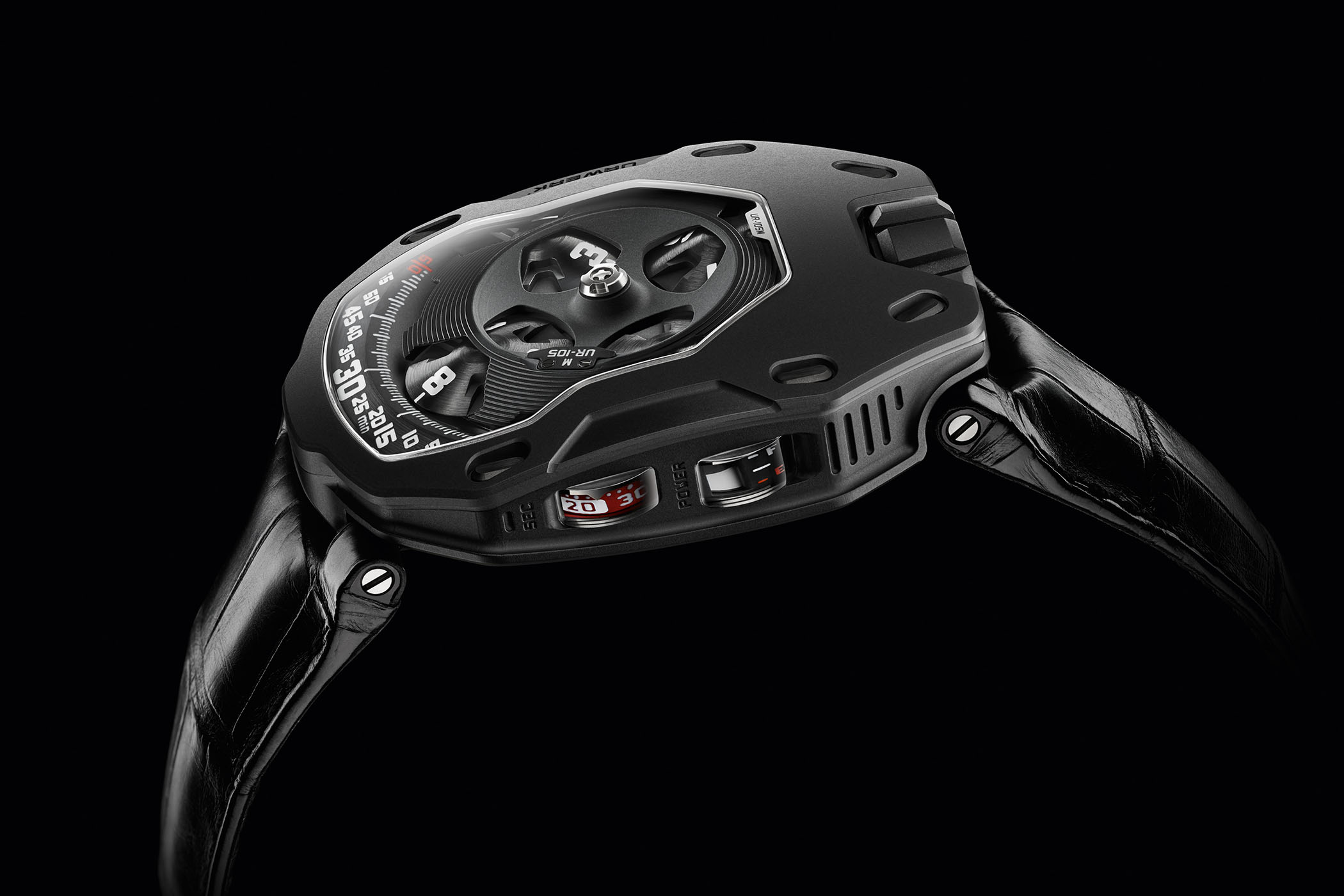
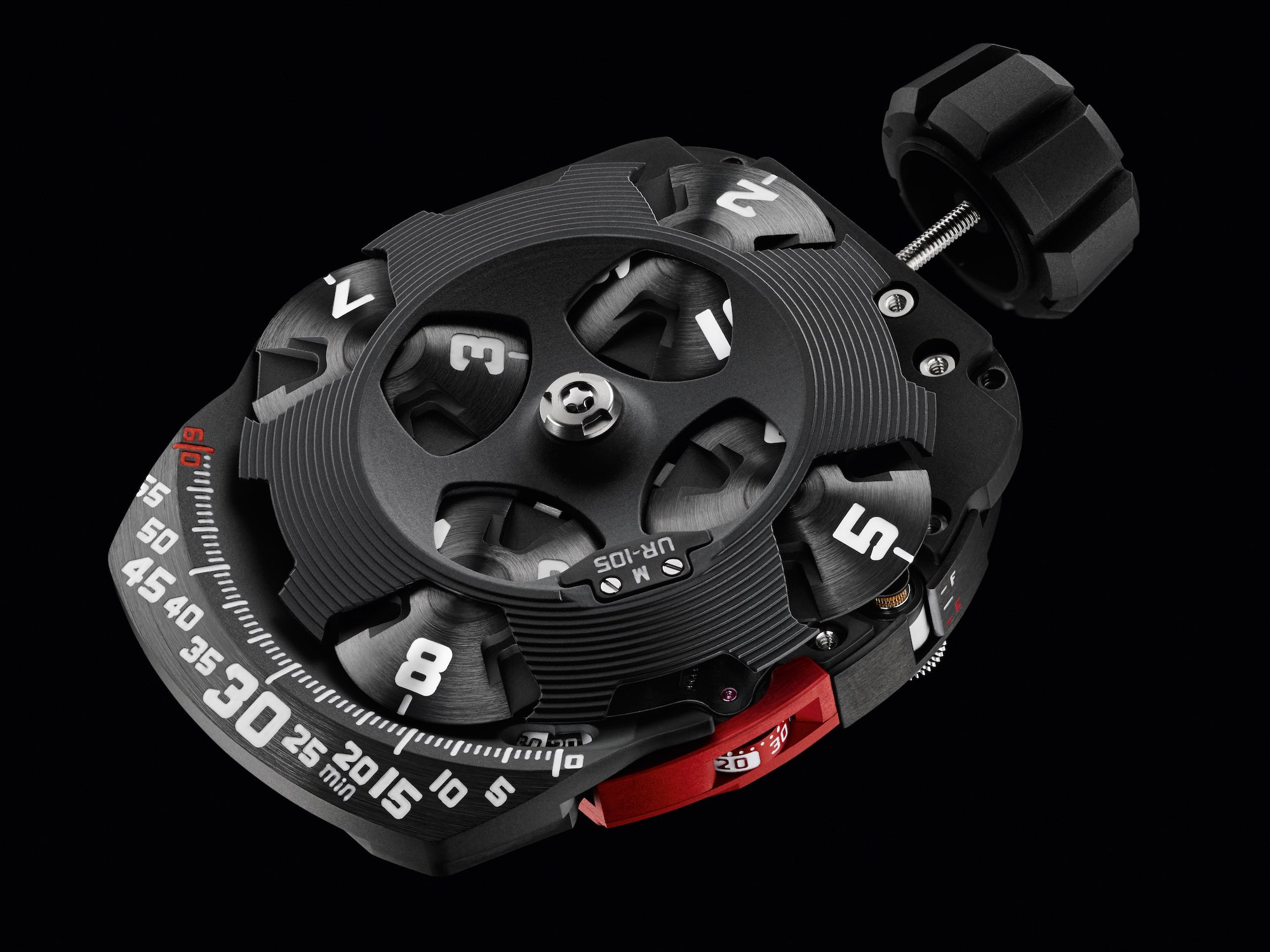


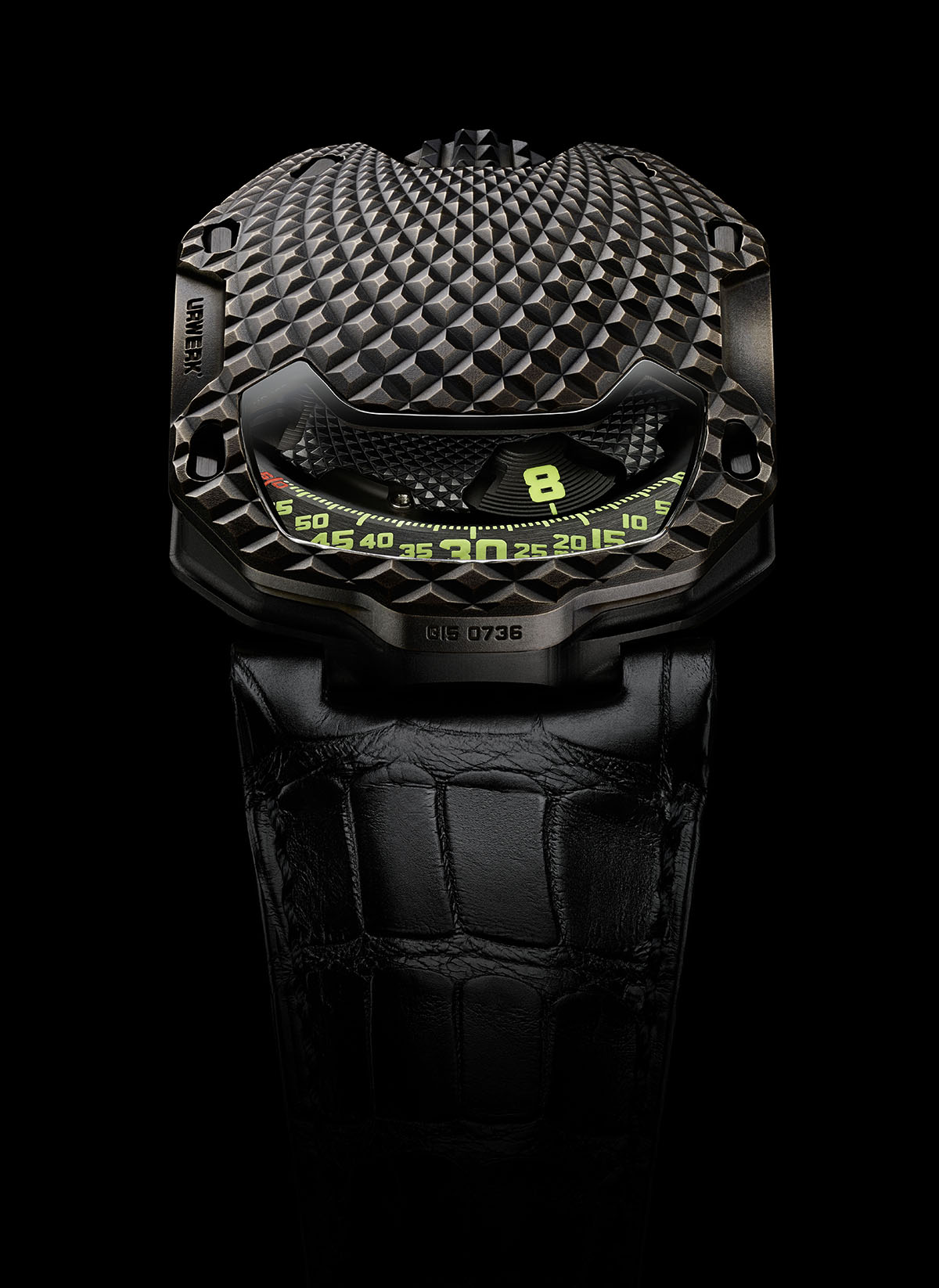
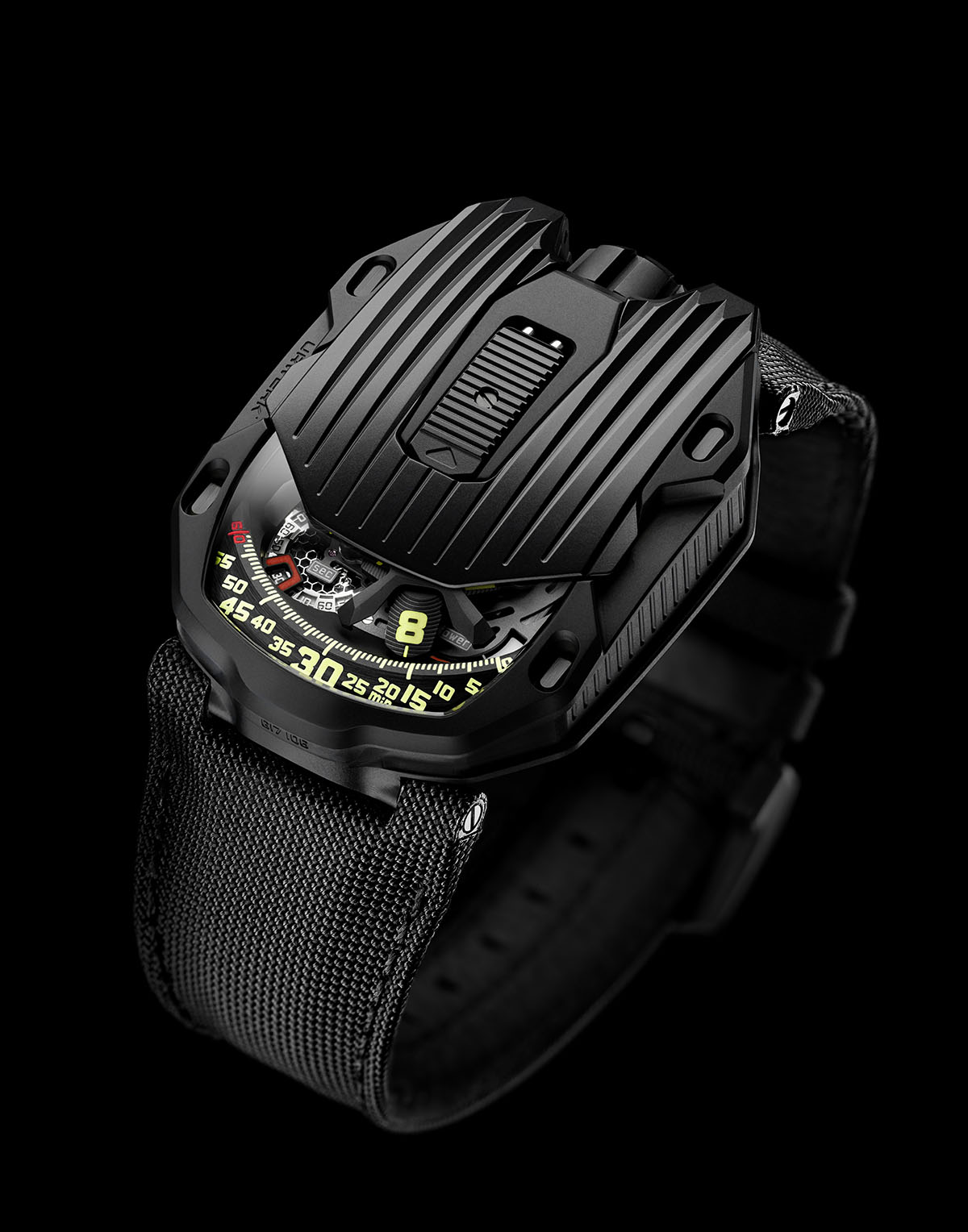
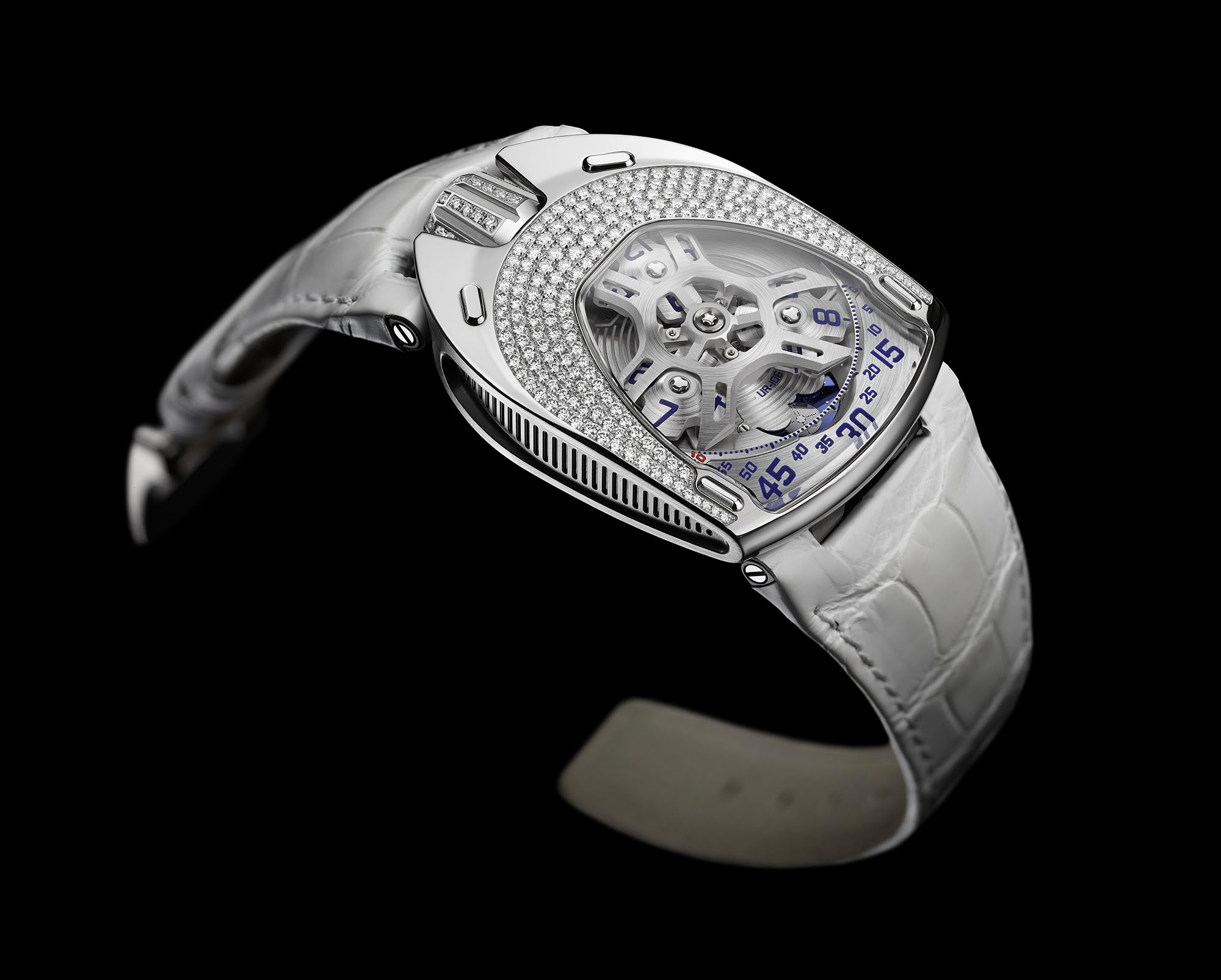
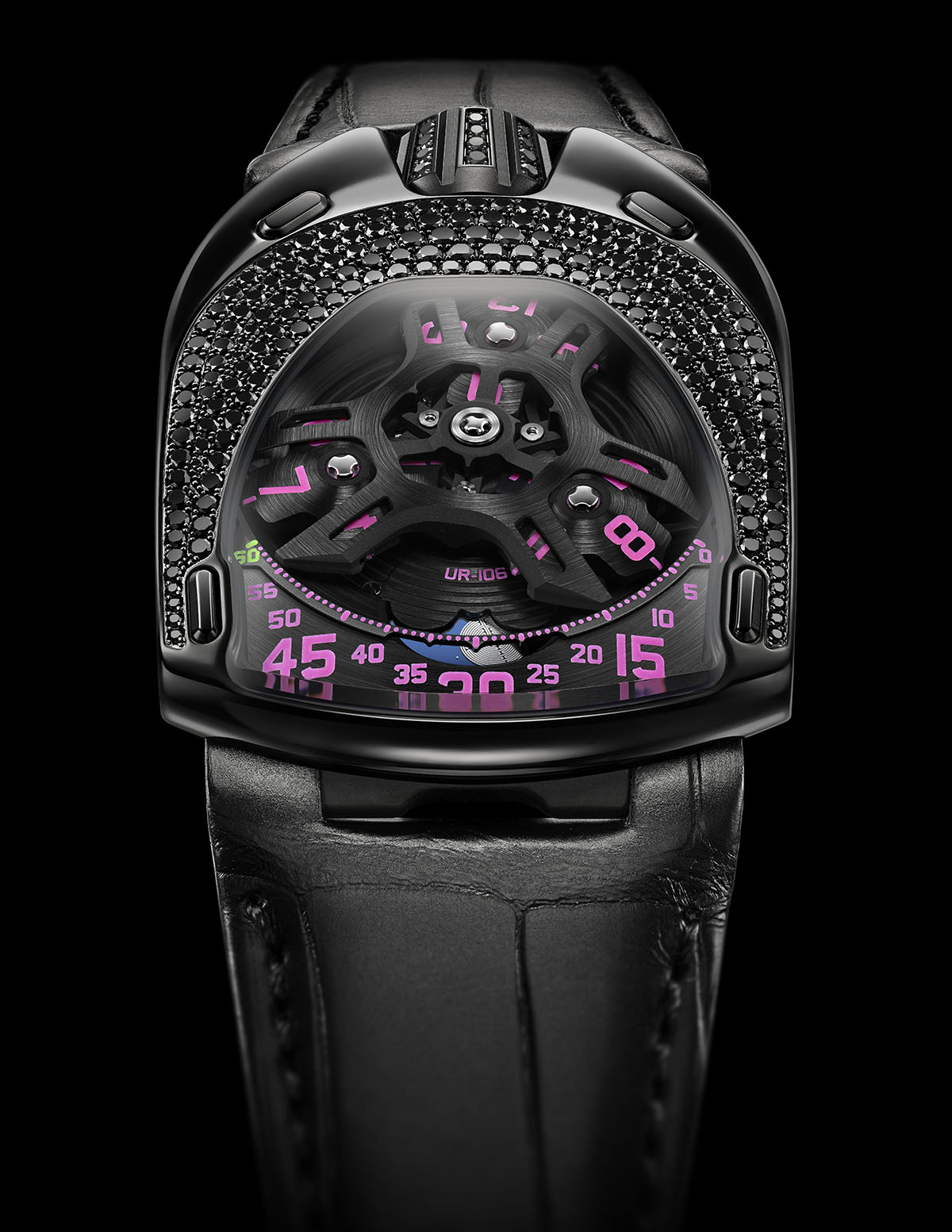
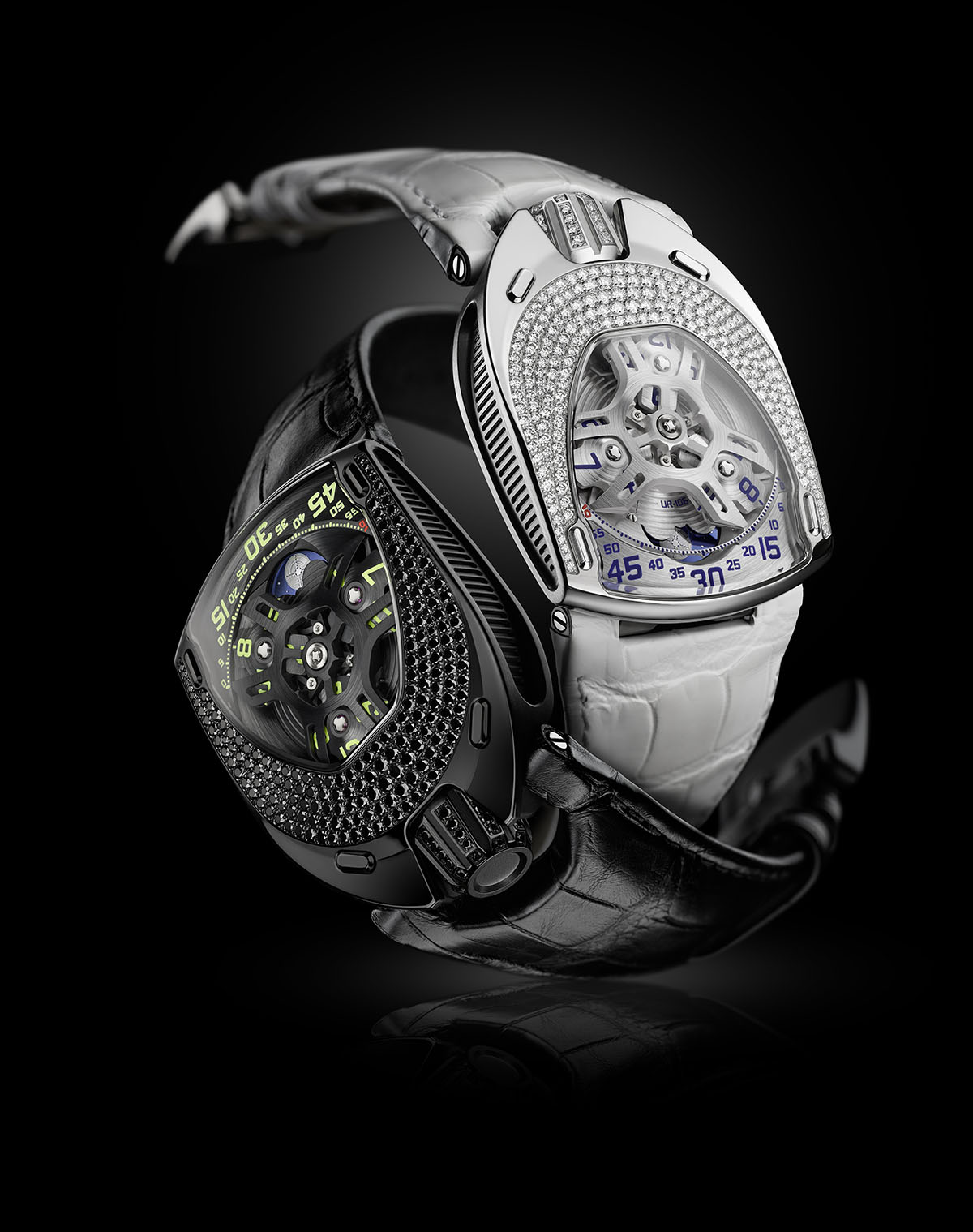
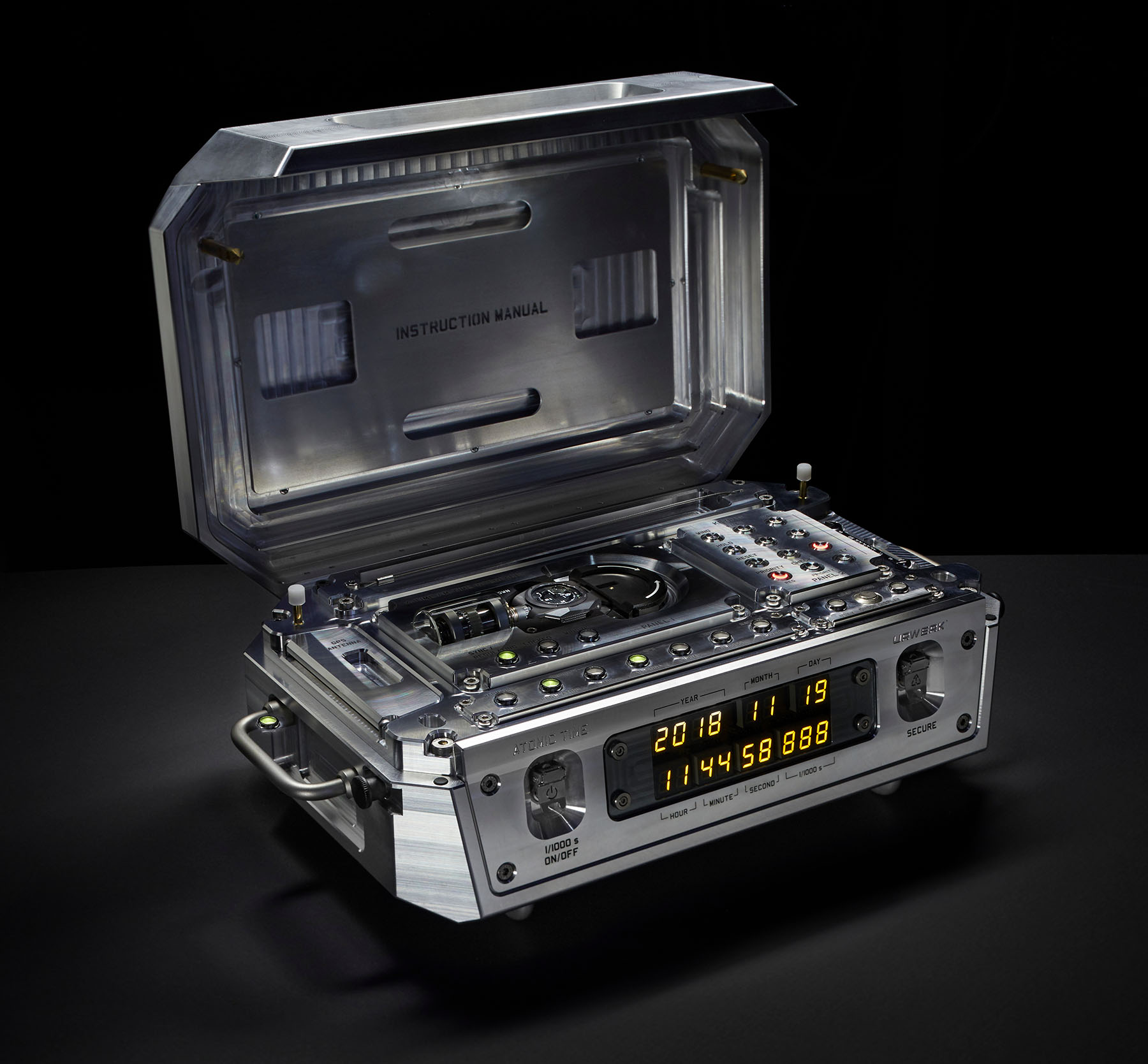
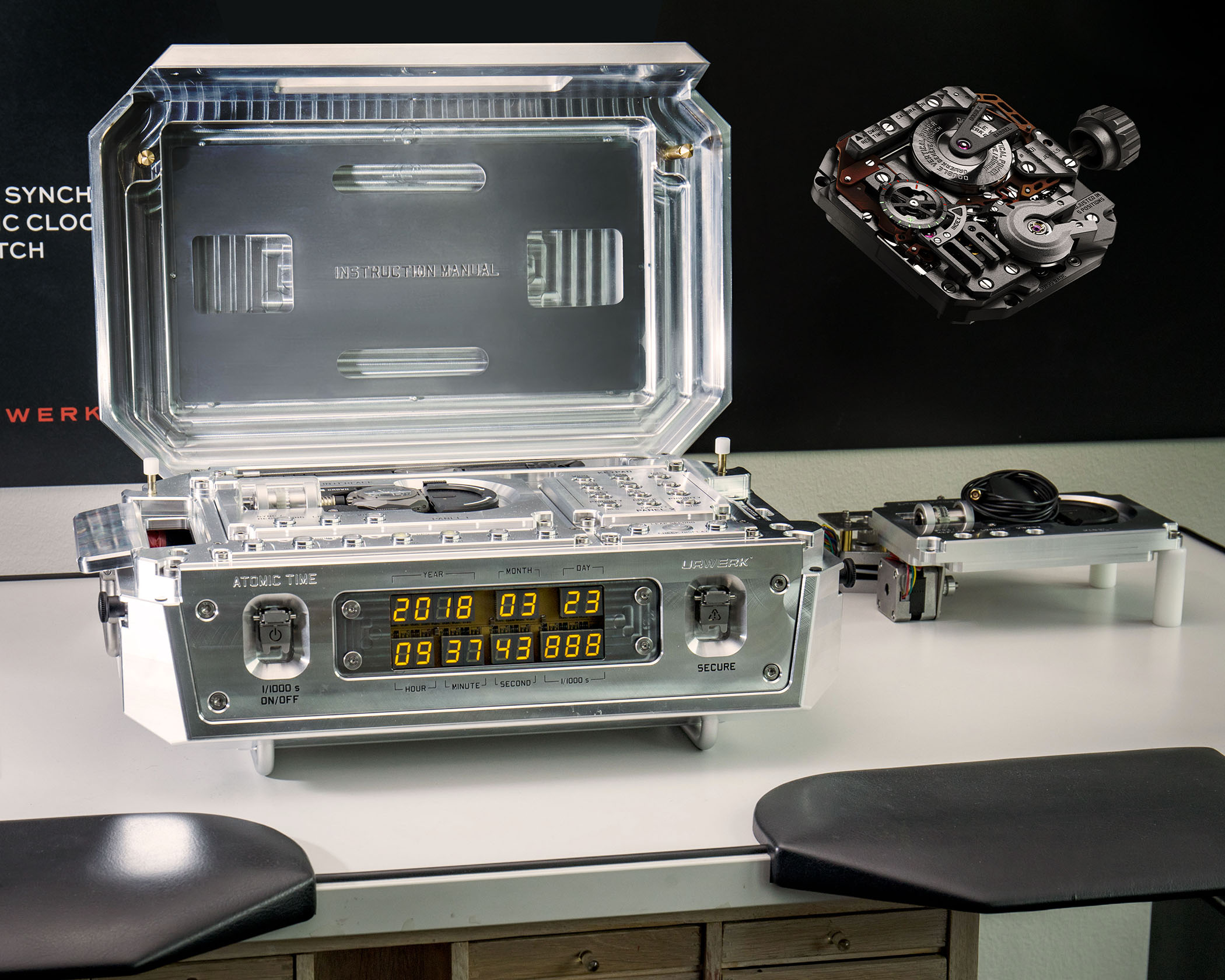
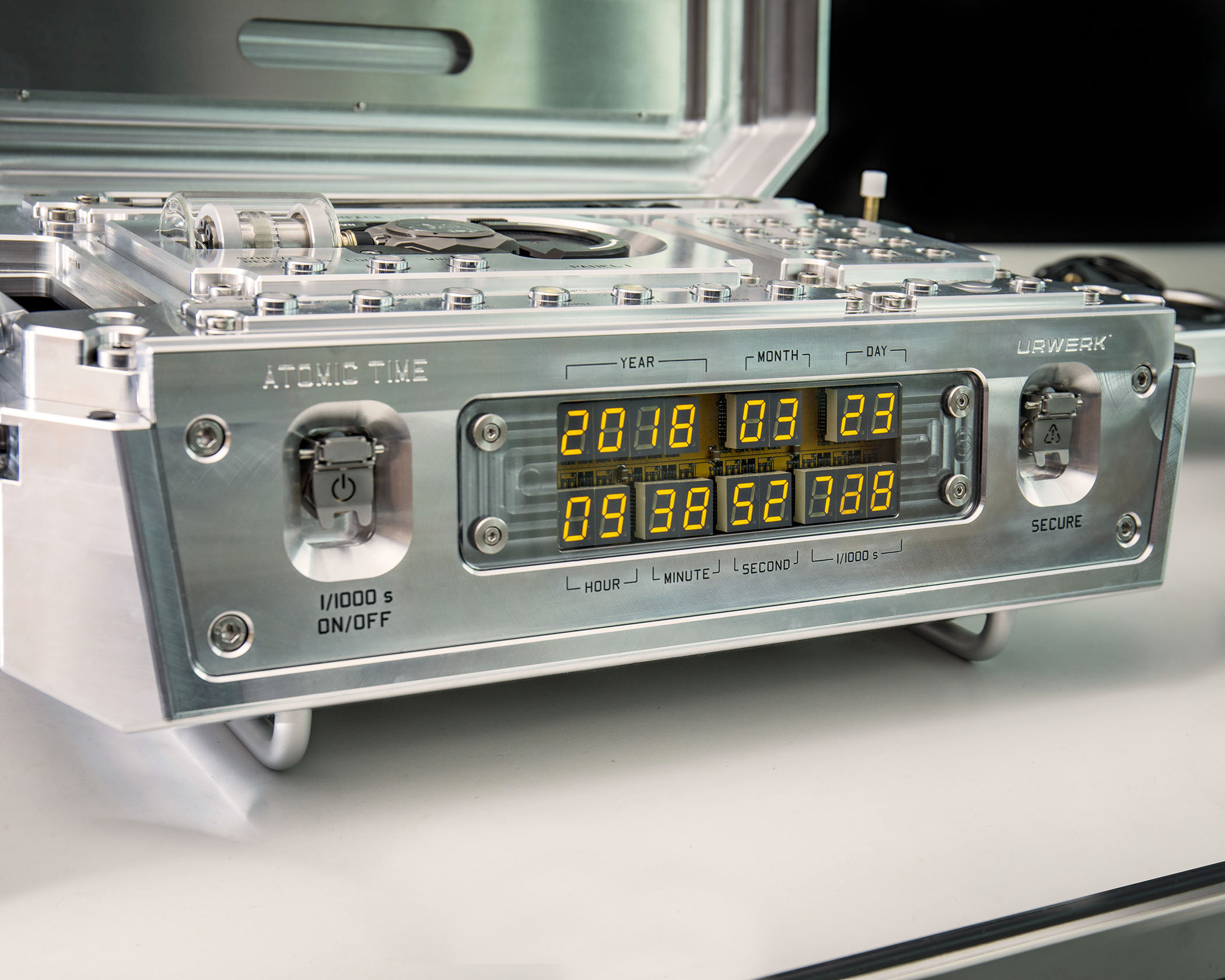
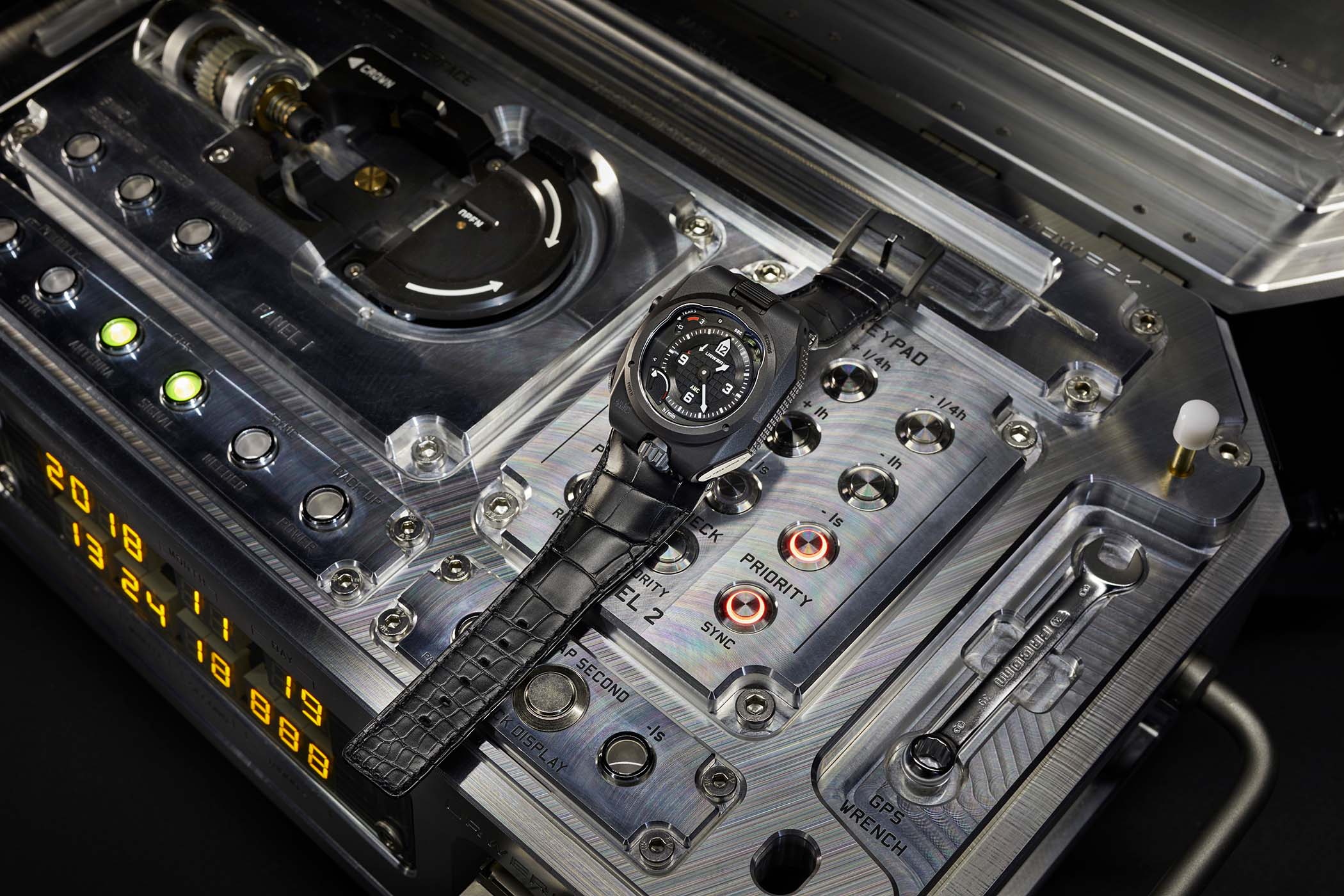
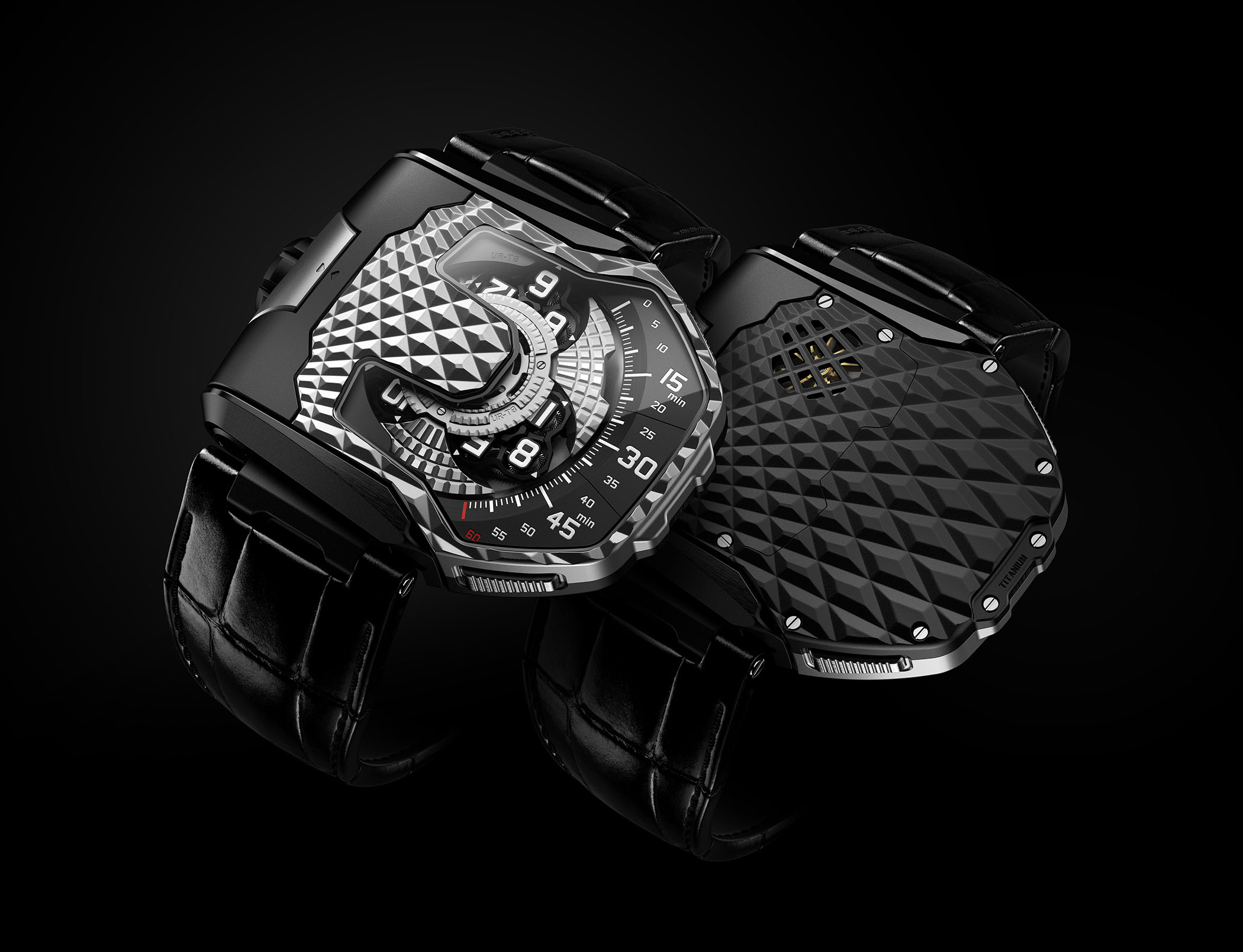
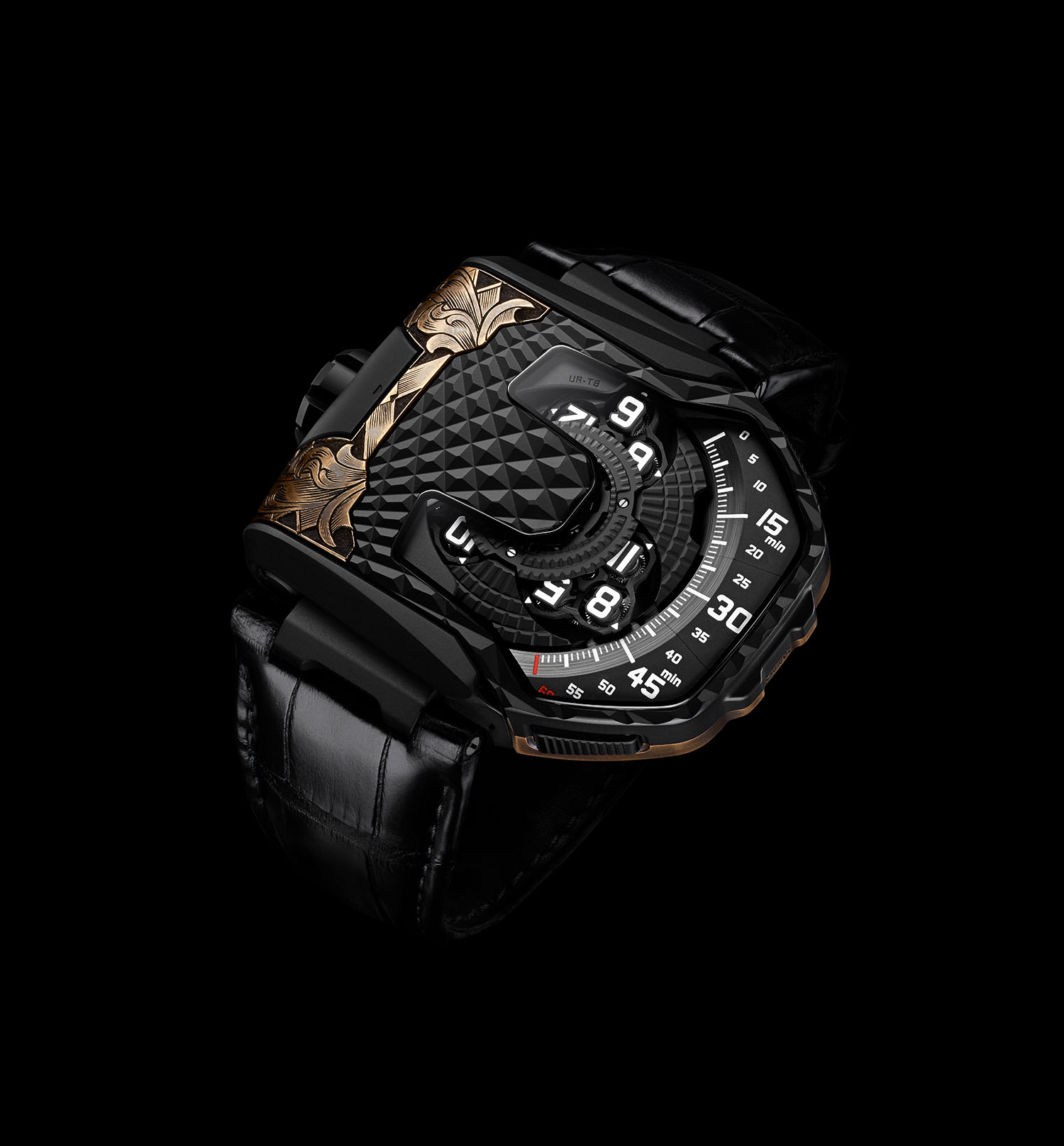
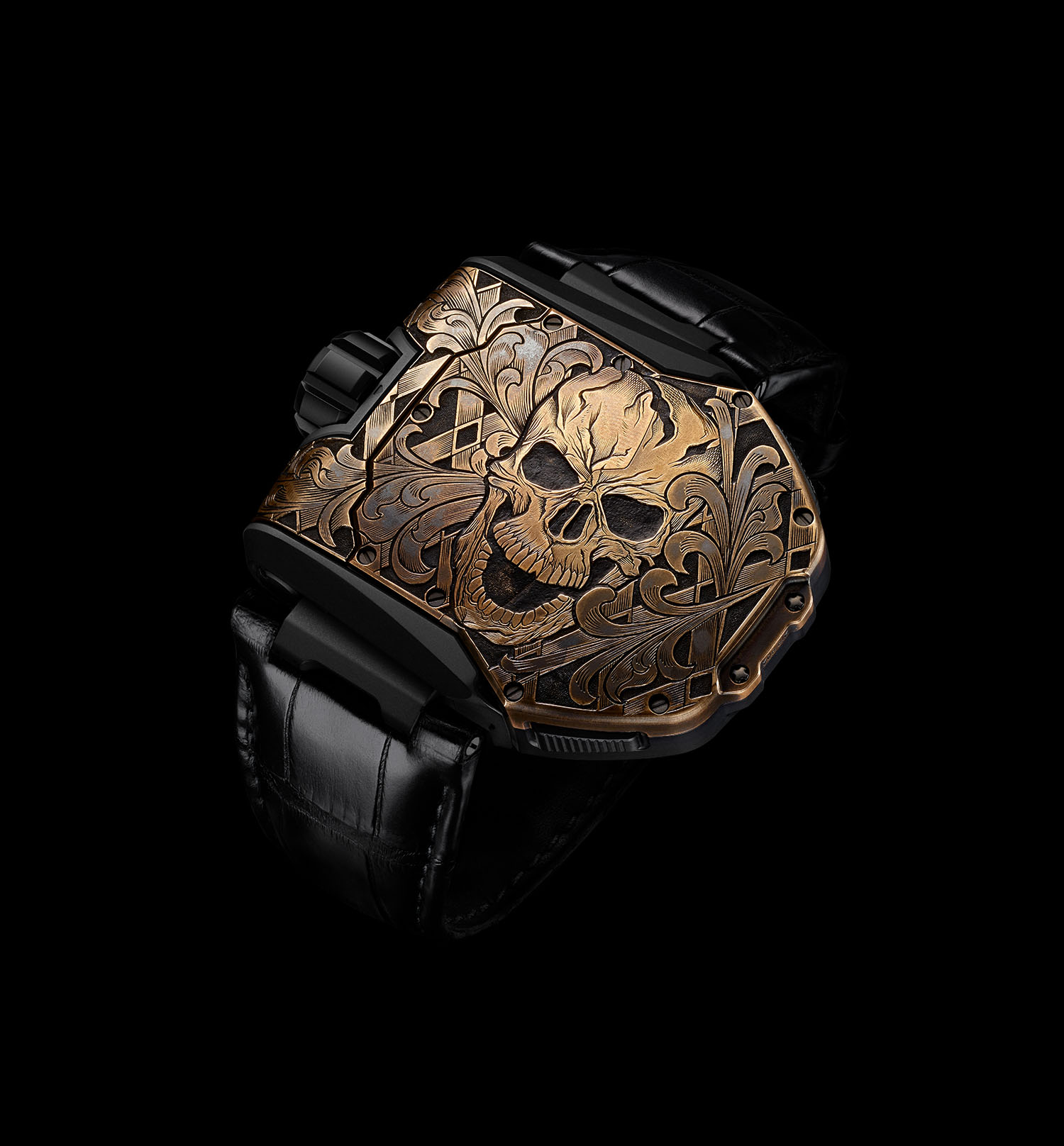
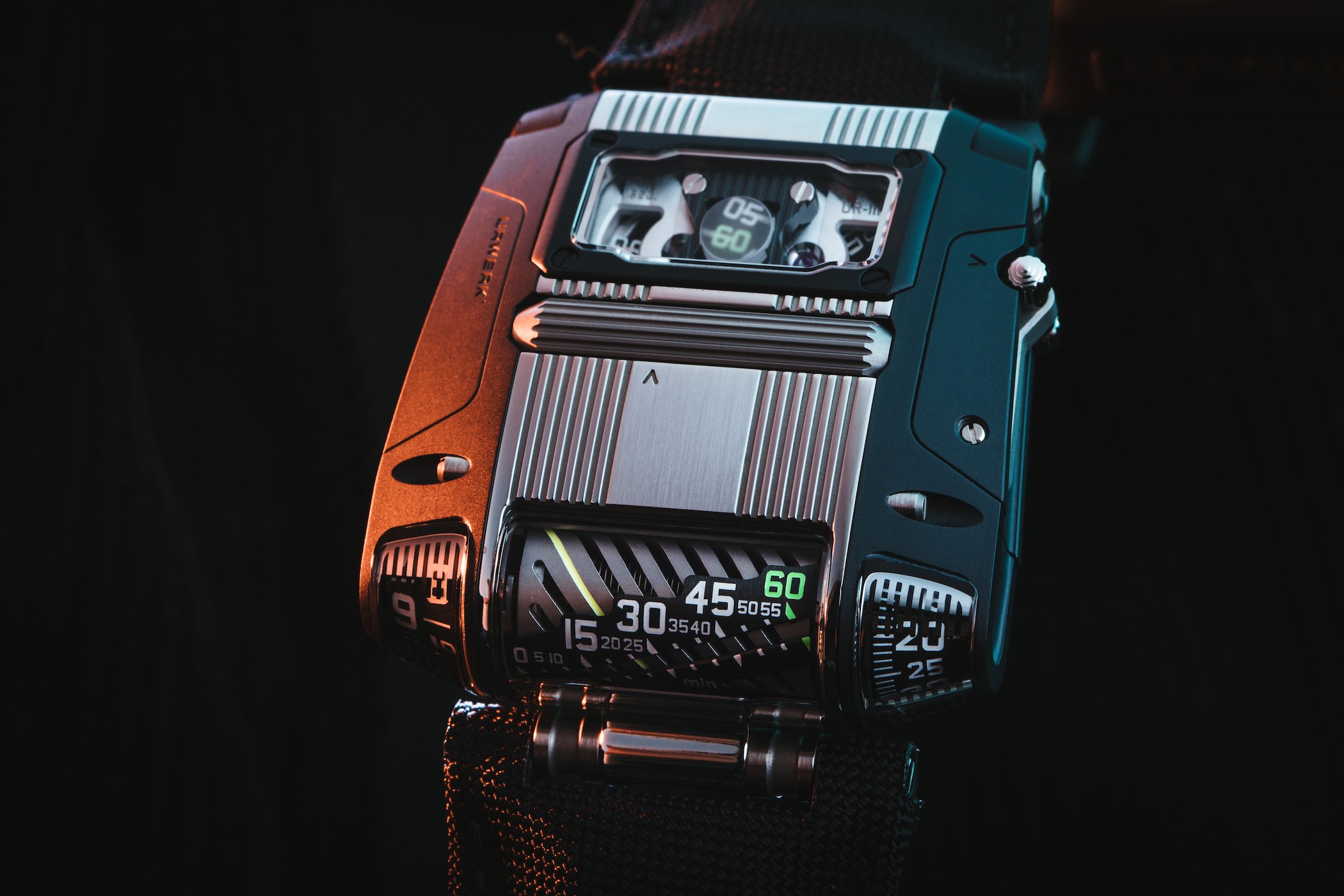

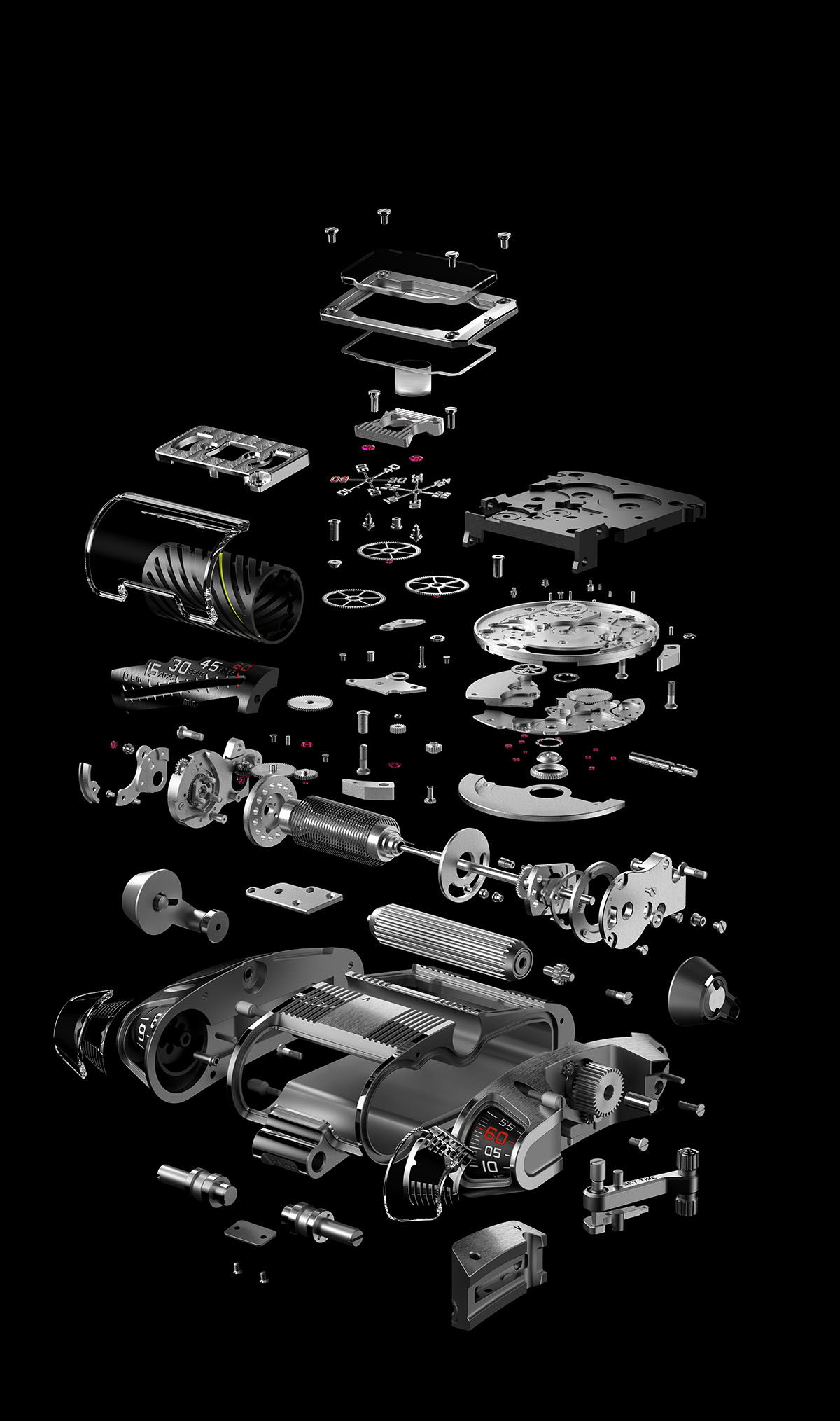
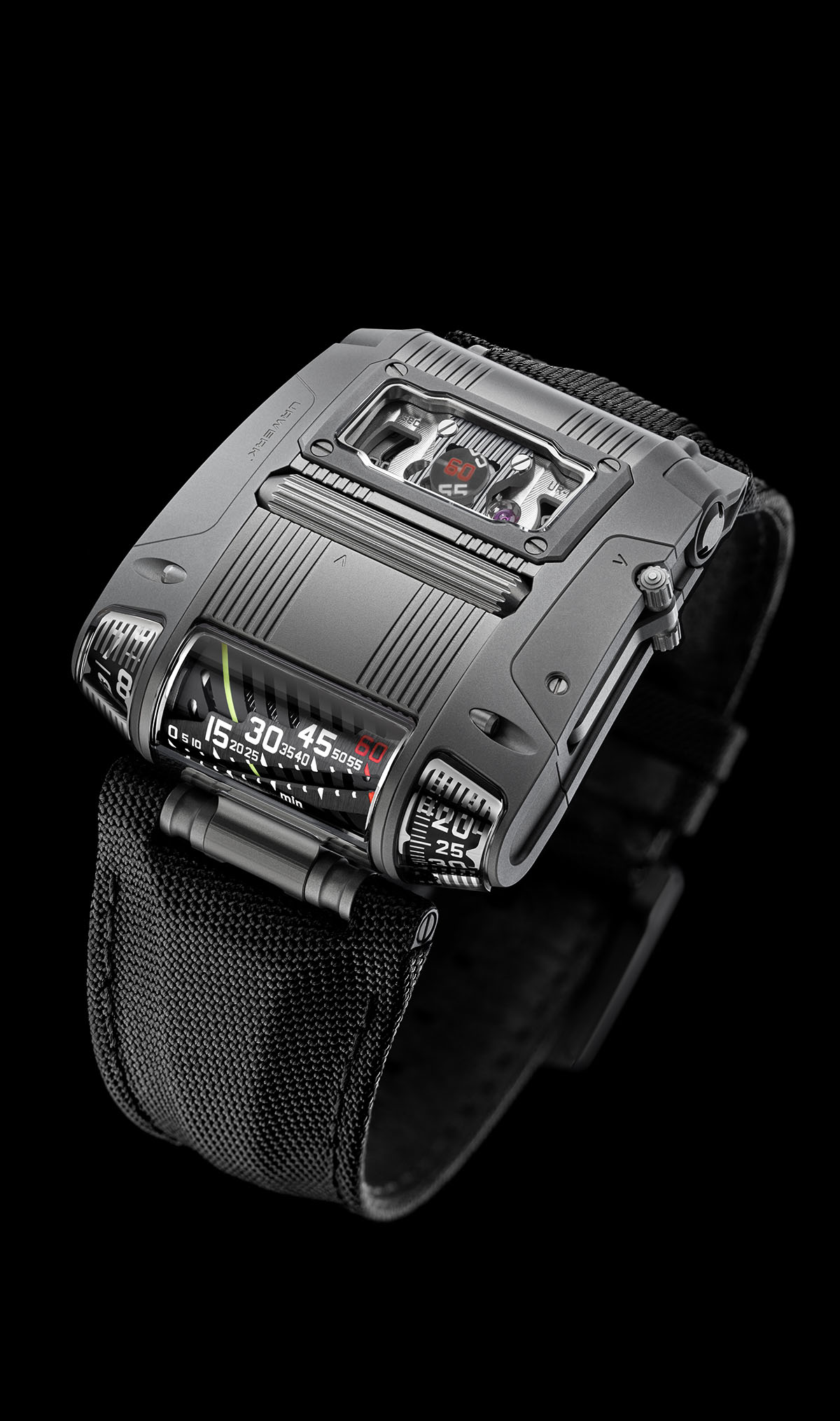
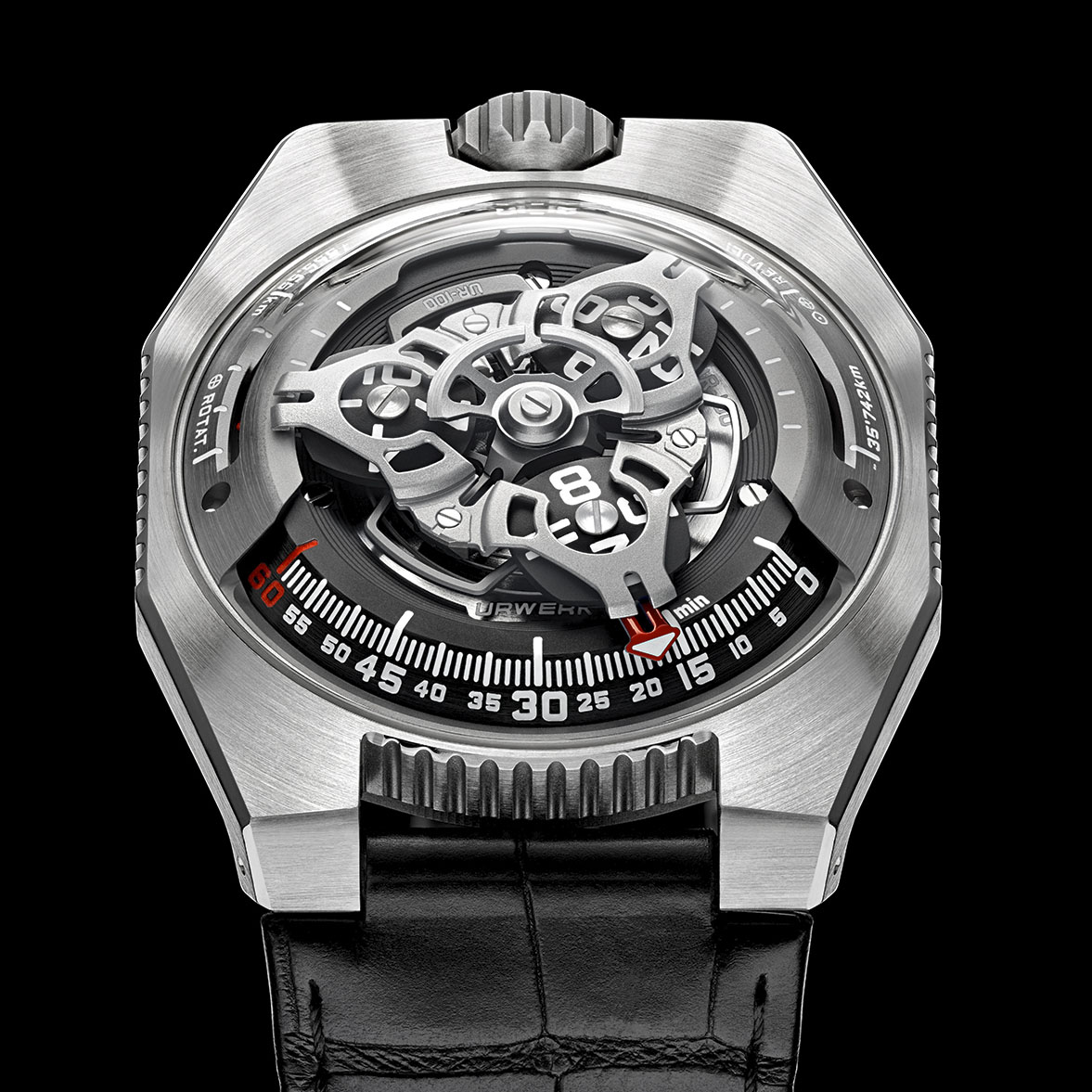
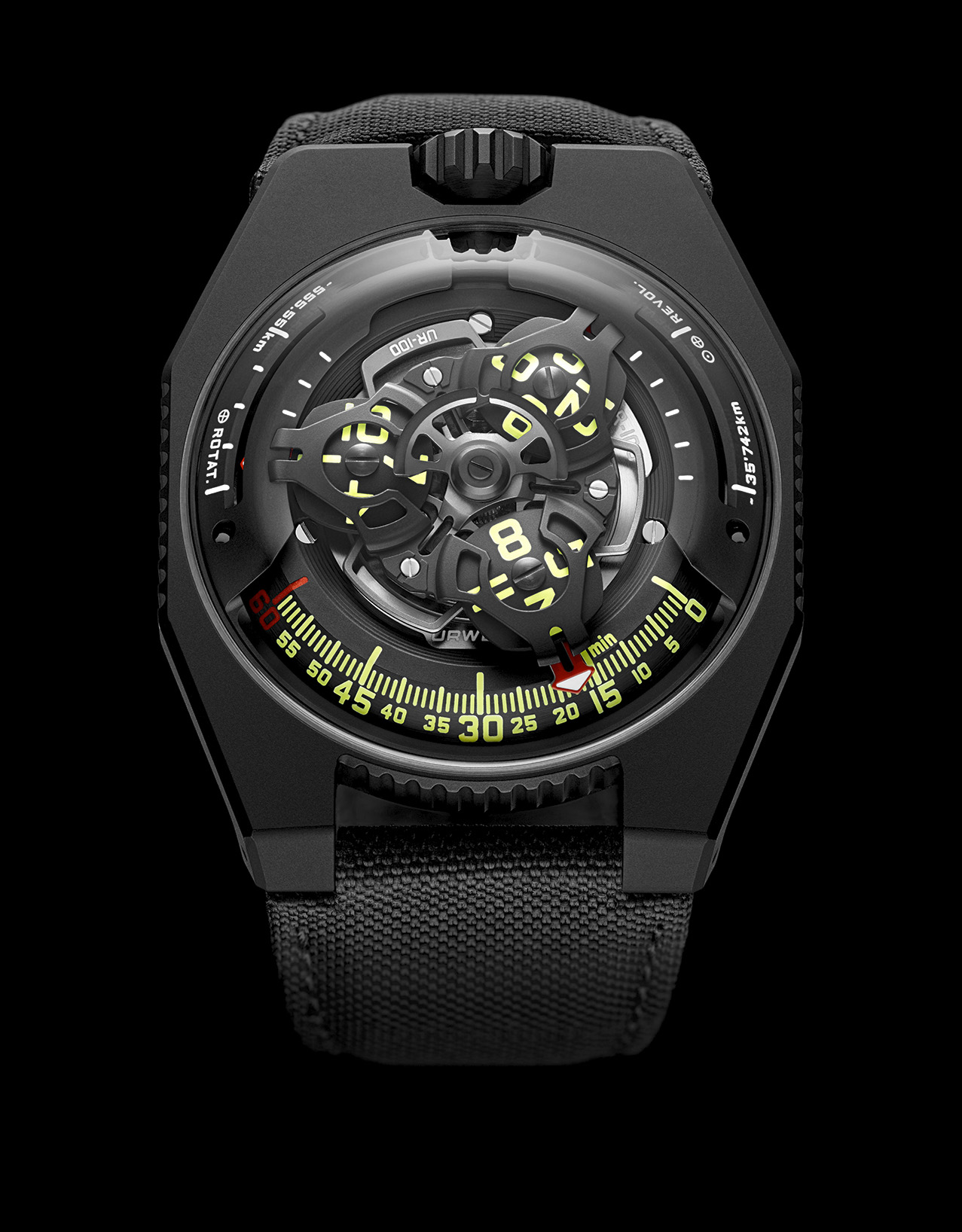
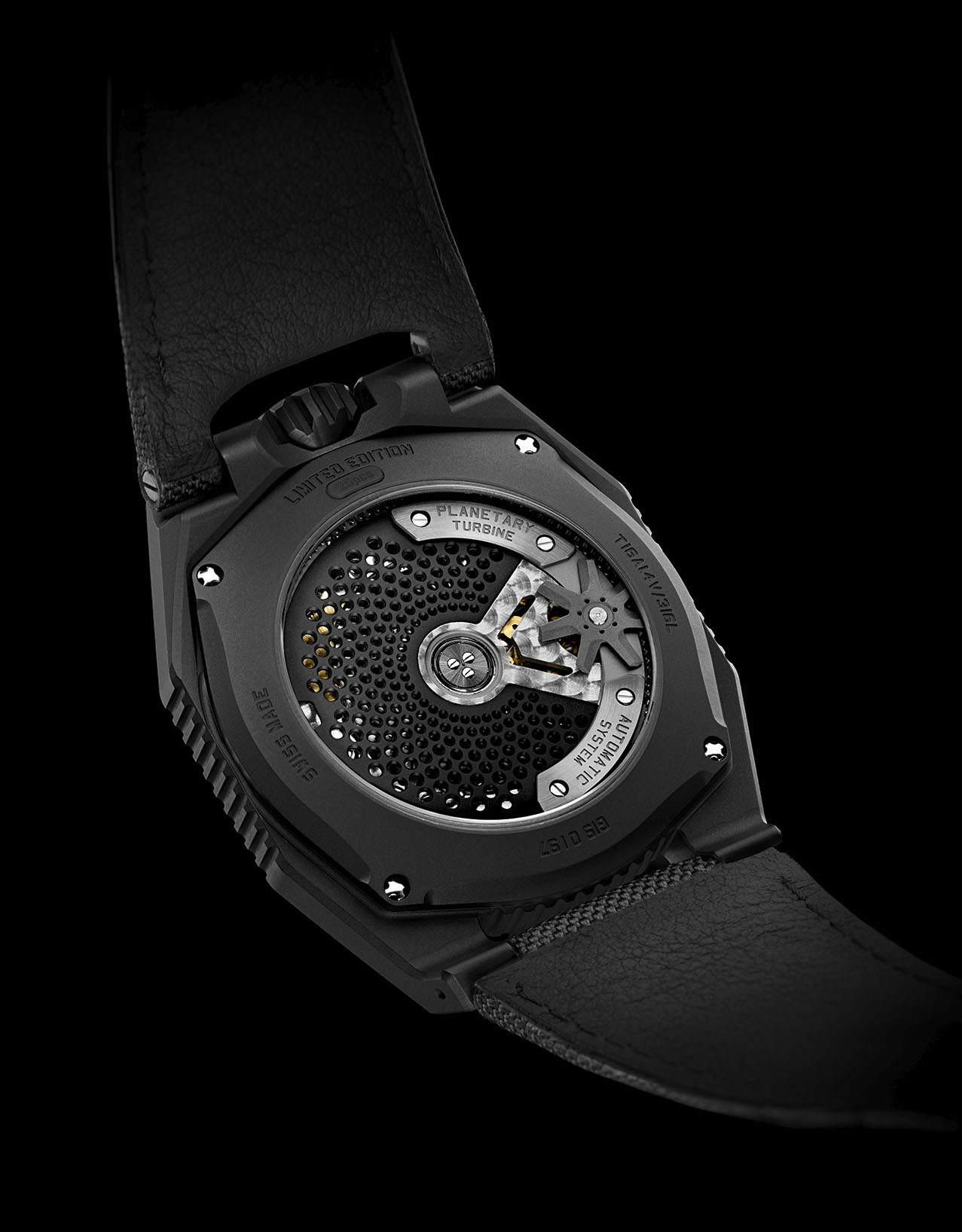
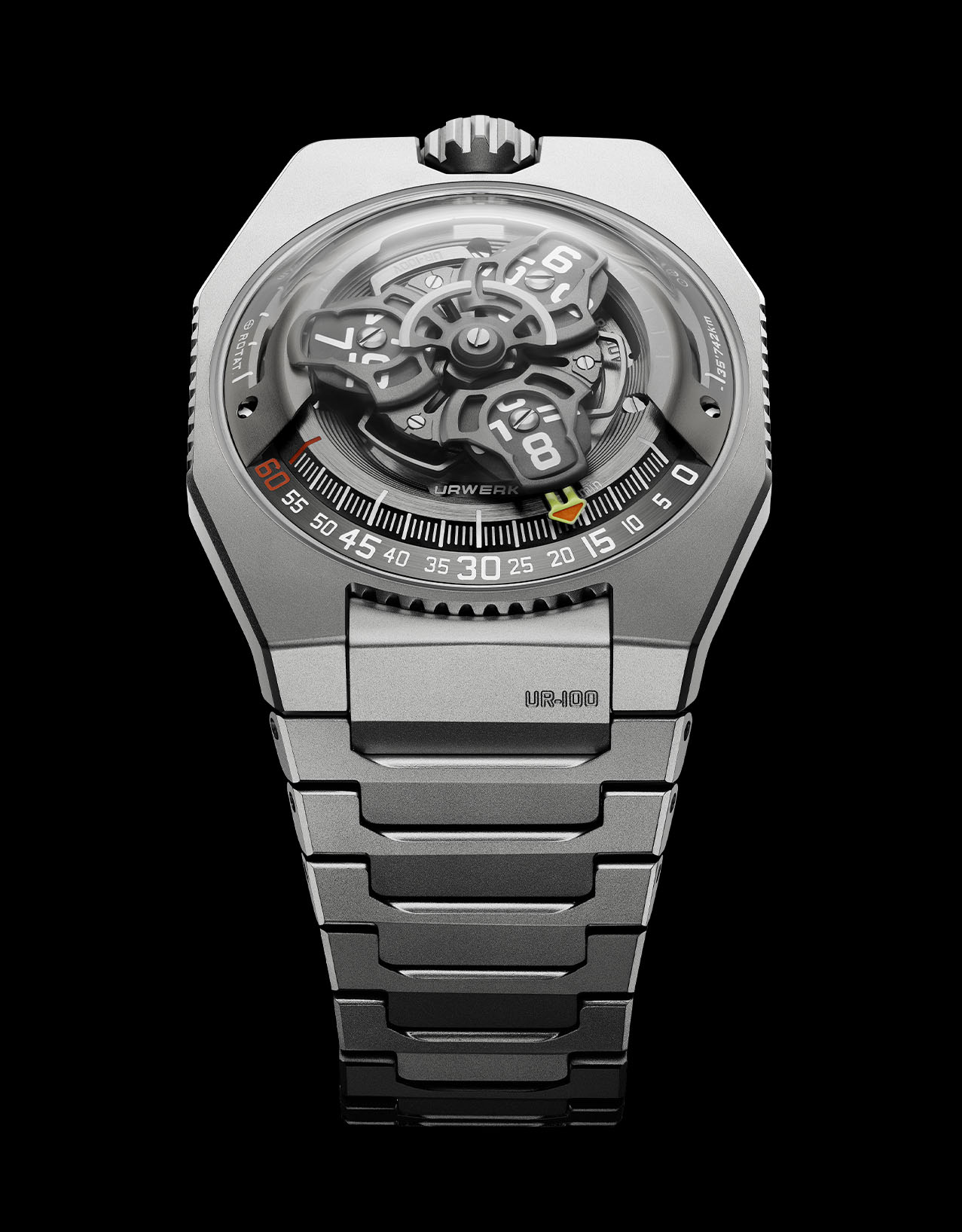
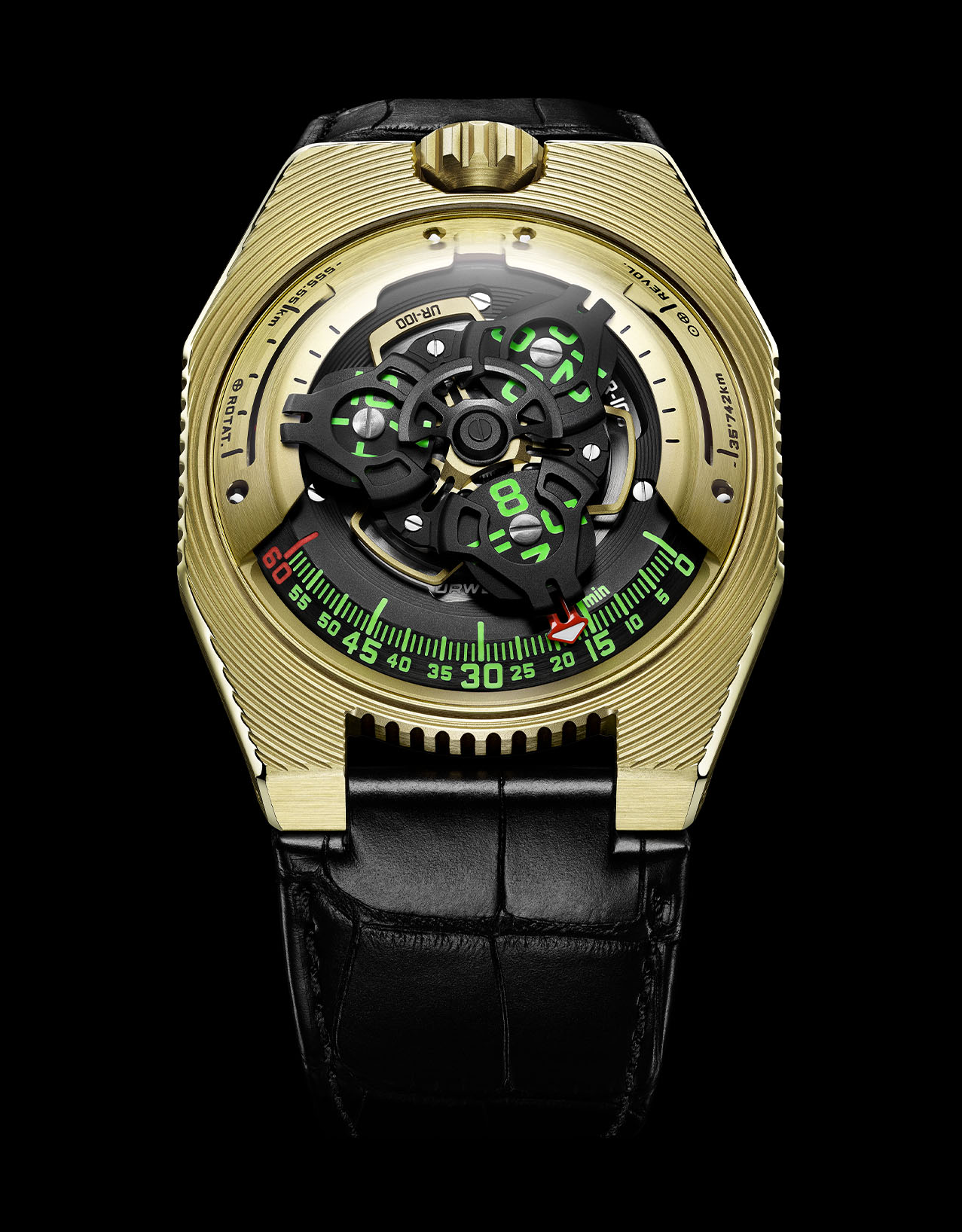

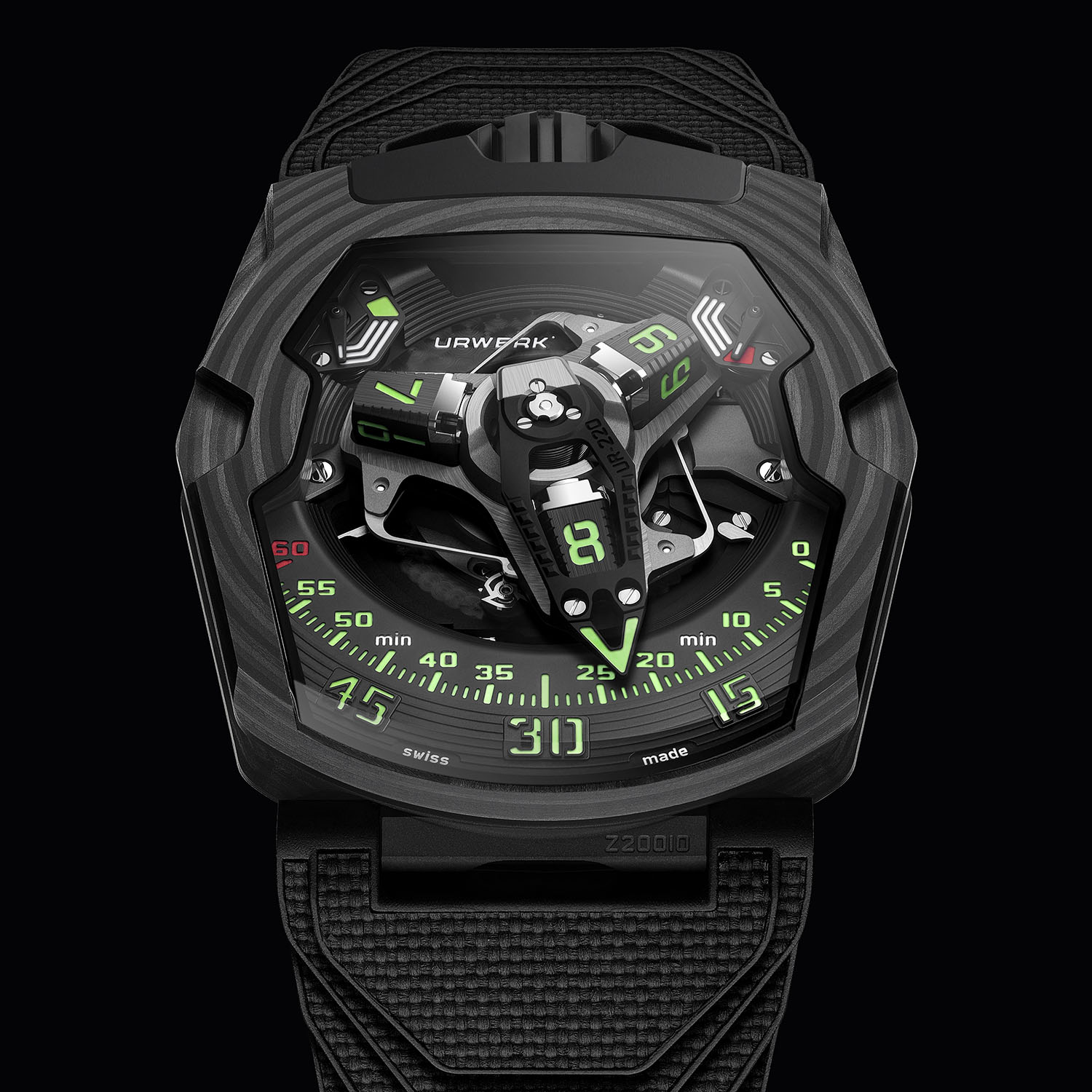
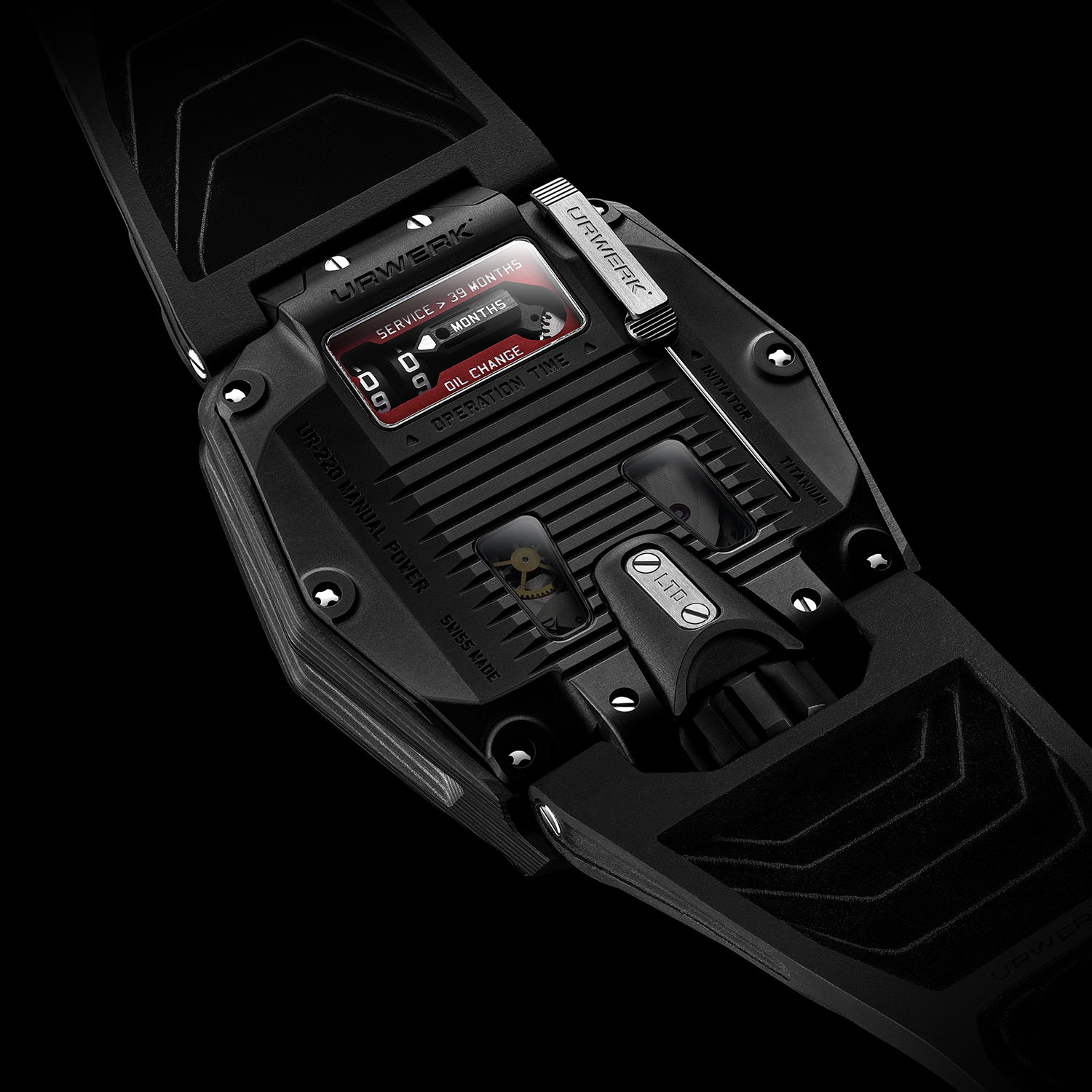
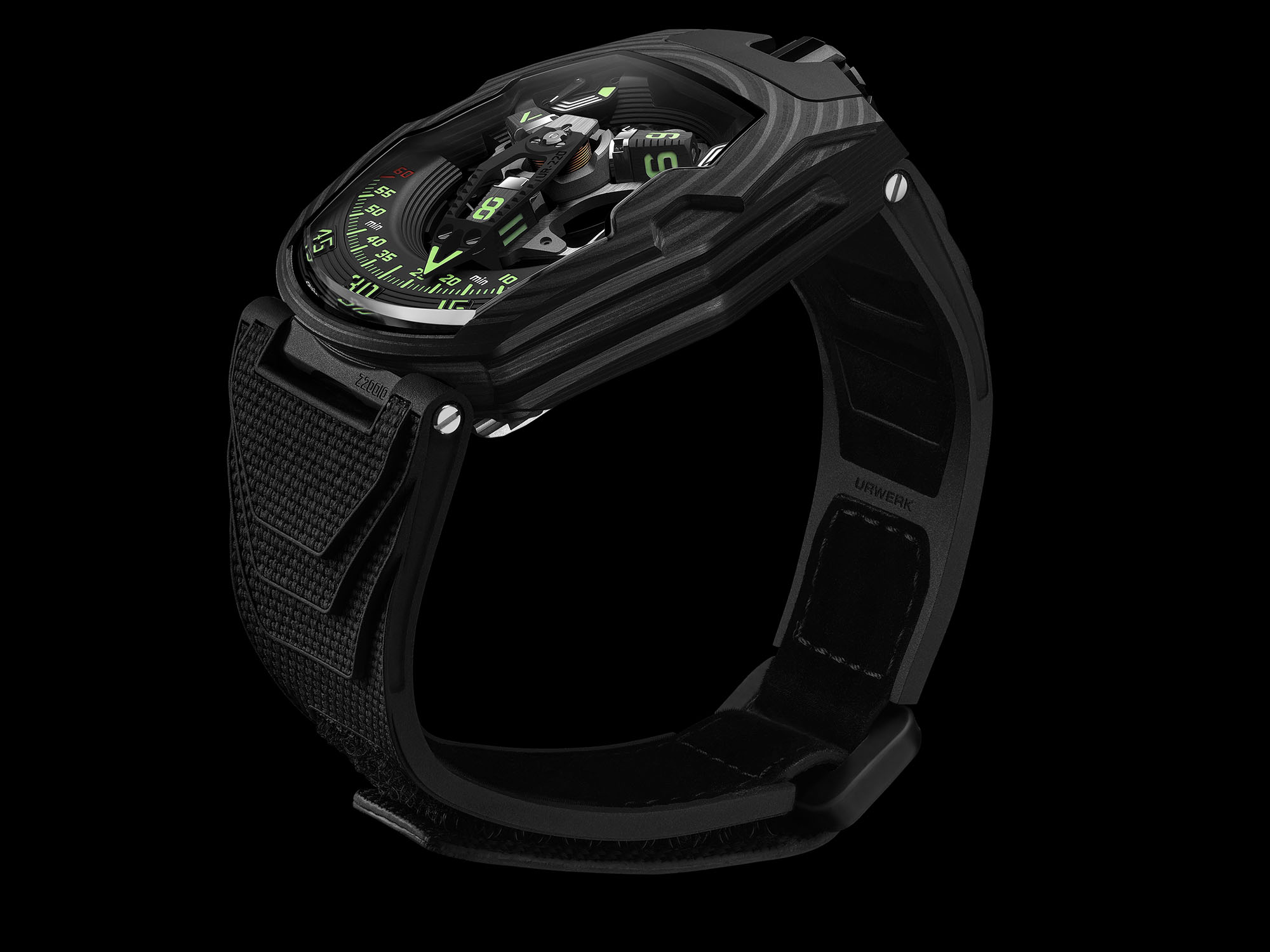

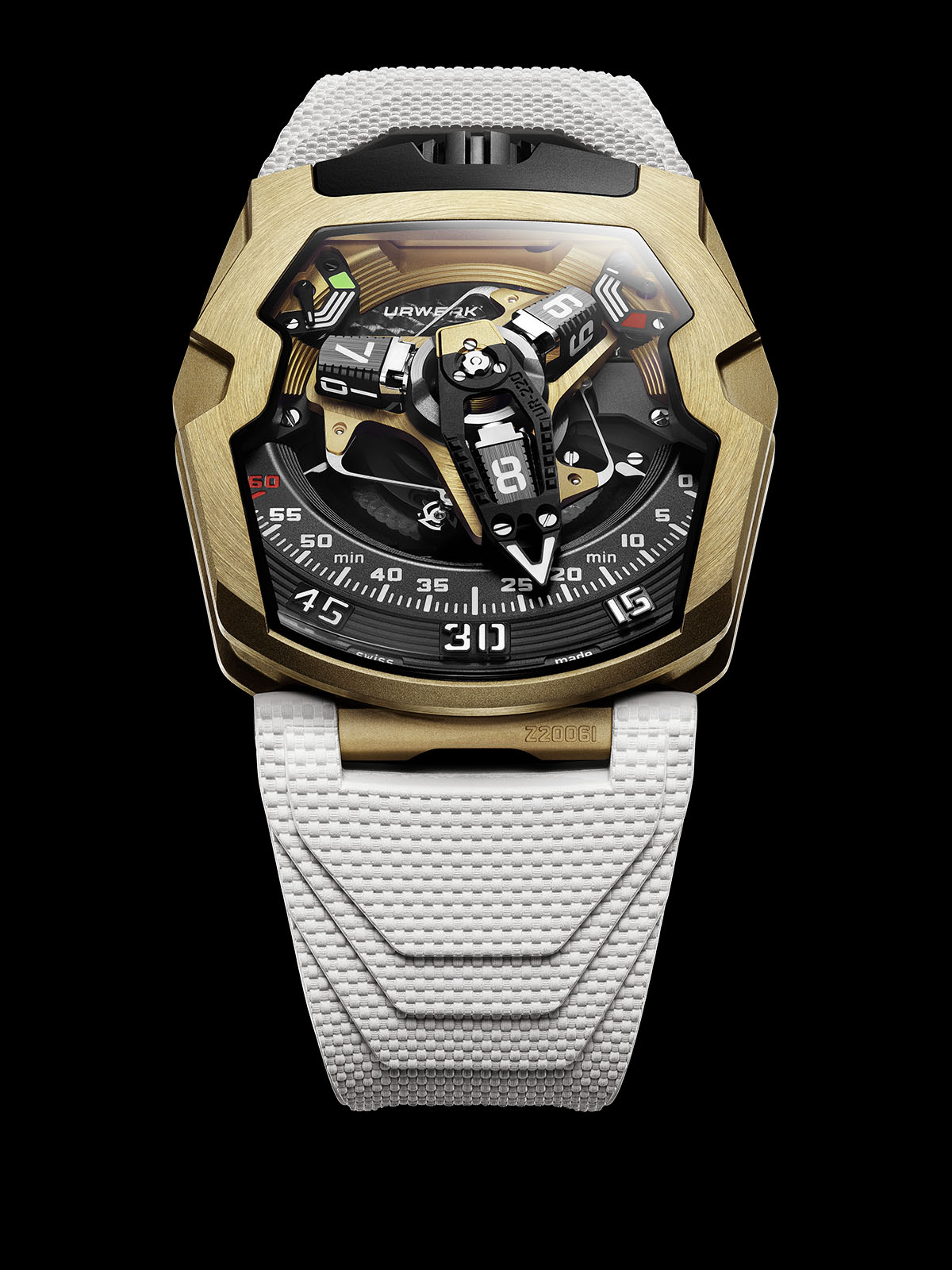

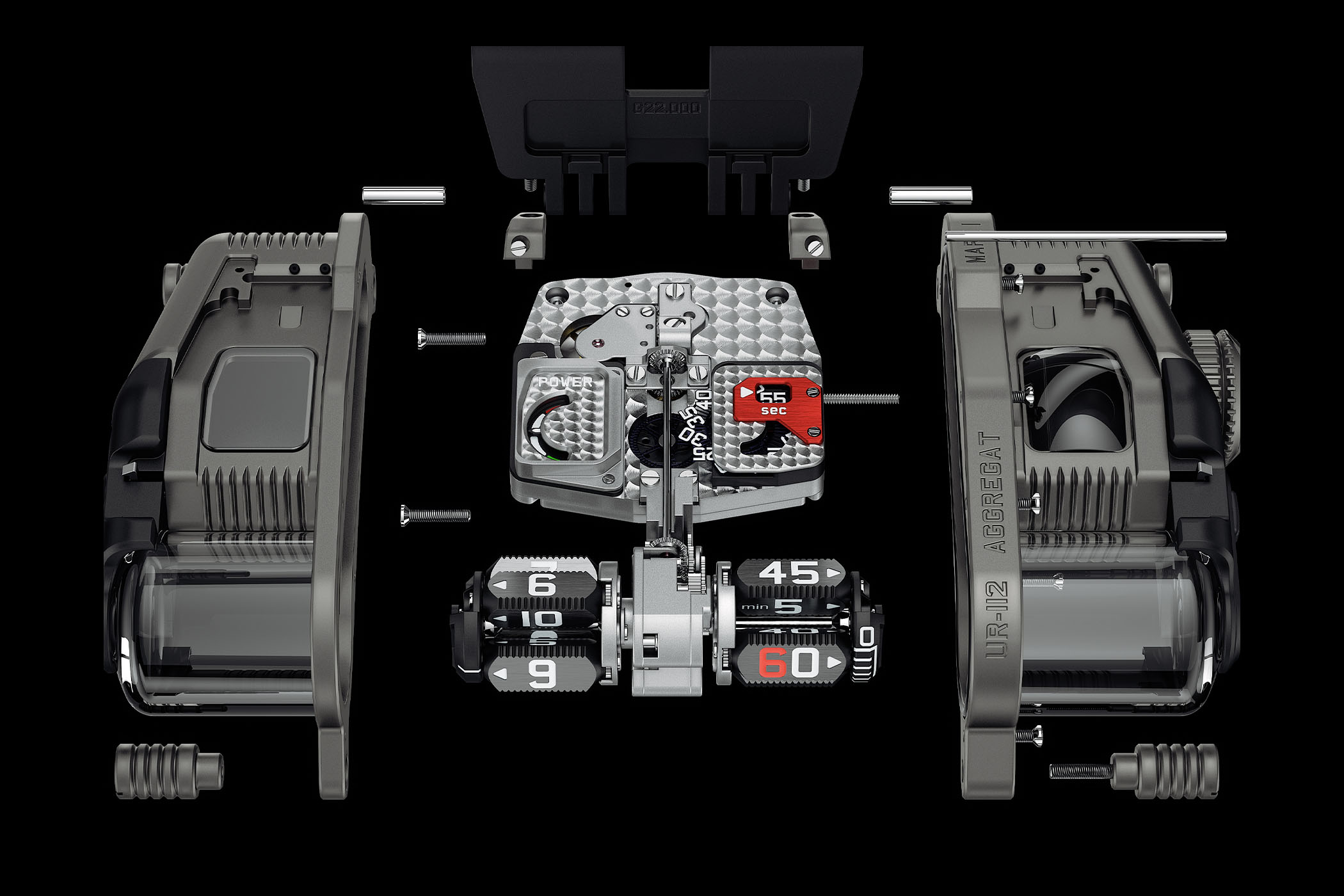
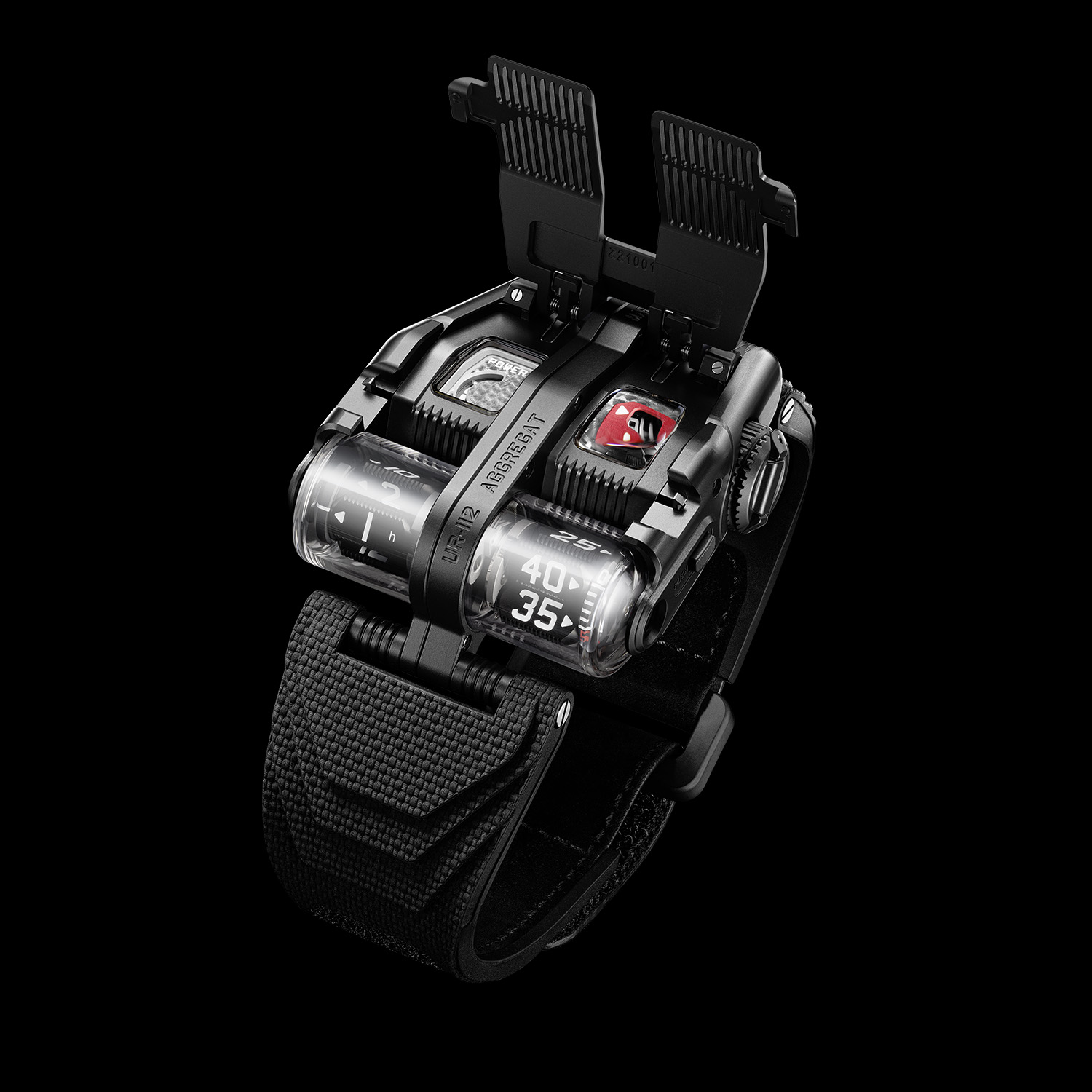

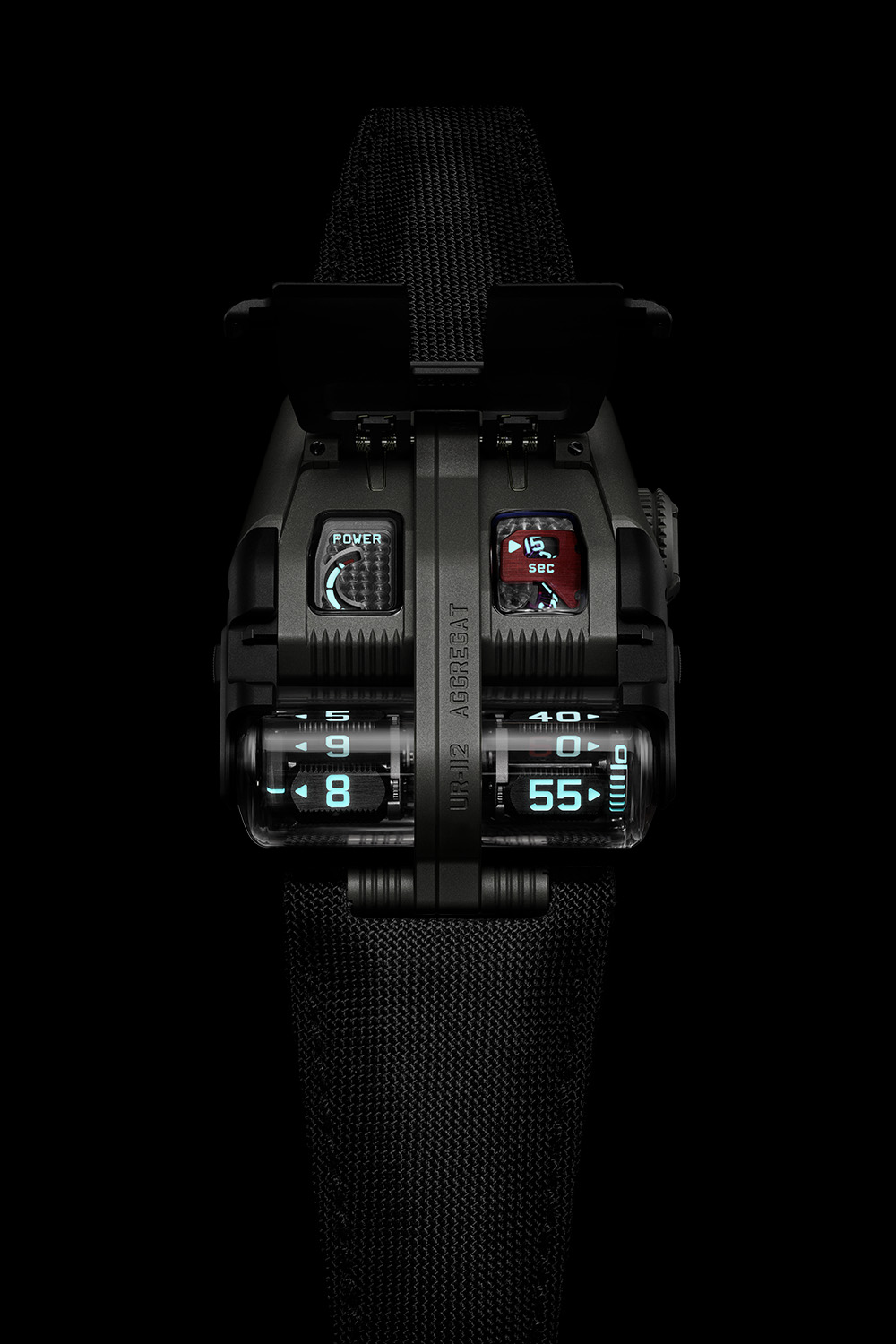
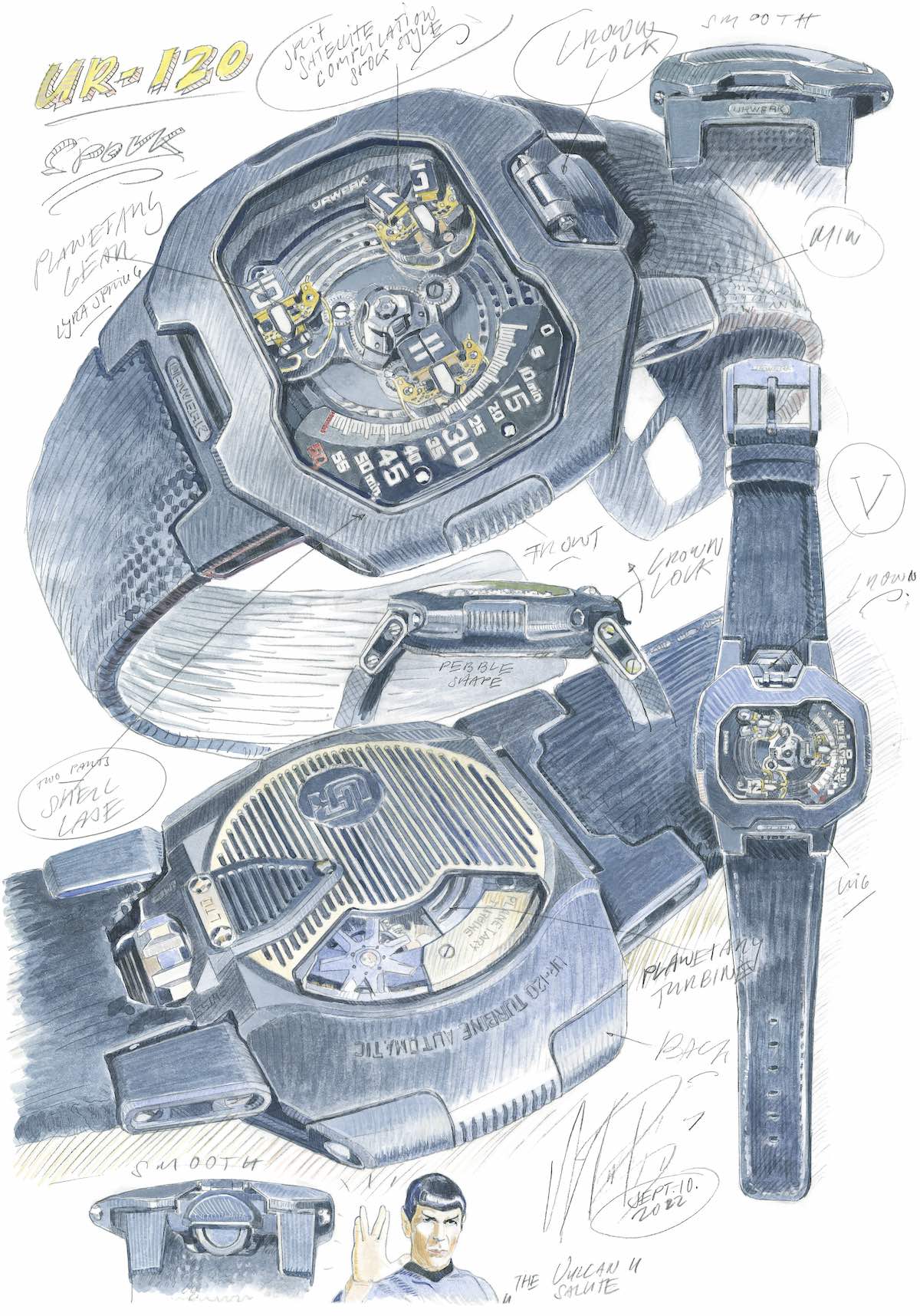
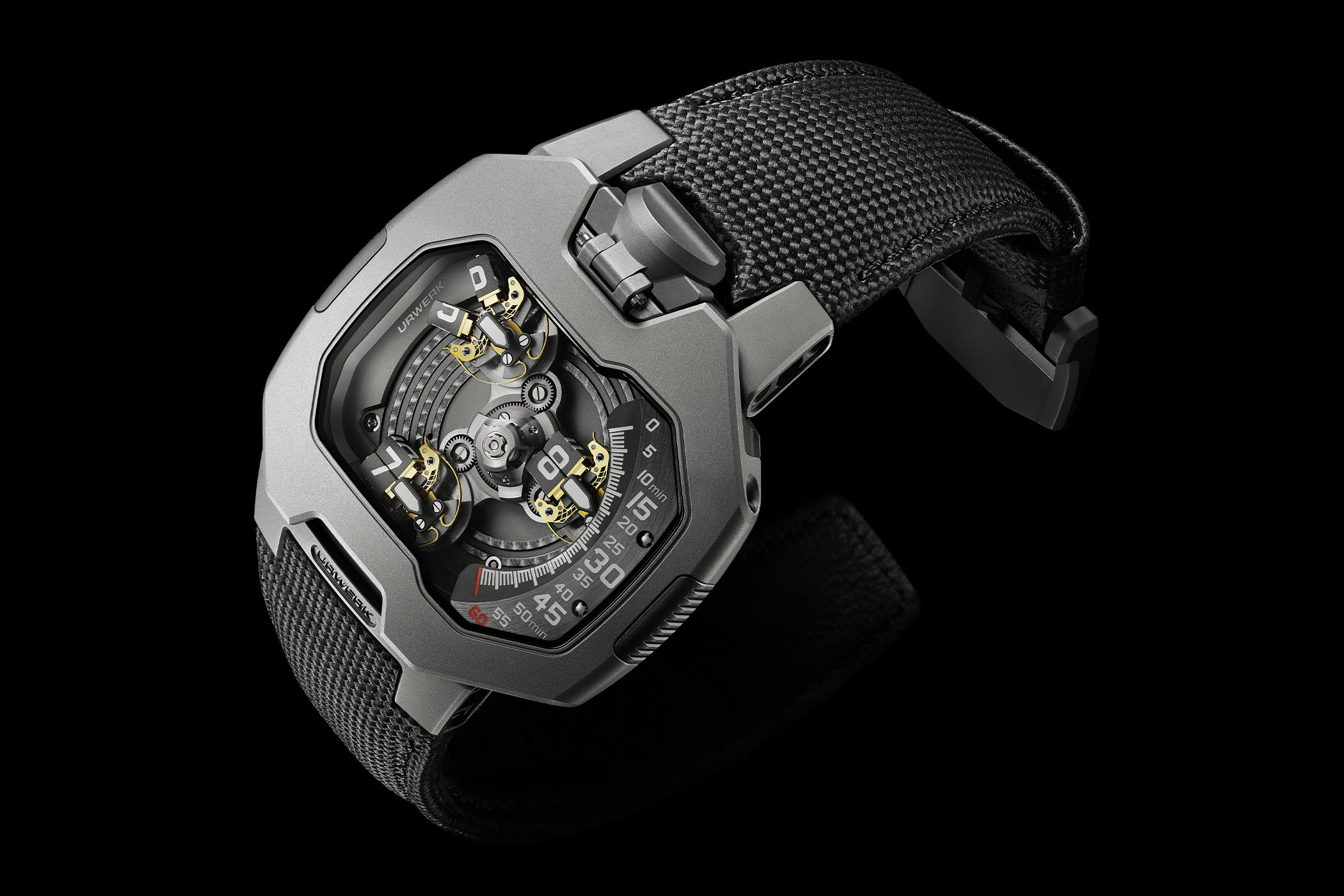
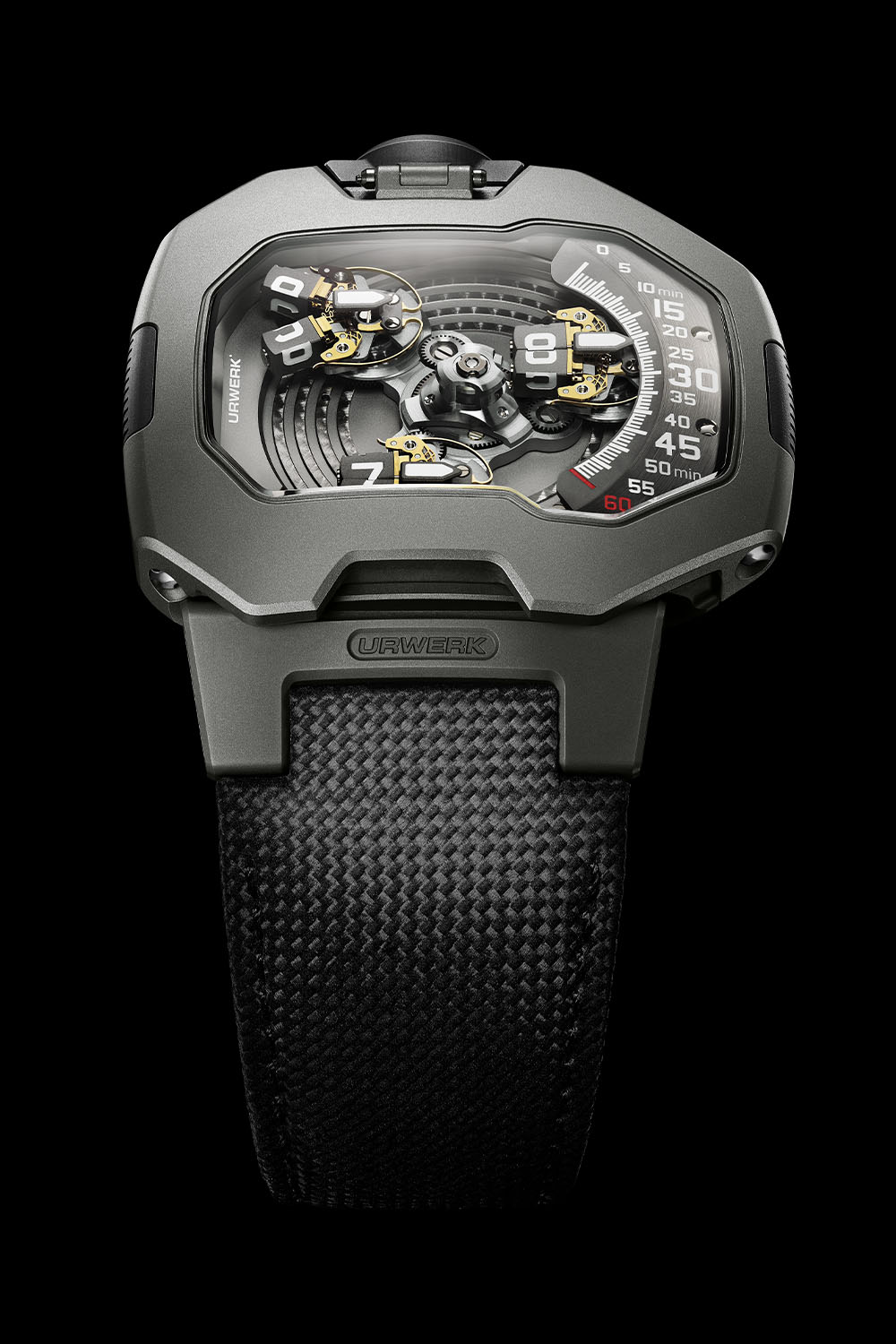
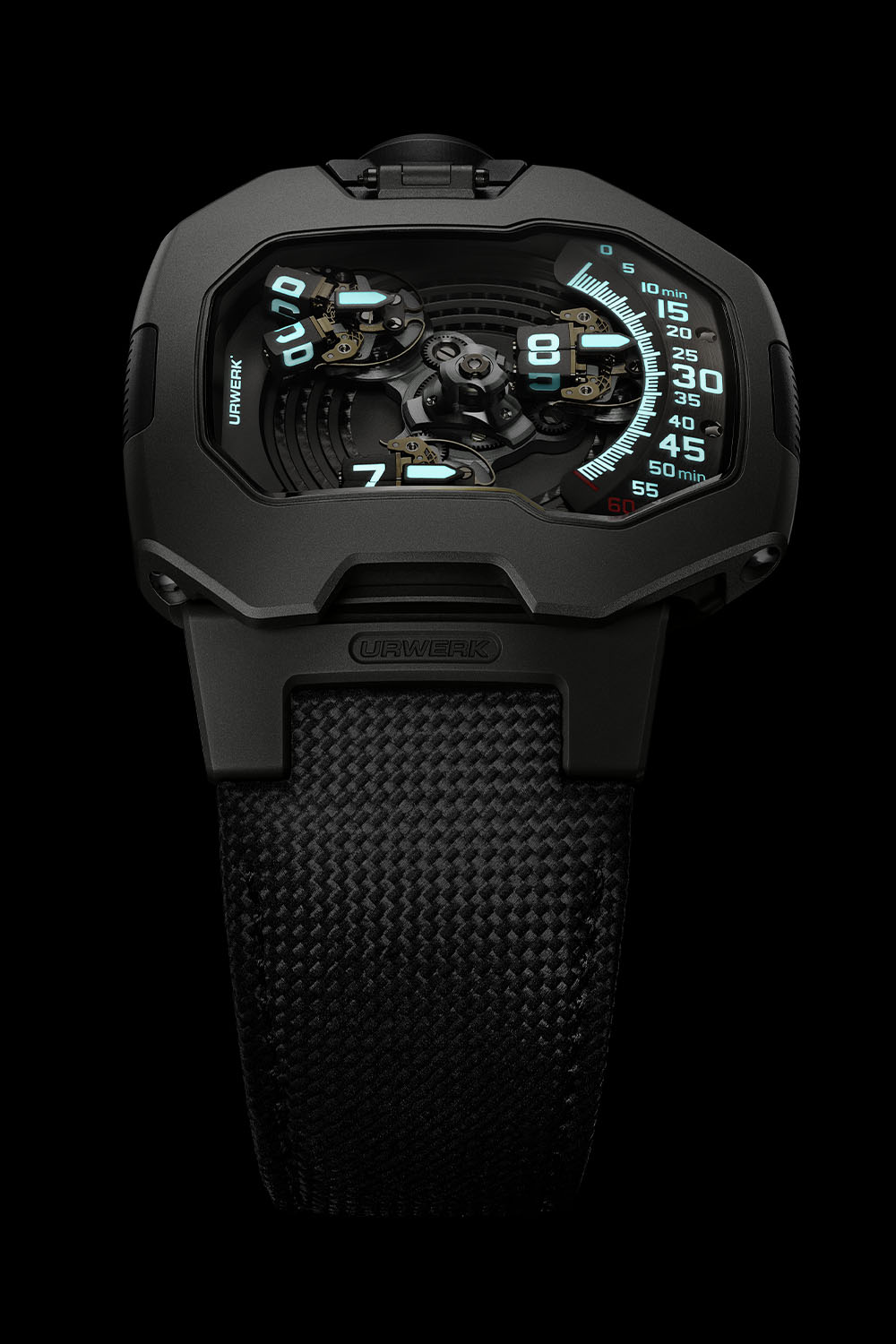



3 responses
Unlimited creativity.
Super ugly.
Love them lateral screws…